Plants: 100 common garden plants
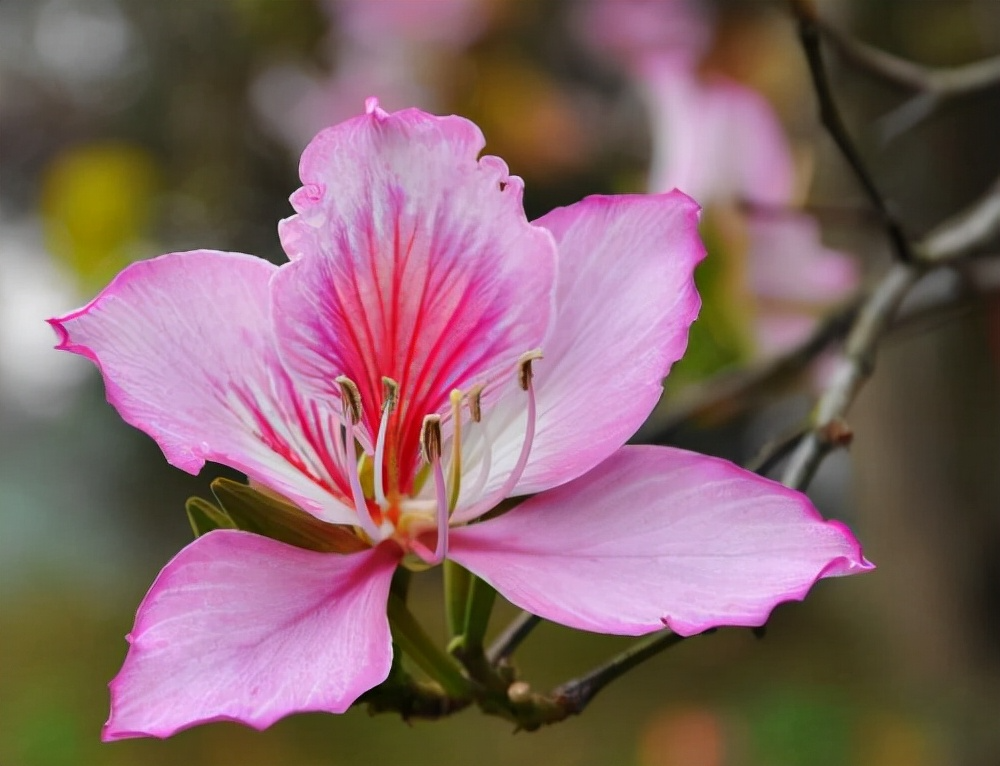
Latin name: Bauhinia blakeana.
Other names: Red Bauhinia , Red Bauhinia
Chinese name of the family: Suaeda
Genus Chinese name: Bauhinia
Habits: It likes light. It is not very cold-resistant. It likes rich and moist soil and avoids waterlogging. It has strong sprouting ability and can tolerate pruning.
Appreciation and application: The flowering period is between winter and spring. The flowers are as big as a palm, slightly fragrant, and the five petals are evenly arranged in whorls. They are red or pink and very beautiful. Bauhinia bracts is evergreen and lush all year round. It is quite resistant to smoke and dust, and is particularly suitable as a street tree. The bark contains tannins , which can be used as a tanning agent and dye. The roots, bark and flowers can also be used as medicine.
2. Banyan tree
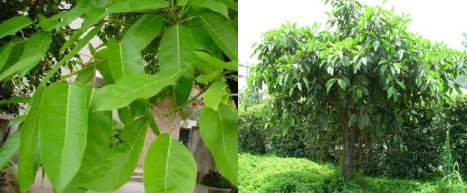
Chinese name of the species: Banyan
Species Latin name: FicusaltissimaBl.
Chinese name: Moraceae
Chinese name: Ficus
Other names: horse banyan , chicken banyan, big green tree , big leaf banyan (Hainan Island)
Ornamental application: The mountain fig is a species of the genus Ficus in the Moraceae family. It is a tall tree with a large crown; its leaves are thick, leathery and shiny; the fruits formed by the cryptic inflorescence are golden yellow when ripe. It is an excellent urban greening tree species. The crown is broad and the tree posture is stable and spectacular. However, the tree is too large and the root system is too developed to be suitable as a roadside tree. It is very suitable for use as a landscape tree and shade tree. It is also an excellent host tree for lac insects .
Growth habit: positive, likes hot and humid climate , resistant to drought and barrenness, wind and air pollution. Resistant to barrenness and drought, wind and air pollution, grows quickly, and is easy to survive after transplantation.
3. Crape Myrtle
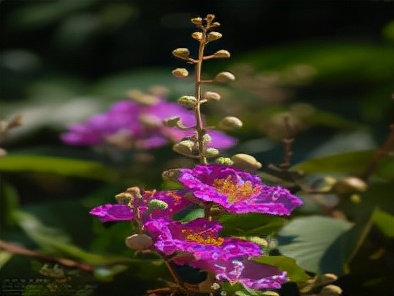
Family: Lythraceae
Genus: Lagerstroemia
Landscape use: Suitable for use as high-grade street trees, landscape trees, forest bathing trees and garden shade trees, and can be planted alone, in rows or in groups. Suitable for all kinds of gardens, campuses, parks, recreational areas, temples, etc., and can be planted alone, in rows or in groups for beautification. It is especially recommended for landscape forest construction. Purple flower varieties are suitable for medium and close distance viewing, while red flower varieties can be used for landscape forests for long-distance viewing.
Growth habit: Sun-loving plant. Needs strong light. Heat-resistant, not cold-resistant, drought-resistant, alkali-resistant, wind-resistant, semi-shade-resistant, pruning-resistant, pollution-resistant, large trees are difficult to transplant. Prefers hot and humid climate.
4. Cat Ogi
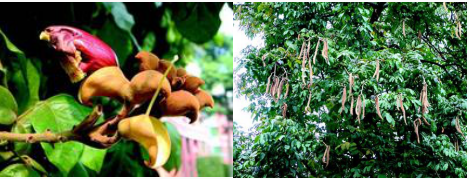
Species: Cattail Tree
Family: Bignoniaceae
Genus: Cattail
Latin name: Dolichandrone cauda-felina (Hance) Benth. et Hook. f
Ornamental habits: Cattail tree is a plant of Bignoniaceae, a deciduous tree, up to 10m tall, with grayish yellow bark. It grows on the edge of sparse forests and sunny slopes at an altitude of 200-300 meters. The capsule is cylindrical, hanging and long, densely covered with brown and yellow hair, like a cat's tail, hence the name Cattail tree. The peak flowering period is between autumn and winter, and the fruit ripens in the following year. Cattail tree flowers are large and beautiful, with good application value
Application: This species can be used as a garden ornamental tree; the wood has straight grain, fine structure, slightly hard and light material, suitable for beams, columns, doors, windows, furniture, etc.; Hainan is mostly used for general furniture, bed boards, house boards, etc. It has fruit value and is an excellent wild ornamental plant. In addition, it can also be used as a timber plant.
5. Holly
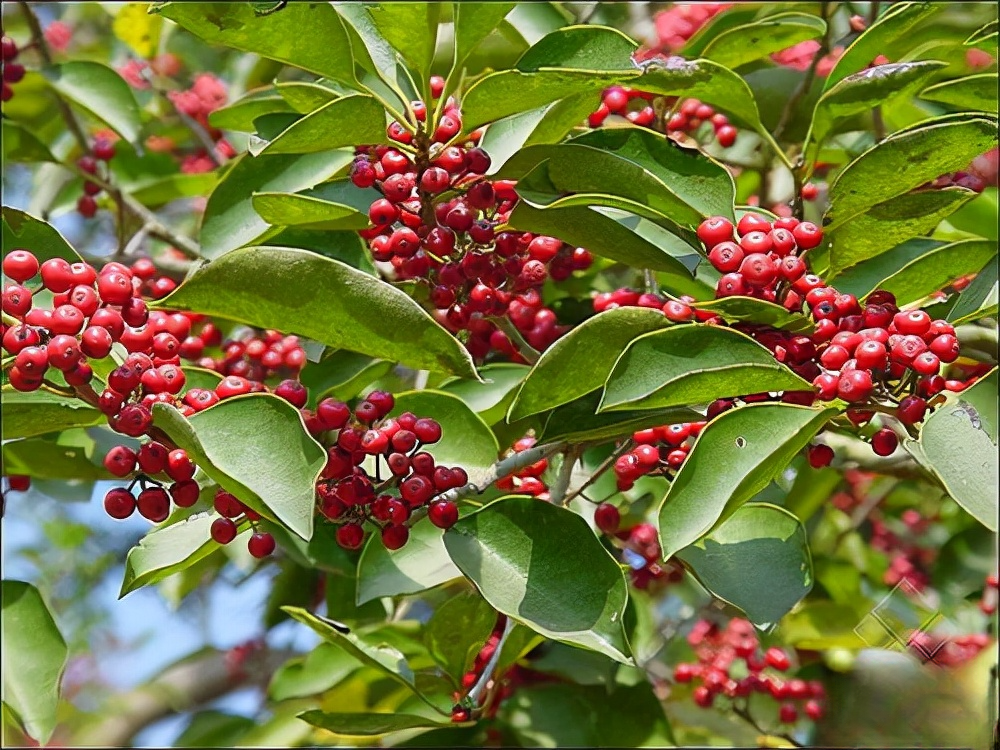
Species name: Ilex red
Family: Ilex
Other names: Wild ash leaf, red coral holly, coral holly
Latin plant, animal and mineral name: Ilex corallina Franch.
Growth habits: It likes light, tolerates shade, is not cold-resistant, likes fertile acidic soil, is relatively resistant to moisture, but not resistant to waterlogging, has deep roots, strong wind resistance, strong germination ability, and is resistant to pruning. It has a certain resistance to harmful gases.
Garden application: Suitable as a courtyard tree. The fruit of the red-fruited holly also has certain ornamental value. It can be planted alone or in groups.
6. Mahogany
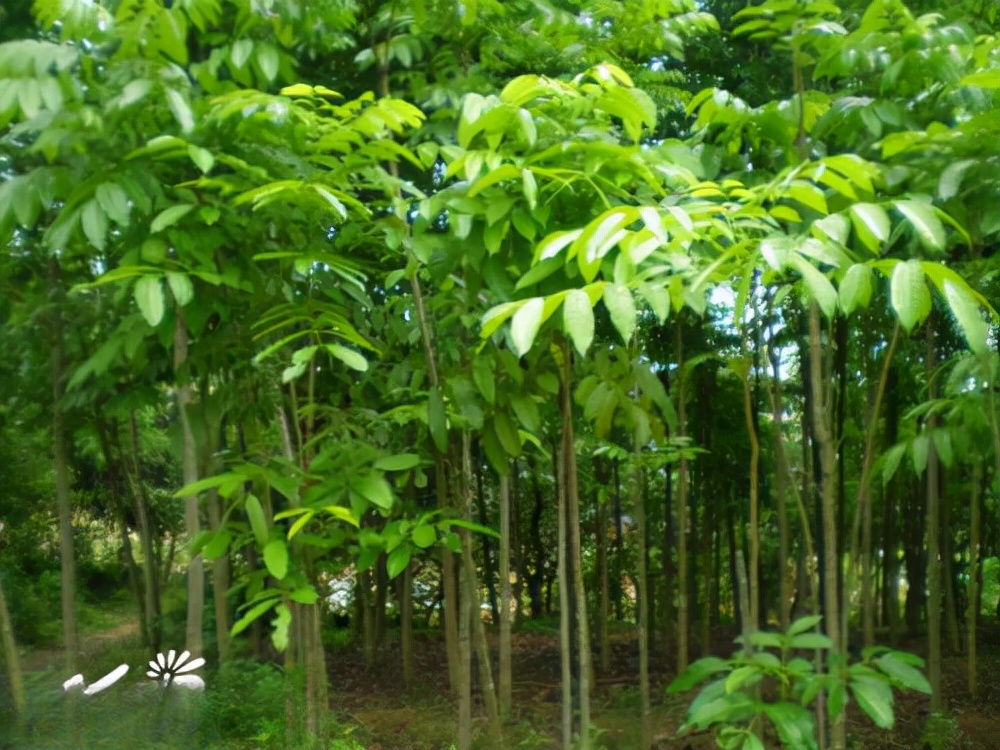
Chinese name: mahogany
【Sunflower】Swietenia mahagoni (L.) Jacq.
Family: Meliaceae
Genus: Mahogany
Morphological description: The bark is light red, the trunk is upright, the wood is beautiful in color, and it is resistant to insect infestation. It is one of the world's precious woods.
7. Ironwood
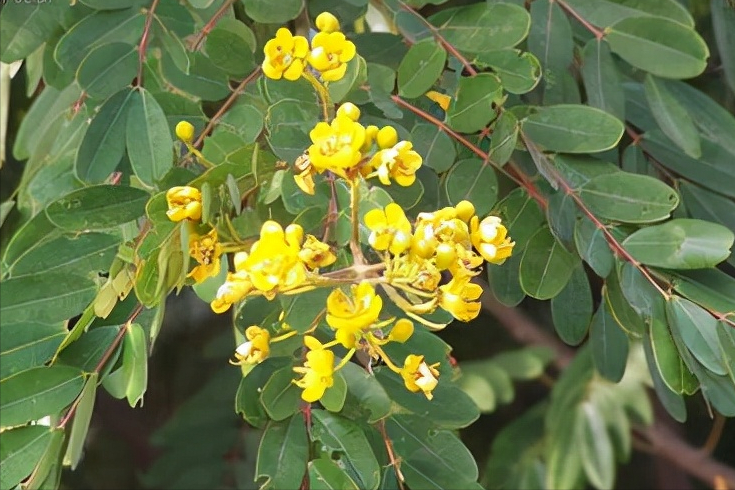
Chinese name: Ironwood
Family: Leguminosae
Genus: Cassia
Scientific Name: Cassia siamea
Other names: Thai mountain lentil , Bombay ebony , Bombay rosewood , blackheart tree
Growth habit: Light: positive plant. Strong light is required. Suitable temperature for growth: 23-30℃.
Garden use: Strong and lush, it is a low-maintenance landscape tree, street tree, shade tree, and forest bathing tree. It can be planted alone, in rows, or in groups in gardens, campuses, parks, recreational areas, temples, etc. It attracts butterflies when it blooms. It grows fast. It is heat-resistant, drought-resistant, moisture-resistant, barren-resistant, alkali-resistant, pollution-resistant, and easy to transplant.
8. Butterfly Fruit
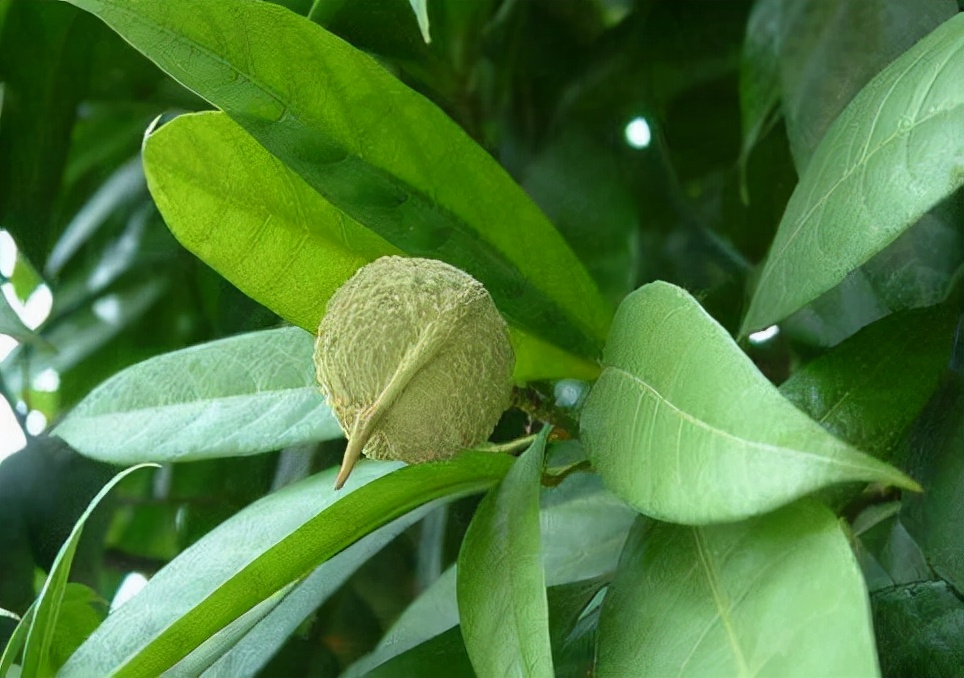
Latin nameCleidiocarpon cavaleriei (Levl.) Airy Shaw
Chinese name: butterfly fruit
Latin family name Euphorbiaceae
Chinese family name : Euphorbiaceae
Conservation value: The butterfly fruit is a rare species, with only one species, and is an economic tree used for both grain and oil. The seed (dry kernel) contains 33-39% oil, 15-18% protein, 21-40% starch, and 2.5-12% sugar. The refined oil can be used for food. The wood is light and soft, easy to process, and can be used for construction and other purposes. The tree has a beautiful shape and dark green branches and leaves. It is a good tree species for greening the surrounding areas and towns.
9. Plane Tree
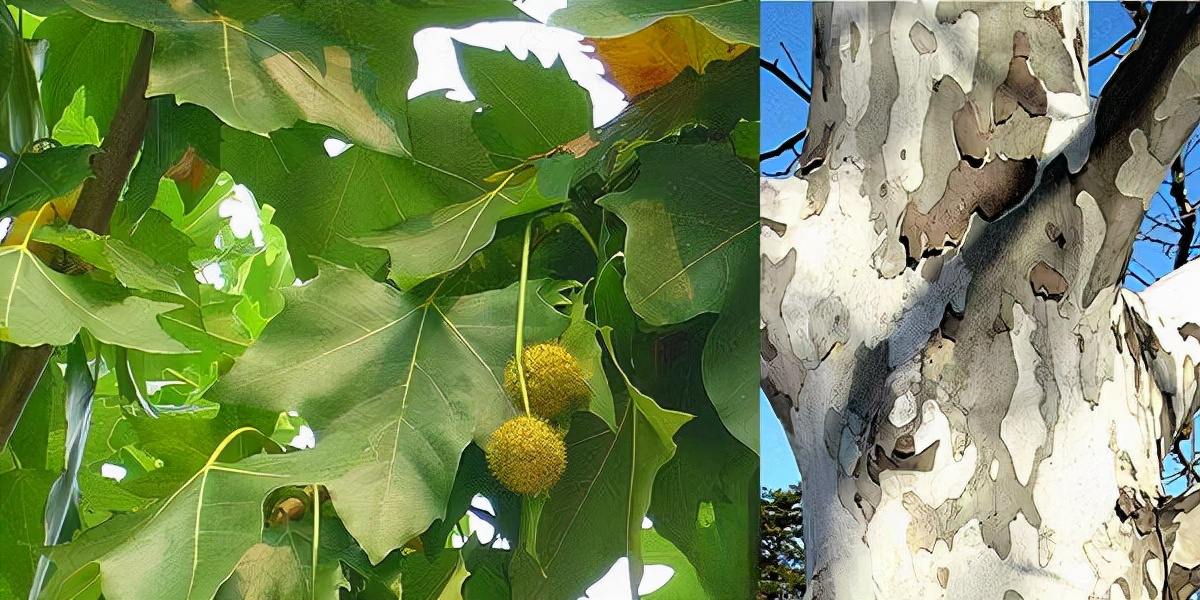
Chinese name: Platanus
Latin name: Platanus ×acerifolia (Ait.) Willd.
Family: Platanaceae
Genus: Platanus
Uses : It is a world-famous excellent garden shade tree and street tree. It is highly adaptable and resistant to pruning and shaping. It is an excellent street tree species and is widely used in urban greening . In gardens, it is planted alone on lawns or open spaces, or in rows on both sides of corridors. It is particularly majestic and spectacular, and is known as the "king of street trees". It is also very resistant to a variety of toxic gases and can absorb harmful gases, so it is quite suitable for greening neighborhoods, factories and mines. The fruit can be used as medicine.
10. Acacia macrophylla

Latin name: Acacia auriculaeformis A. Cunn. ex Benth.
Chinese name: Acacia macrophylla
Common name: Acacia auricula
Family: Mimosaceae
Genus: Acacia
Uses: Because Acacia can grow normally on poor, dry, and hard soils and can withstand strong winds, it is an excellent windbreak and afforestation tree and is a newly introduced species in recent years. The dense crown of Acacia can inhibit the growth of plants under the tree, so it is often planted as a firebreak. The wood of Acacia can be used to make furniture.
11. Cycad
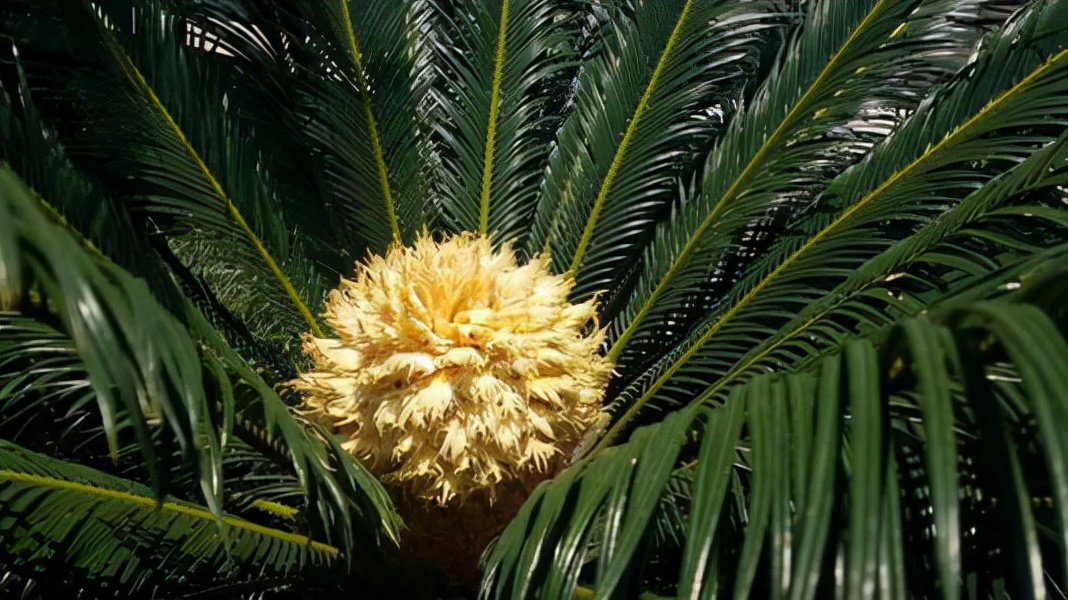
Chinese name: Cycad
Latin name: Cycas revolute
Family: Cycadaceae
Genus: Cycas
Garden use: Cycas revoluta has an elegant shape, a thick trunk, and is as hard as iron. Its feathery leaves are clean, smooth, and evergreen. It is a precious ornamental tree species. In the south, it is often planted beside the steps in front of the courtyard and in the lawn. In the north, it is suitable for large potted plants to decorate the courtyard, corridors, and halls, which is very beautiful.
12. Empress Aoi
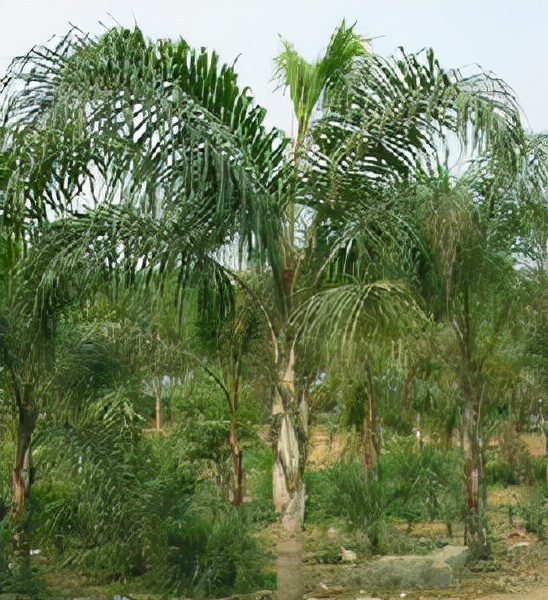
Species name: Queen's Sunflower
Scientific Name: Arecastrum romanzoffianum
Other name: Golden sunflower
Family: Palmaceae
Genus: Goldenrod
Application value: It is a street tree with natural fluffy appearance , showing vigor, strength and independence. It is a unique palm tree species that displays tropical scenery. It is usually planted as a street tree, or planted individually on both sides of the door, or planted irregularly on the waterside or outside the lawn. It can be planted with flowers and trees such as Phoenix trees to add to the garden scenery. Young trees can be planted in large pots and displayed in exhibition halls, meeting rooms , waiting rooms, etc. It is a beautiful foliage bonsai.
13. Livistona
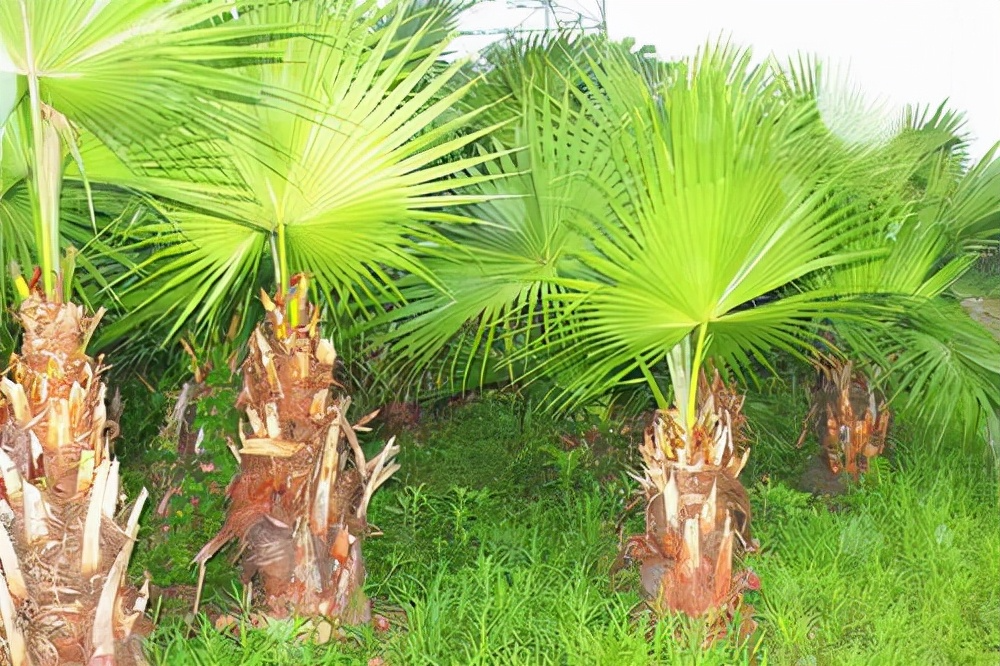
Name: Livistona
Other names: fan-leaf sunflower, sunflower fan leaf
Other names: Fan-leaf sunflower tree (Guangxi Chinese Veterinary Medicinal Plants), Sunflower Tree (Luchuan Materia Medica).
Scientific Name: Chinese fan palm
Latin name: Livistona chinensis
use:
【Nature and flavor and meridians】Sweet, astringent, neutral.
【Function】Seeds: Anti-cancer. Used for esophageal cancer, choriocarcinoma , malignant hydatidiform mole, leukemia. Roots: Analgesic. Made into injection to treat various pains.
[Landscape Use] Planting in clusters or rows, as square and roadside trees and background trees, and can also be used for factory greening. Small trees can be potted for display and viewing. The trunk can be used as a walking stick, umbrella handle, and house pillar. The young shoots are edible. The leaves can be used to make fans.
14. Soft-leaved Eryngium
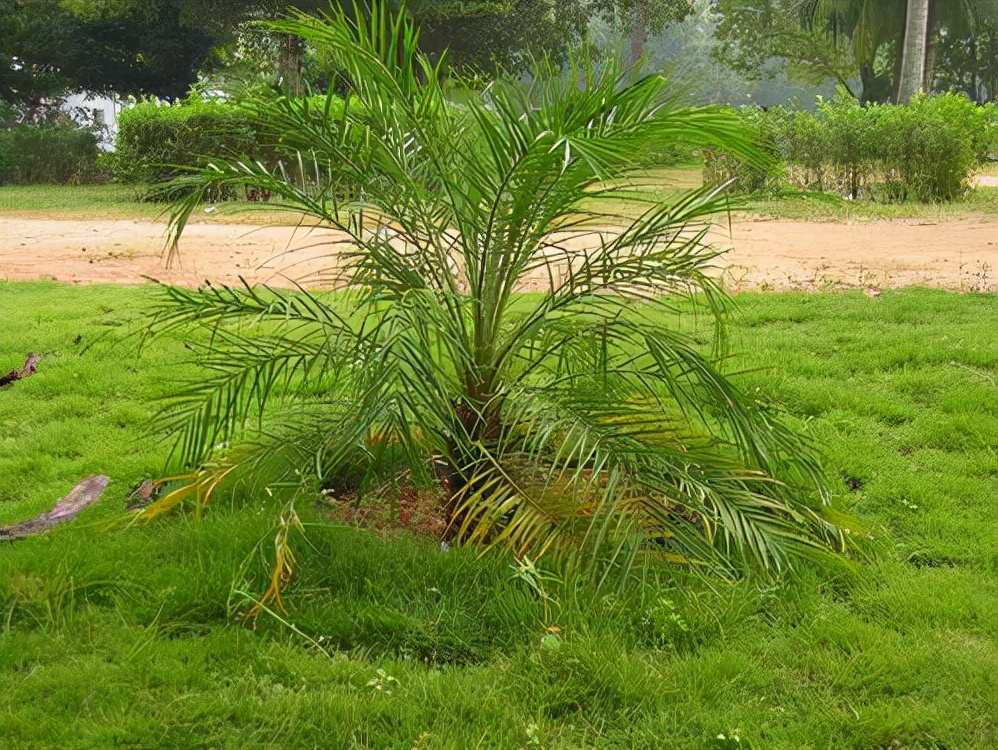
Plant name: Beautiful needle palm
Other name: Soft-leaved thorn palm
Latin name: Phoenix robelenii
Family: Palmaceae
Genus name: Eryngium
Ecological habits : Likes sunshine, moist and fertile soil.
Garden uses : Suitable for courtyard and road greening, flower beds, flower belts, cluster planting, row planting or with landscape stones, can be potted display.
Value and Use: The soft-leaved Eryngium has a strong posture, round and dense leaves, and fine pinnate leaves that are elegant and graceful, showing the tropical scenery of the south. It can be used as a street tree and a garden greening tree in the southern tropical region. Small seedling potted plants can be placed in the living room and bedroom, and large seedling potted plants are suitable for decorating hotel conference rooms and halls, giving people a feeling of living in the south.
15. Royal Coconut
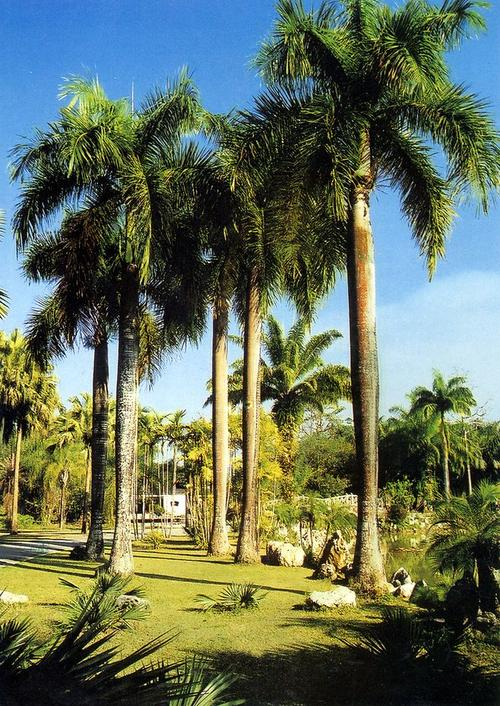
Name: Royal Coconut
Other names: Royal palm , pen tree, big royal palm
学名 : Roystonea regia (HBK.)OF Cook
Distribution: Origin: Cuba , Jamaica, Panama in Central America
Family : Palmaceae
Uses: Suitable for potted plants , hedges, flower beds or clusters . Planted in rows in front of halls and hotels , or as street trees in urban and rural areas, they are very neat and beautiful. In landscaping, three or five of them are often planted irregularly on the lawn or in a corner of the courtyard, and then matched with low shrubs and stones, so that the heights are staggered and full of tropical scenery.
16. Ginkgo
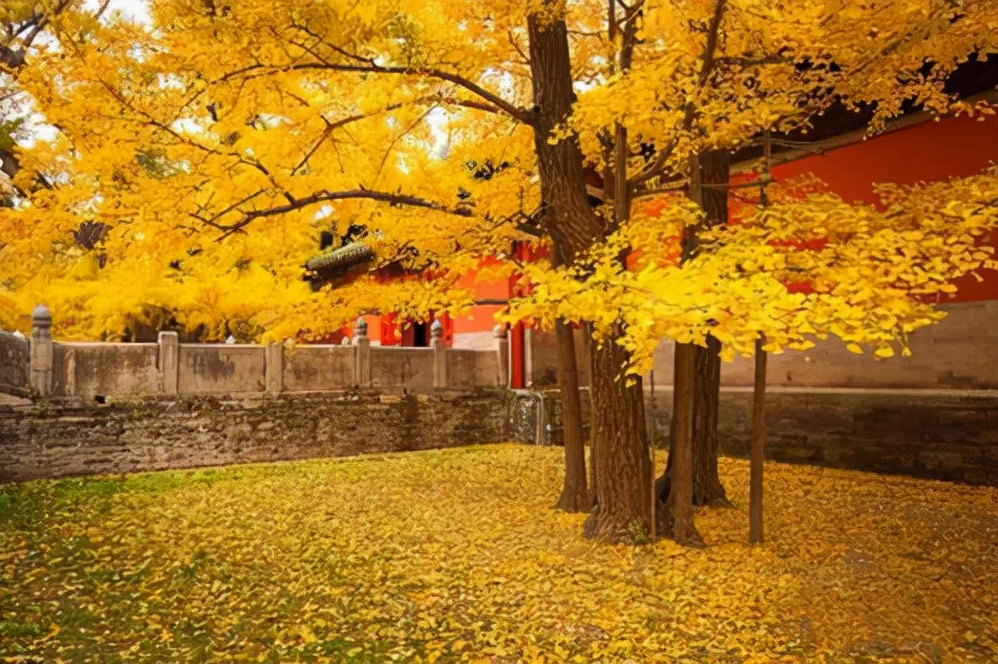
Chinese name: Ginkgo
Latin name: ginkgo
Family: Ginkgoaceae
Genus: Ginkgo
17. Araucaria
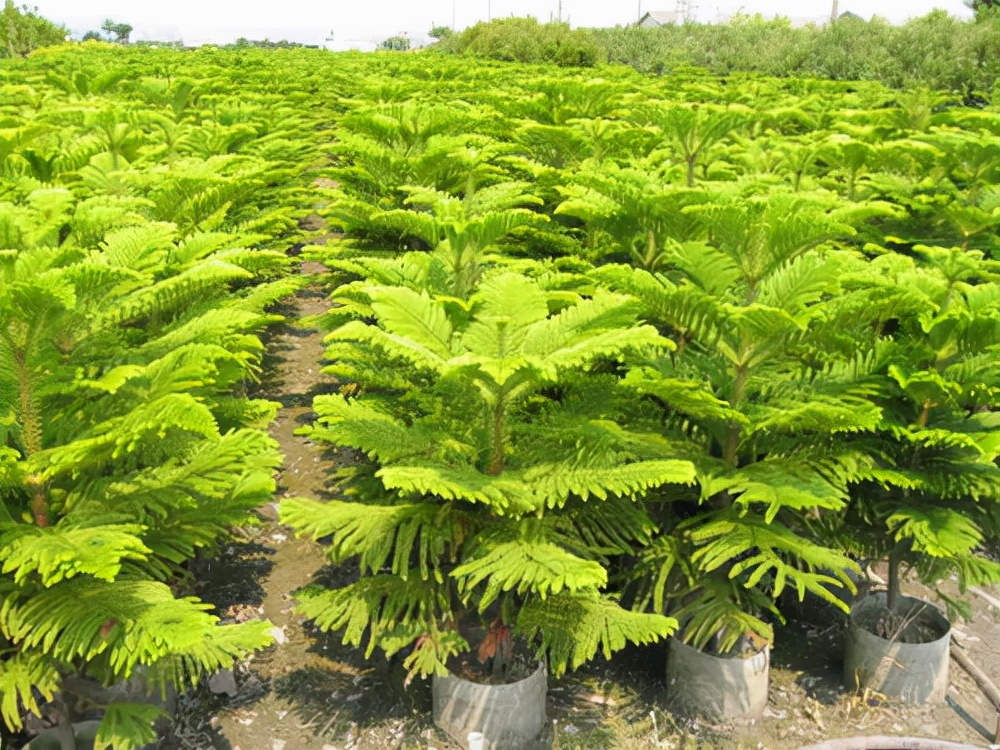
【Chinese name】: Araucaria
【Species Latin name】: Araucaria cunninghamii Sweet
[Species alias] : Norfolk Island pine, small-leaved araucaria, tower-shaped araucaria
【Chinese name】:Araucariaceae
【Chinese name】:Araucaria
Uses of Araucaria
Ornamental value: The Araucaria tree is in the shape of a spire, with lush branches and leaves, and triangular or oval leaves. It is one of the world's famous garden trees. It can be planted in rows, alone, or in a grove. It can also be used as a background tree for sculptures or landscape architecture. It can also be used as a street tree. Seedling potted plants are suitable for embellishing the living room, corridor, and study room of ordinary families. [8]
Wood value: Araucaria has excellent wood quality and is an important timber species in Australia and South Africa. It can be used for construction, appliances, furniture, etc.
18. Masson pine
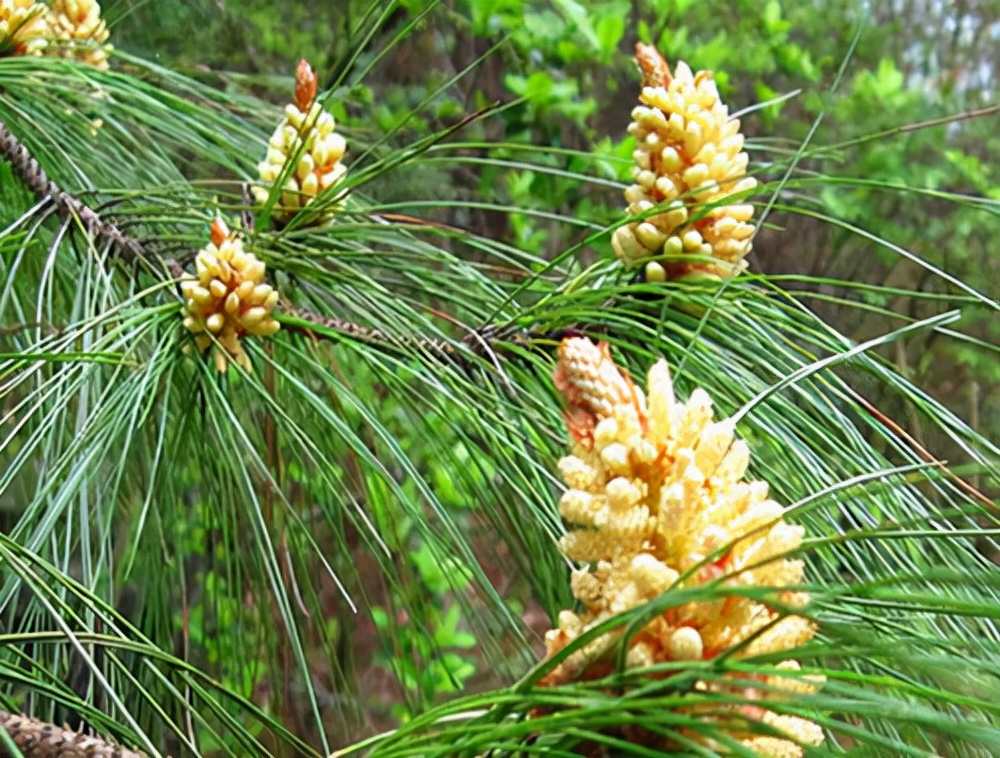
Scientific Name: Pinus massoniana Lamb
Family name: Pinaceae
Other names: pine tree , fir tree, green pine.
Genus name: Pine
Distribution: Masson pine is widely distributed, from Henan and southern Shandong in the north to Guangdong, Guangxi and Taiwan in the south, from the coast in the east to central Sichuan and Guizhou in the west , and is found all over central and southern China . It is generally found below 600-700 meters above sea level in the lower reaches of the Yangtze River , above 1200 meters in the middle reaches, and below 1500 meters in the upper reaches. It is the main timber species in the south. It has high economic value .
19. Loblolly Pine
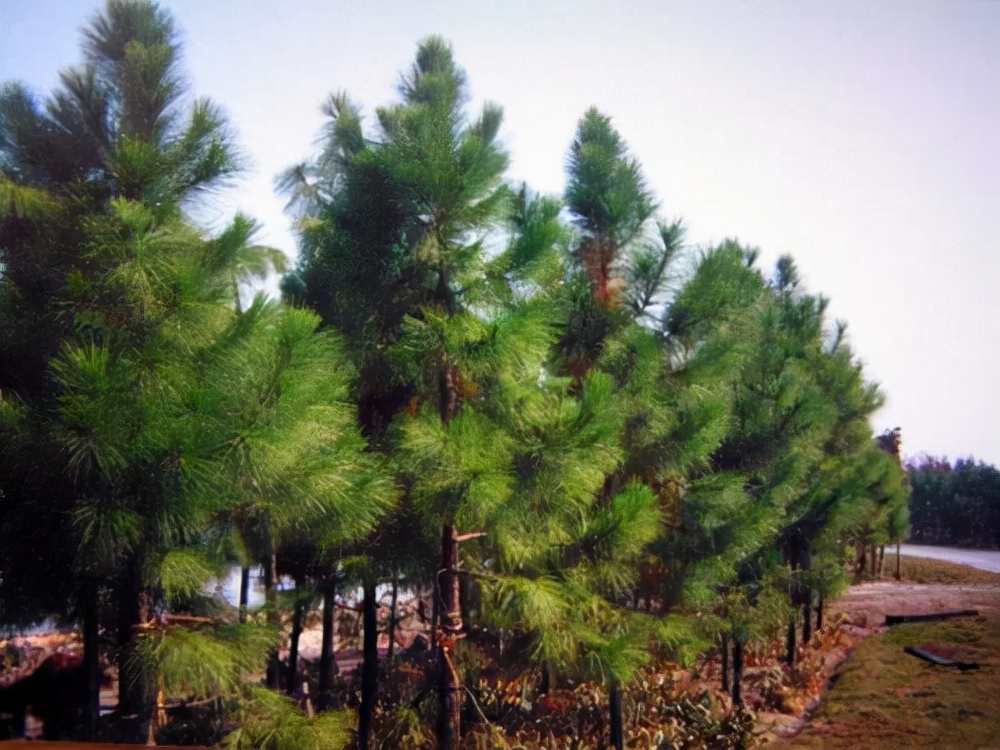
Name: Loblolly Pine
Category: Tree
Family name: Pinaceae
Genus name: Pine
Latin name: Pinus taeda L.
Main uses: Loblolly pine is an important afforestation tree species and industrial timber tree species in the south. Loblolly pine is the strongest and most versatile wood for structural purposes. It can be used for ships, bridges, buildings, pit timber, sleepers, etc. It is an important fast-growing timber tree species; it contains rich resin and is a raw material for medicine, chemical industry and national defense industry.
20. Bald Cypress
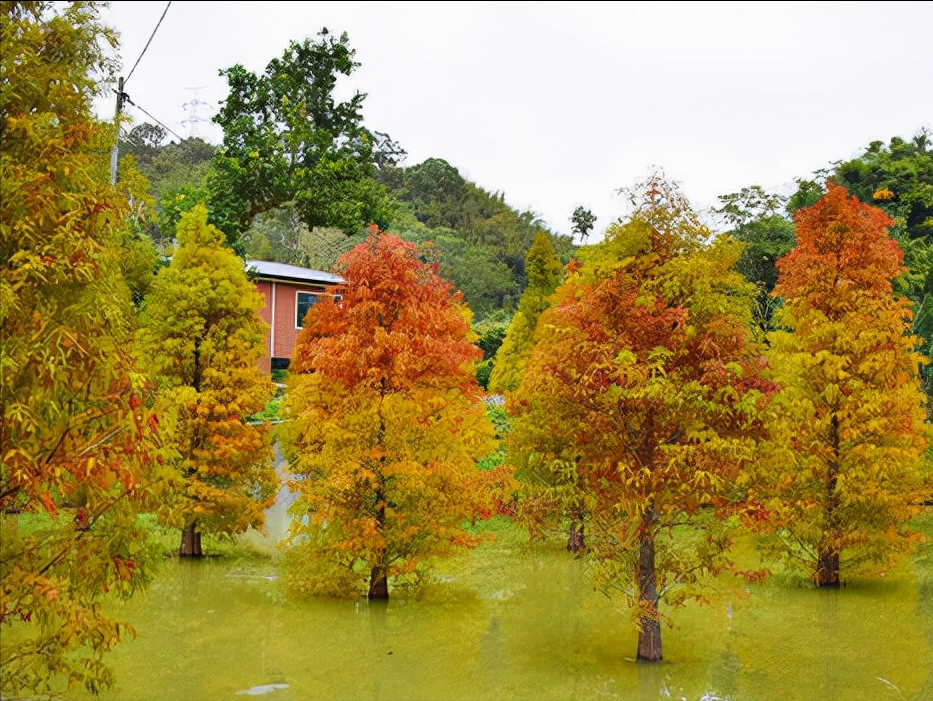
Chinese name: Baldcypress
Latin name: Taxodium distichum
Family: Taxodiaceae
Genus: Taxodium
Value: Baldcypress is native to America and has been successfully introduced for more than 80 years. It has lush branches and leaves, leaves fall late in autumn, and a majestic and beautiful crown. It is a beautiful garden and road greening tree species. In most areas, it can be used as industrial forests and ecological protection forests.
21. Ikesugi
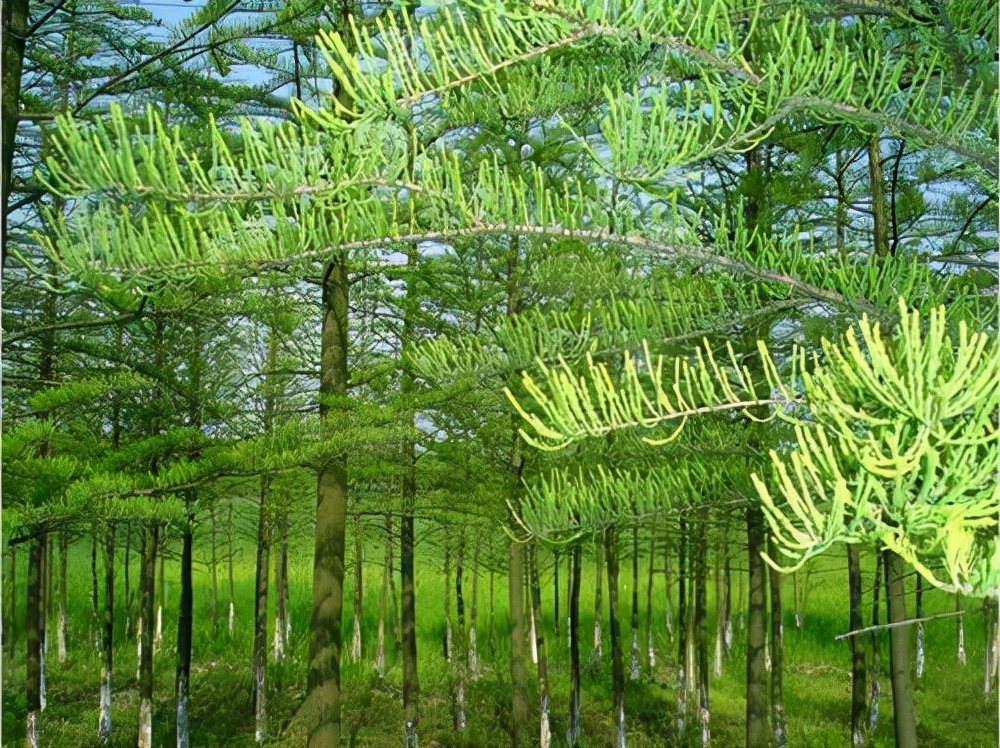
Family: Taxodiaceae
Genus: Taxodium
Latin name: Taxodium ascendens. Brongn
Craft use: The wood has straight texture, fine structure, silky luster, no warping or cracking, and good craft performance. It is a good material for shipbuilding, construction, sleepers, furniture, and vehicles; due to its strong toughness and impact resistance, it is also a raw material for making curved wood and sports equipment. In addition, the canopy of the pond cypress is narrow, extremely resistant to water and humidity, and has strong wind resistance. It is also an ideal tree species for shelter forests and wave-breaking forests in plain water network areas.
22. Juniper
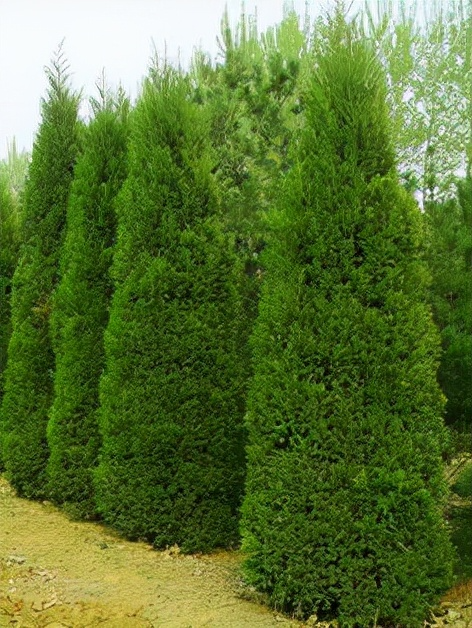
学名: Sabina chinensis (L.) Antoine (Juniperus chensis L.)
Chinese name: Juniperus chinensis
Species name: juniper, juniper
Chinese name: Cupressaceae
Chinese name of the genus: Sabina
Other names: juniper, cypress, juniper, juniper
Garden use: Juniper young trees have neat conical crowns, beautiful tree shapes, twisted trunks and branches, and strange postures. They can be a unique landscape and are a traditional garden tree species. Juniper is widely used in courtyards. It is resistant to pruning and has strong shade tolerance, so it is better than arborvitae as a hedge. The lower branches are not easy to wither, and the color does not change to brown or yellow in winter. It can be planted in the shade on the north side of the building.
23. Podocarpus
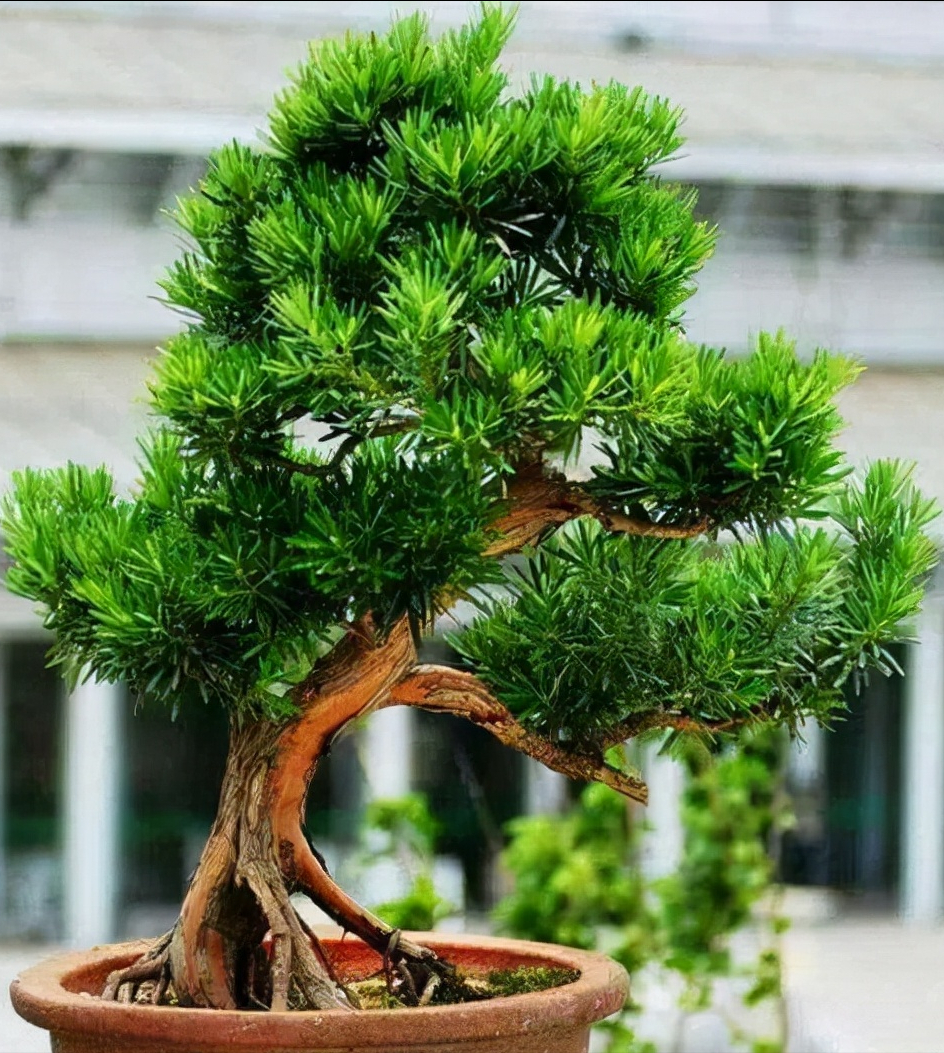
Scientific name: Podocarpus macrophyllus (Thunb.) D. Don
Family: Podocarpaceae
Genus: Podocarpus
Application: Solitary tree | Indoor potted plant | Flower bed flower. Because of its quaint shape and the unique combination of seeds and stalks, it is often planted in temples and houses in the south. It can be planted in front of the door, planted alone in the courtyard, or matched with rockery and lake stones in a corner of the wall. Variegated Podocarpus can be planted as a flower bed, or arranged in a flower bed or potted for indoor appreciation. Small-leaved Podocarpus can also be planted as a garden hedge .
24. Lotus Magnolia
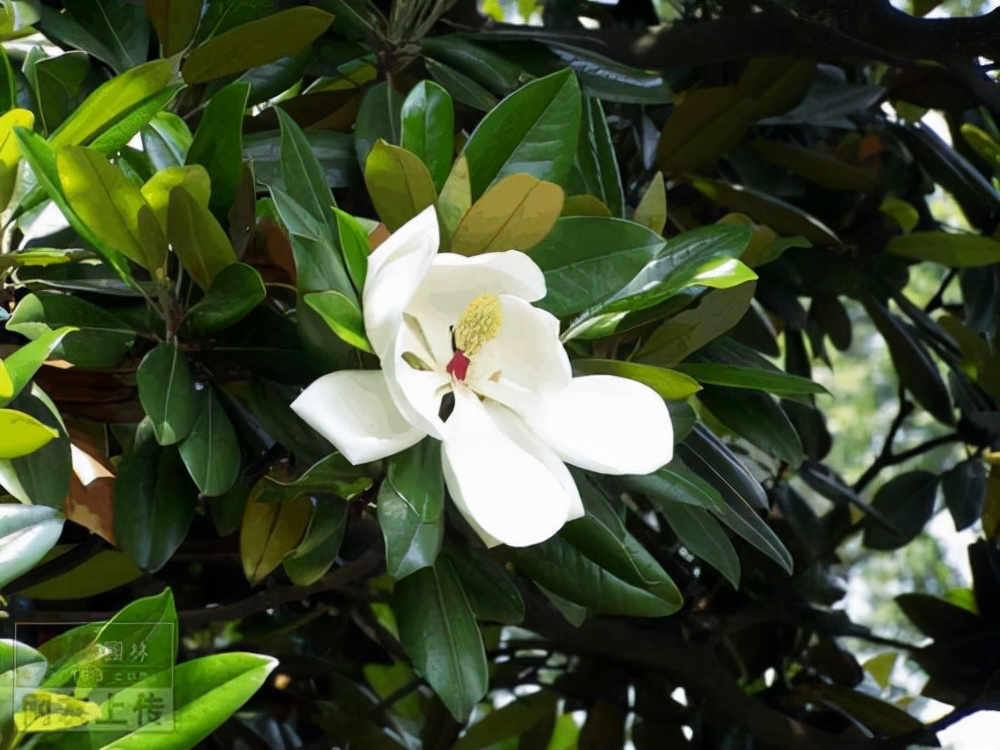
【Scientific Name】Magnolia Grandiflora Linn.
[Other names] Magnolia grandiflora, lotus magnolia, foreign magnolia
【Family 】Magnolia
【Latin name】Magnolia Grandiflora
【Origin】South America
25. Michelia lechangensis
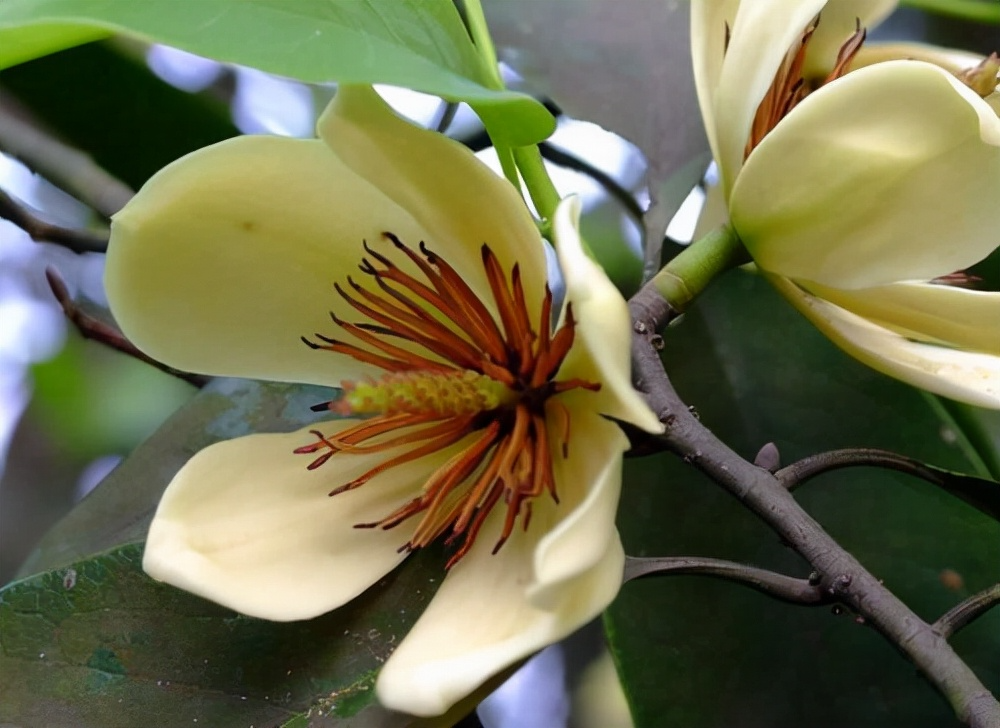
Species name: Michelia lechangensis
Scientific Name: Michelia chapensis
Other names: Southern white orchid, Guangdong Michelia, Jinglie white orchid, Jinglie Michelia
Family: Magnoliaceae
Genus: Michelia
Use in gardens: The trunk of Lechang Michelia is tall and straight, the shade is dense, and the fragrance of the flowers is intoxicating. It can be planted alone or in groups in the garden, and can also be used as a street tree .
26. Papaya
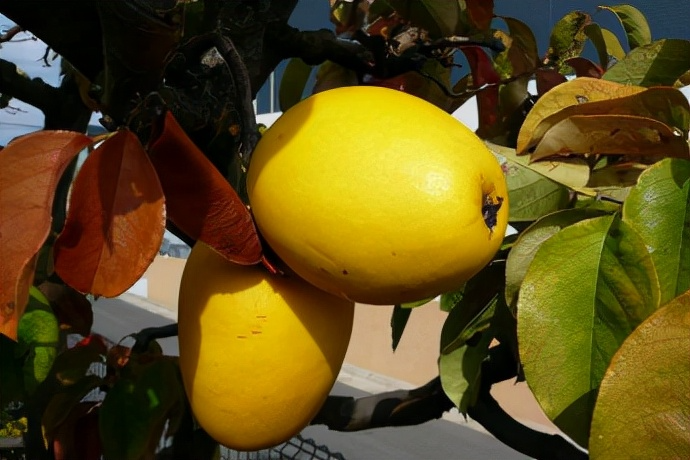
There are three main species of papaya:
1. Papaya (Chaenomeles sinensis Koehne), also known as papaya crabapple, smooth-skinned papaya, hawthorn, wood plum , and wood pear .
2. Wrinkled papaya (Chaenomeles speciosa Nakal), also known as stemmed crabapple, iron-stem crabapple , iron-footed pear, Sichuan papaya, and Xuan papaya.
3. Hairy papaya ( Chaenomeles cathayensis Schneid), also known as wood peach and hairy leaf papaya .
[Chinese alias] papaya, papaya, stone melon, puff fruit, milk melon, wooden winter melon, longevity fruit, longevity gourd , milk gourd
【Scientific name】Carica papaya LINN.
[Classification] Caricaceae, Carica
27. Poinciana
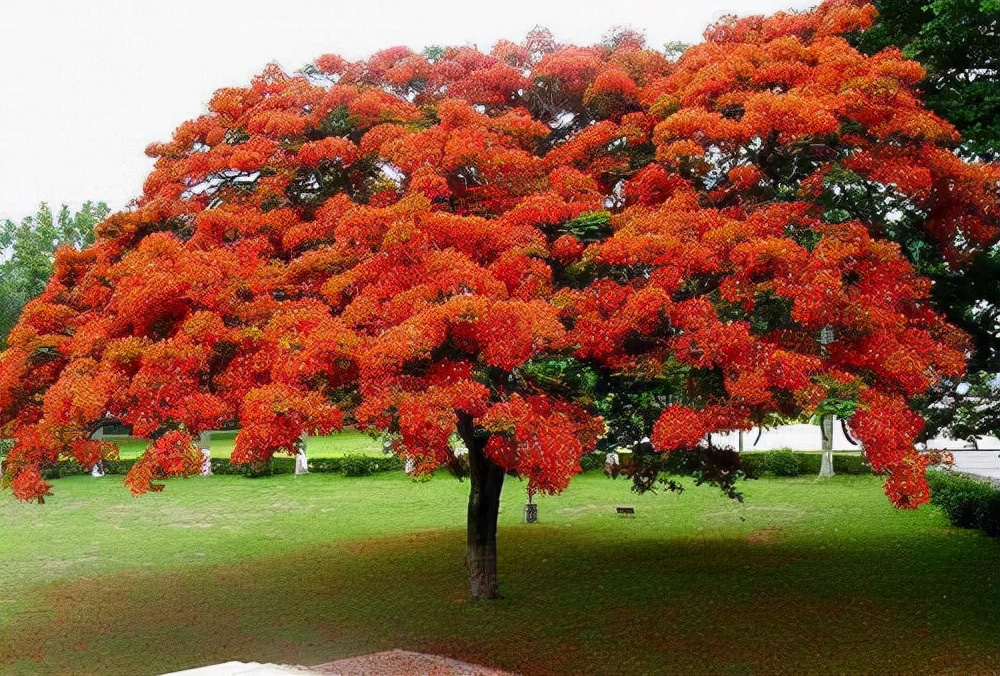
Latin name: Delonix regia (Boj.) Raf.
Family: Leguminosae
Genus: Poinciana
Uses : Street trees : Street greening trees have a microclimate effect of cooling and increasing humidity in summer, and are landscape trees that green, beautify and scent the environment .
28. Taiwan Acacia
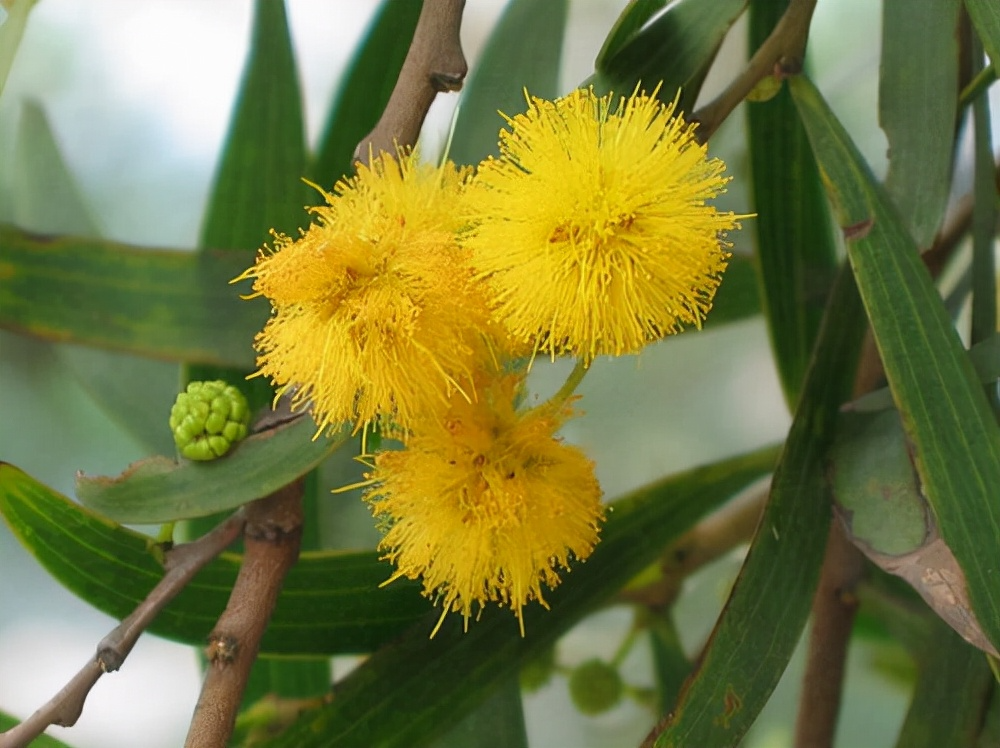
Name: Taiwan Acacia
Category: Evergreen tree
Other names: Taiwan willow, acacia, acacia, osmanthus
Latin name: AcaciaconfusaMerr.
Family name: Fabaceae Acacia
Landscape use: The tree has a lush green crown and is an excellent low-maintenance shade tree, street tree, garden tree, shade tree, windbreak tree, and slope protection tree. Young trees can be used as hedges
Acacia trees. They can be planted alone, in rows or in groups in gardens, campuses, parks, recreational areas, temples, etc. They are beautiful. They are especially suitable for seaside greening. Their flowers can attract butterflies and birds.
29. Albizia Julibrissin
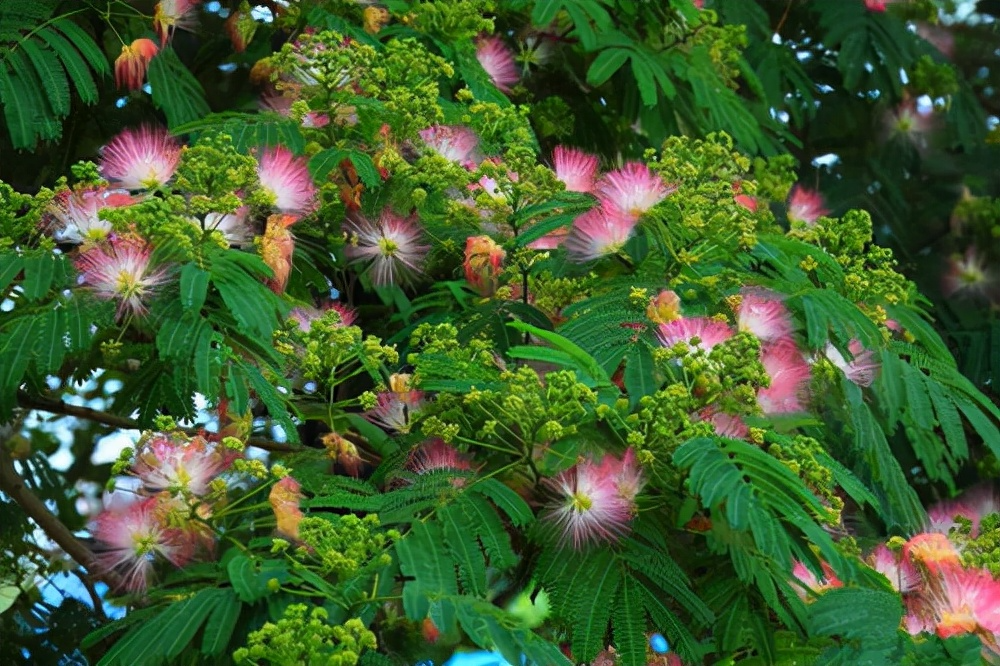
Family: Leguminosae
Genus: Albizzia
Other names: "Ma Ying flower", "Fluff flower tree", "Hehun", "Yehua", "Bird velvet"
Latin name: Albizzia julibrissin Durazz
Ornamental value and garden use:
The tree has a beautiful posture and elegant leaves. In midsummer, the tree is covered with colorful and fragrant velvet flowers, which can create a gentle and comfortable atmosphere. It is suitable for garden shade trees and roadside trees. It can be planted at the edge of the forest, in front of the house, on the lawn , on the hillside, etc. It is an ornamental tree for roadside trees, garden shade trees, greening around the four sides and garden embellishment. The bark and flowers are used as medicine, the young leaves are edible, the old leaves are soaked in water and can be used for washing clothes, and the wood can be used to make furniture, etc.
30. Camptotheca acuminata
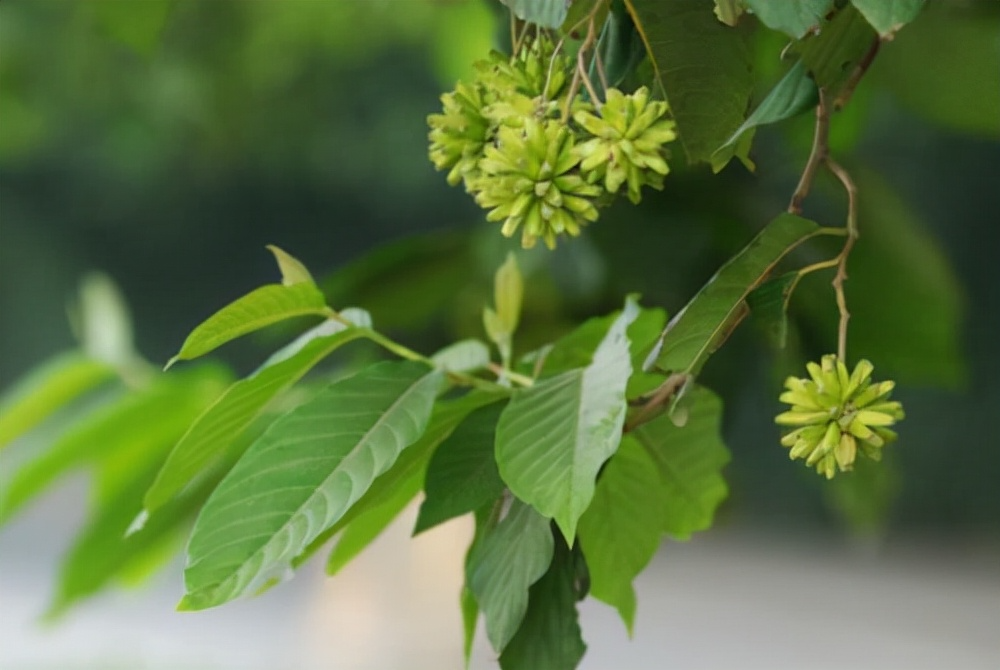
Family: Blueberry family
Genus: Camptotheca
Latin name: Camptotheca acuminata
Landscape uses: Garden shade tree, street tree , with a straight trunk and a wide crown . This species grows quickly and is an excellent garden tree and street tree. It can be used as an excellent tree species for greening cities and gardens.
31. Blackthorn
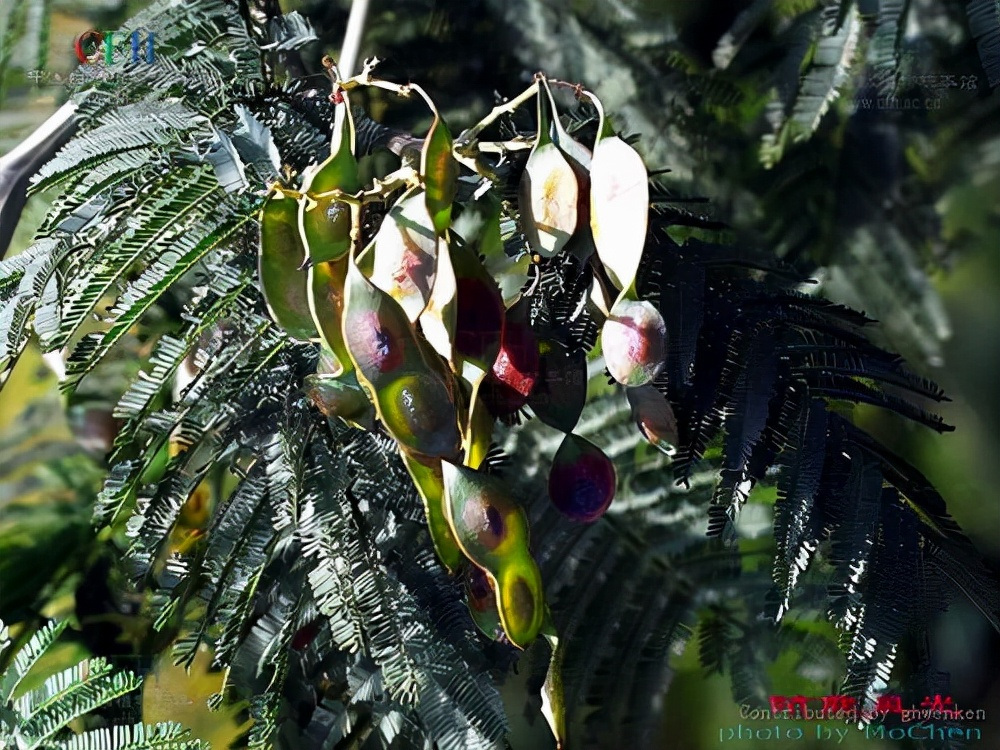
Chinese name: Blackthorn
Species name: Acacia mearnsii
Chinese name of the family: Mimosaceae
Genus Chinese name: Acacia
32. Red Bean Tree
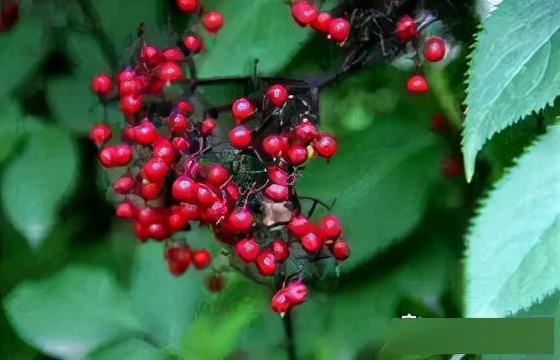
Latin name: Ormosia hosiei Hemsl. et Wils
Chinese name: Red bean tree
Latin family name: Leguminosae
Chinese family name: Leguminosae , Papilioideae
Garden value:
The red bean tree in Sichuan is a deciduous broad-leaved tree. In Sichuan, deciduous tree species can meet people's environmental protection and energy-saving requirements for shading in summer and collecting light and heat in winter.
Deciduous tree species are not easily affected by low temperatures and freezing in winter. As global climate change moves toward extreme states, this will become a consideration when people choose tree species for landscaping .
33. Hainan Red Bean
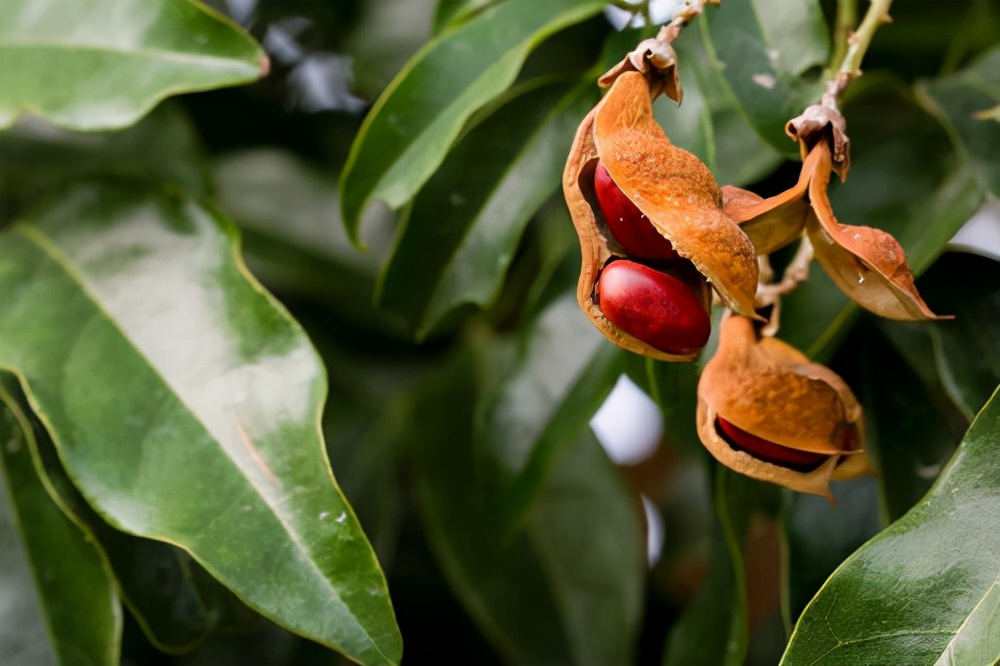
Latin name: Ormosia pinnata (Lour.) Mer
Family: Leguminosae
Genus: Red Bean
Other names: large calyx red bean, feather leaf red bean, duck green, insectivorous
34. Umbrella
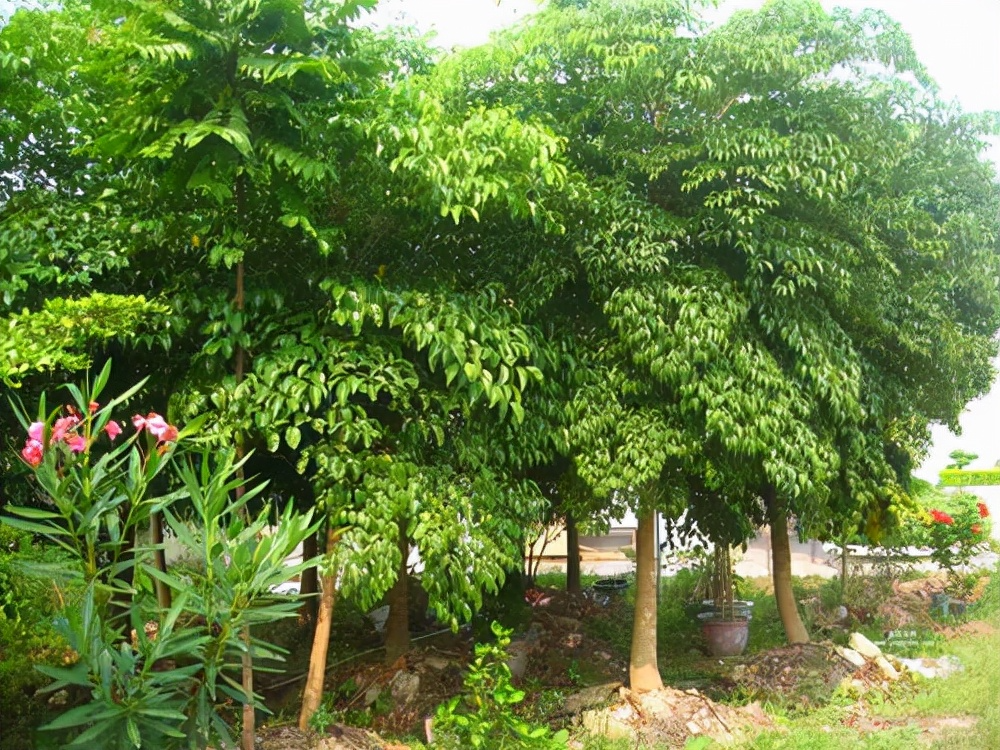
Other names: Luosanfeng, Huangsanfeng, Dasheyao, Wujiatong
Latin name: Heteropanax fragrans
Family name: Araliaceae
Genus name: Polytrichum commune
Application and appreciation: The tree shape of the umbrella maple is straight, with dense branches and leaves. It can be planted alone or in groups in the courtyard. Potted plants can be used as indoor ornamental trees, mostly used in solemn occasions. Around Christmas in winter, they are often placed in restaurants, hotels and some families as Christmas tree decorations.
35. Liquidambar
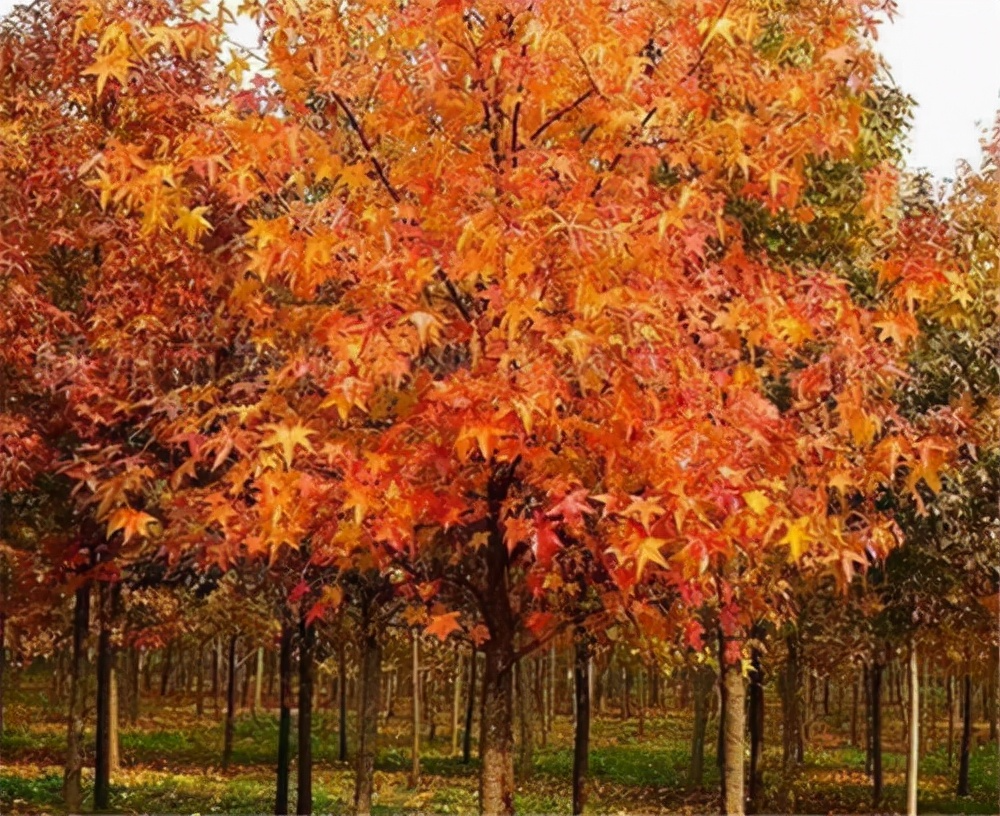
Family: Hamamelidaceae
Genus: Liquidambar
Garden use: It can be planted as a shade tree in the garden. It can be planted alone or in groups on the grassland, or mixed with other trees on the hillside or by the pool. Liquidambar has strong fire resistance and resistance to toxic gases, so it can be used for greening factories and mines. It is a good shade tree in the garden, especially in the south, where the autumn scenery is mainly the red leaves of the Liquidambar. It is also used as a street tree.
36. Honeysuckle

Family: Caprifoliaceae
Genus: Honeysuckle
Latin name: Lonicera Japonica
37. Weeping Willow
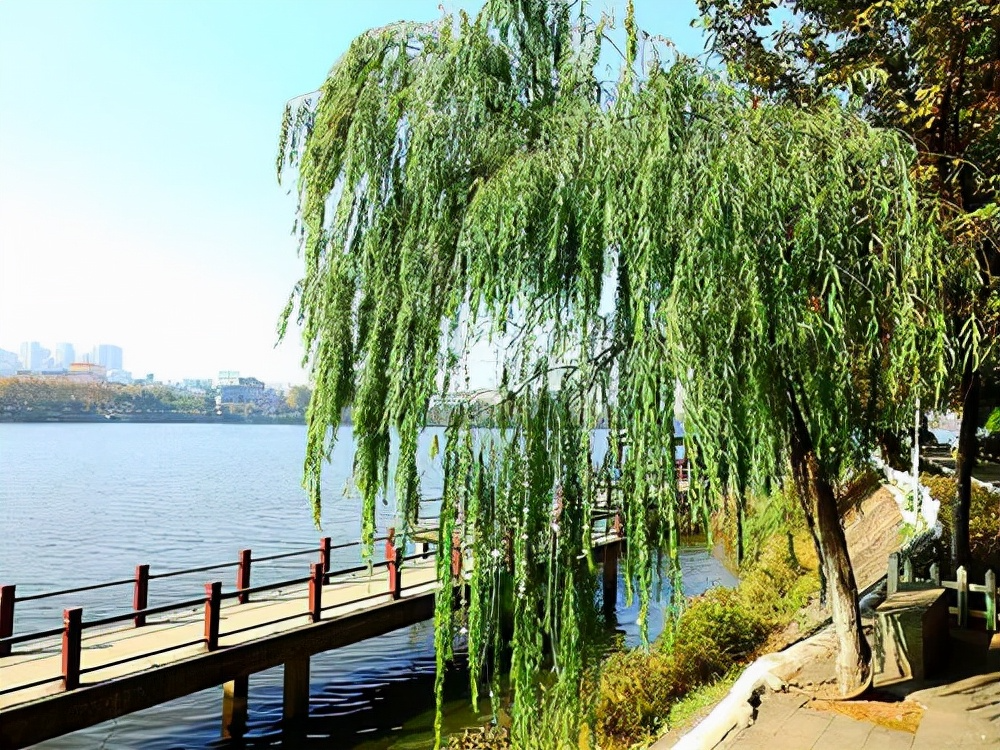
Latin name: Salix babylonica
use
Ornamental features and garden uses: It is an important garden ornamental tree. It can also be used as a street tree, a garden shade tree, a bank embankment tree, and a plain afforestation tree. In addition, weeping willows are highly resistant to toxic gases and can absorb sulfur dioxide, so they are also suitable for factory greening.
Economic use
The wood is white and tough, and can be used to make small farm tools and utensils; the branches can be used to weave baskets, boxes, etc. The branches, leaves, flowers, fruits and fibrous roots can all be used as medicine.
38. Bayberry

Name: Myrica rubra (Lour.)Zucc.
English name: China Waxmyrtle, China Bayberry
Family name: Myricaceae
Gardening: When the fruit is ripe, it is full of red and lovely, and is an excellent fruit-viewing tree species. It is suitable for planting in clusters or rows on roadsides, lawns, or as a space divider, a hidden green wall, and an excellent tree species for factory and mine greening and urban sound insulation.
39. Boxwood
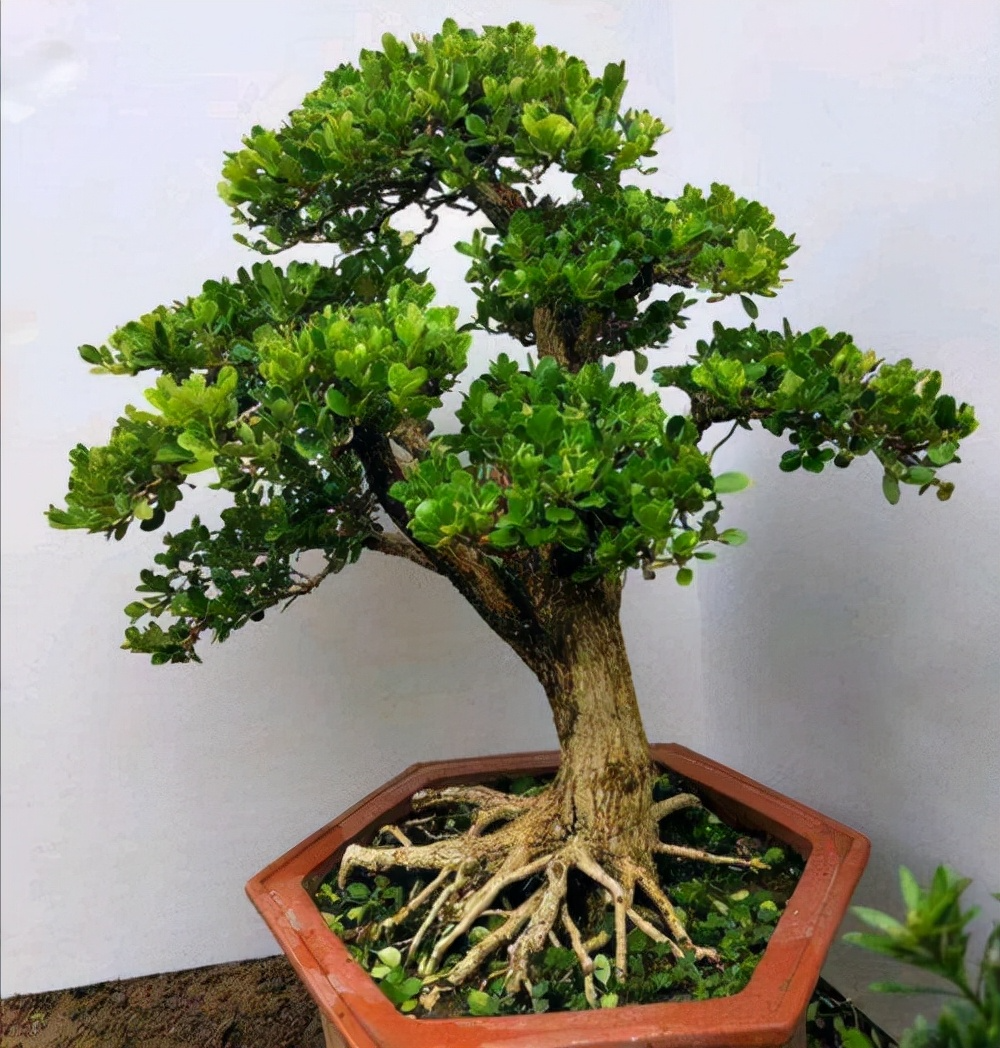
Family: Buxaceae
Genus: Buxus
Scientific name : Buxus sinica (Rehd. et Wils.) Cheng
Other names: small-leaf boxwood, boxwood , melon seed boxwood
Landscape use: Garden ornamental, hedge
40. Chestnut
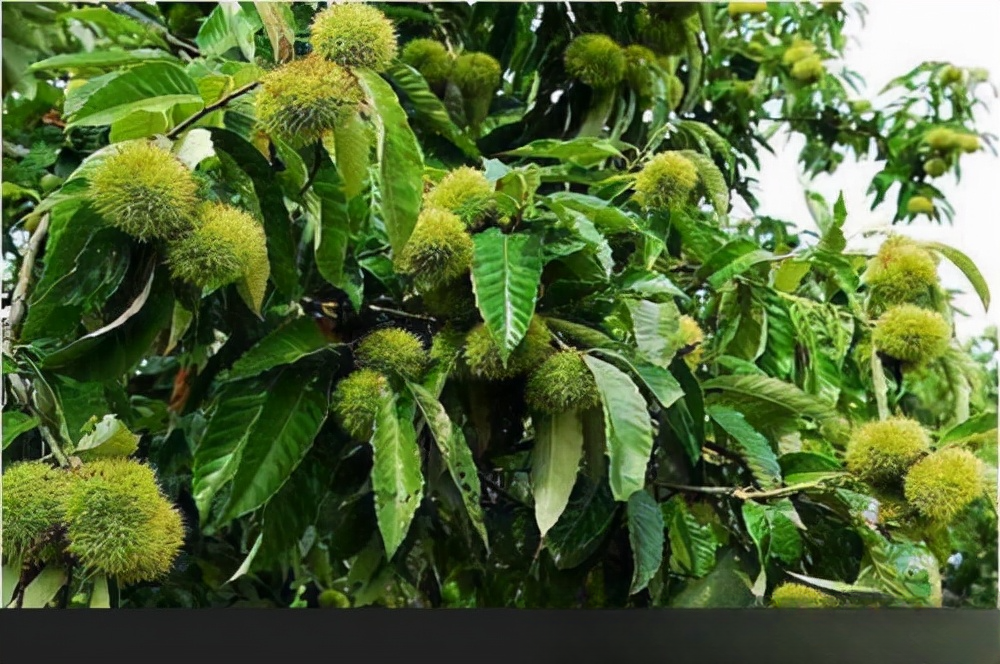
Family: Fagaceae
Genus: Castanea
Latin name: Castanea mollissima
Other names : chestnut, hairy chestnut
41. Cyclobalanopsis glauca
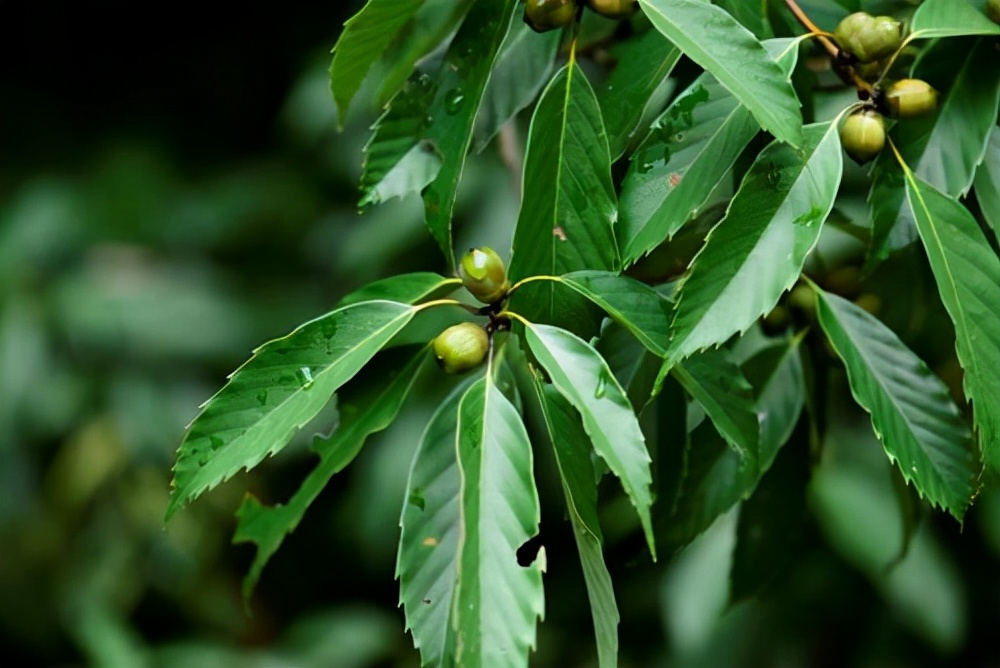
Family: Fagaceae
Genus: Cyclobalanopsis
Latin name: Cyclobalanopsis glauca (Thunberg) Oersted
Other names: Quercus glauca, Castanopsis chinensis, fancy tree, fine-leaved tung, Quercus ferruginosa, Castanopsis chinensis, Castanopsis ferruginosa, purple heart wood, stone beech, stone tiger , green wood chestnut, four-season green, Mi Zhong
Landscape use: It can be used for greening around the perimeter, factory greening, fire prevention forest, windbreak forest , hedge, and green wall tree species. The seeds contain 60-70% starch, and it is an important wild woody starch plant.
42. Quercus acutissima
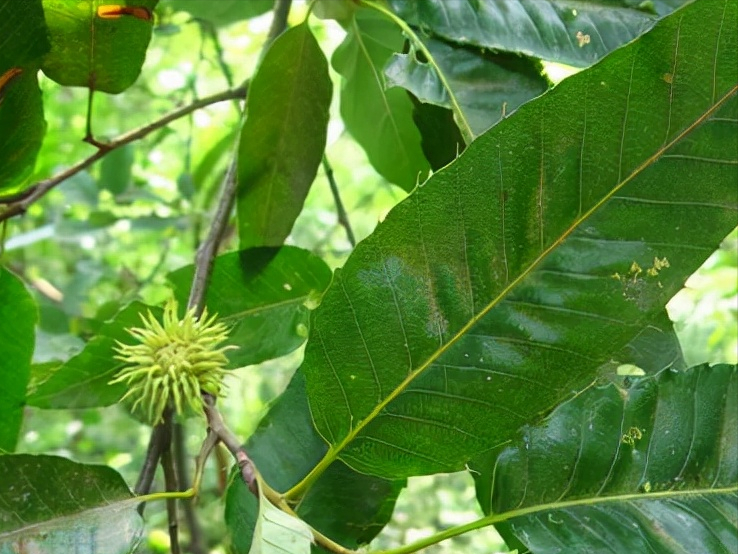
Name: Quercus acutissima Carruth.
English name: Sawtooth Oak
Family: Fagaceae
Garden use: This species has a tall tree shape, spreading crown , and lush shade. Due to its well-developed root system and strong adaptability, it can be used as a garden shade tree or street tree . If mixed with Liquidambar, Castanopsis sclerophylla , and Cyclobalanopsis glauca , it can form an urban landscape forest. It has strong fire and smoke resistance, and is also a native tree species for creating windbreaks , fire prevention forests, and water conservation forests .
43. Zelkova
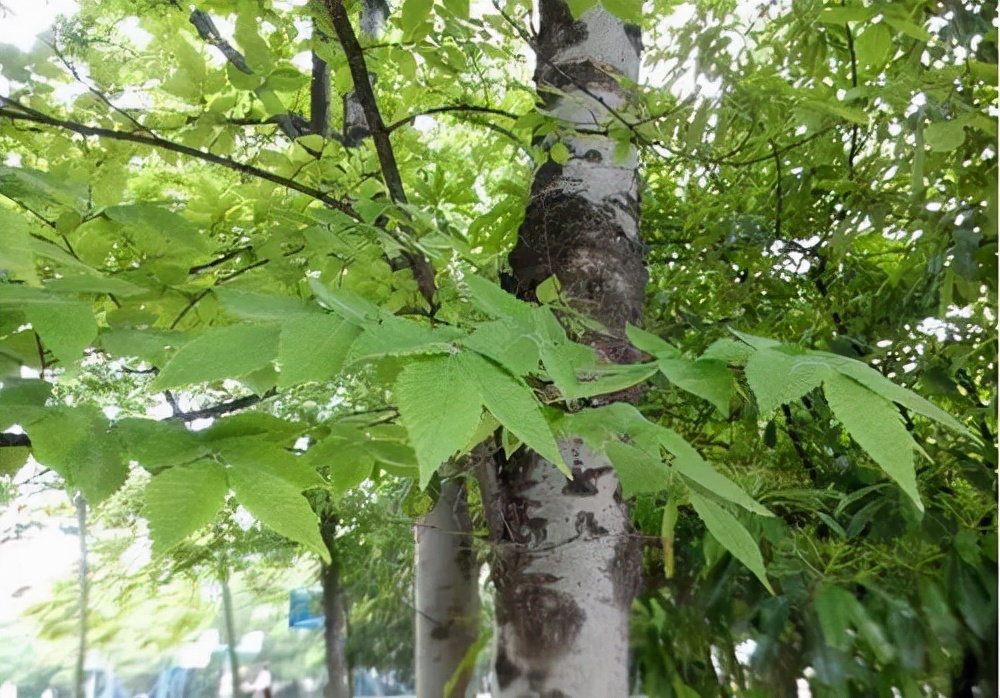
Family: Ulmaceae
Genus: Zelkova
Latin name: Zelkova serrata (Thunb.) Makino
Uses: The beech tree has a dignified posture, and its leaves turn brown-red in autumn. It is an excellent tree species for viewing autumn leaves. It is often planted on roadsides and walls in green spaces, either alone or in clusters , or as a street tree. The beech tree is highly adaptable, resistant to wind and smoke, and is a good tree species for urban and rural greening and building windbreaks . The wood has fine texture, is hard, and can withstand water, and is used for bridges and furniture ; the stem bark fiber is used to make artificial cotton and ropes. The bark and leaves of the beech tree are used as medicine to clear away heat and calm the fetus.
44. Jackfruit
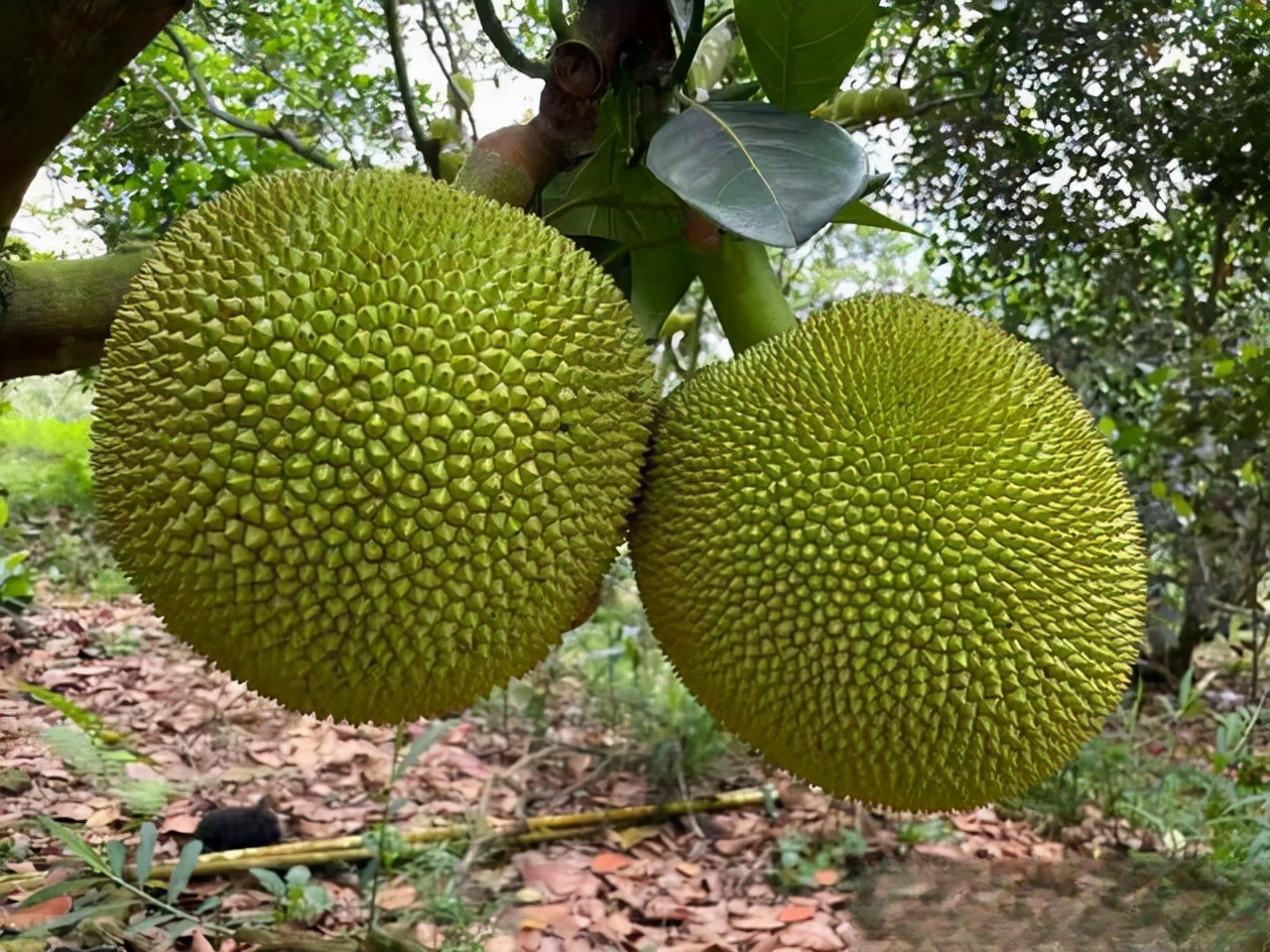
Family: Moraceae
Latin name: Artocarpus heterophyllus
45. Mulberry
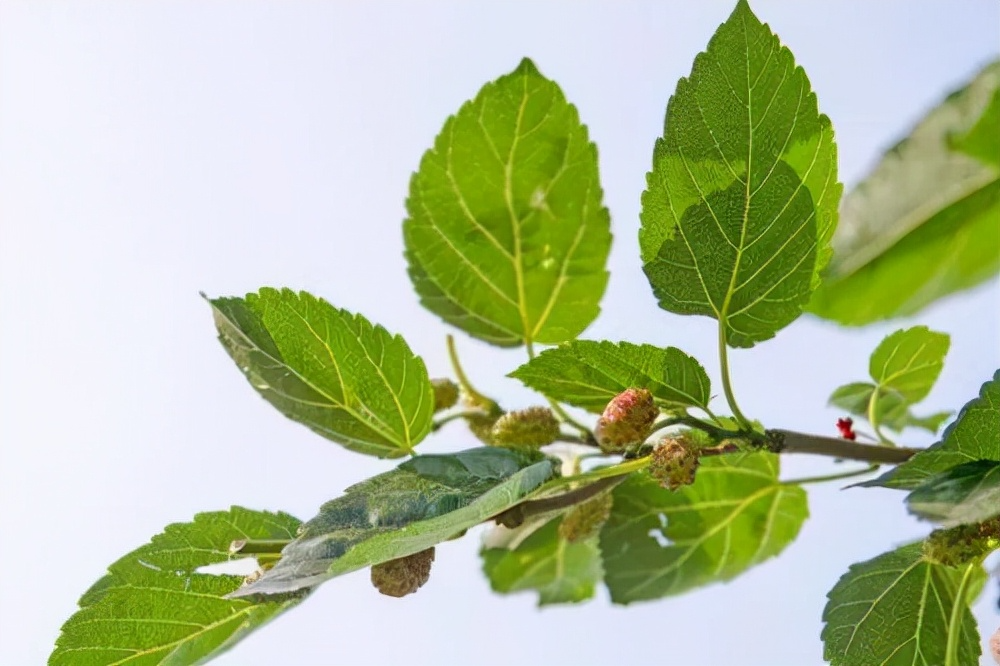
Family: Moraceae
Genus: Morus
Garden use: Mulberry trees have full crowns, dense branches and leaves, golden autumn leaves, strong adaptability, and are easy to manage. They are pioneer tree species for urban greening. They are suitable for solitary planting as garden shade trees, and can also be arranged with shade-loving flowering shrubs, tree altars, tree groves, or mixed with other tree species for landscape forests. The fruit can attract birds and form a natural landscape with birds singing and flowers blooming. It can be used in new residential villages and factory and mine green spaces. It is the main tree species for rural "four sides" greening.
46. Silver Birch

Genus: Grevillea
Chinese name: Silver Betula
Genus Latin name: Grebillea robusta A Cunn ex R.Br
Ornamental application: The trunk is straight, tall and majestic, suitable for use as a street tree or a garden shade tree; it is also suitable for greening the "four sides" of rural areas, and is suitable for creating fast-growing scenic forests and timber forests in low mountains.
Garden use: Suitable for use as a street tree , or planted in clusters , scattered or alone in the garden .
47. Bodhi tree
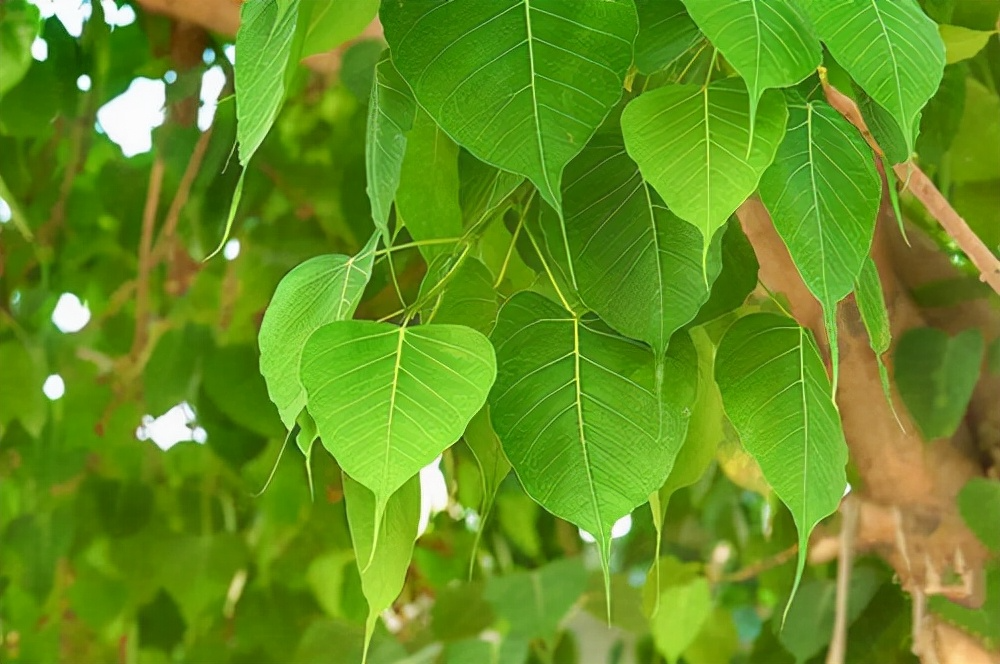
Family: Moraceae
Genus: Ficus
48. Pittosporum
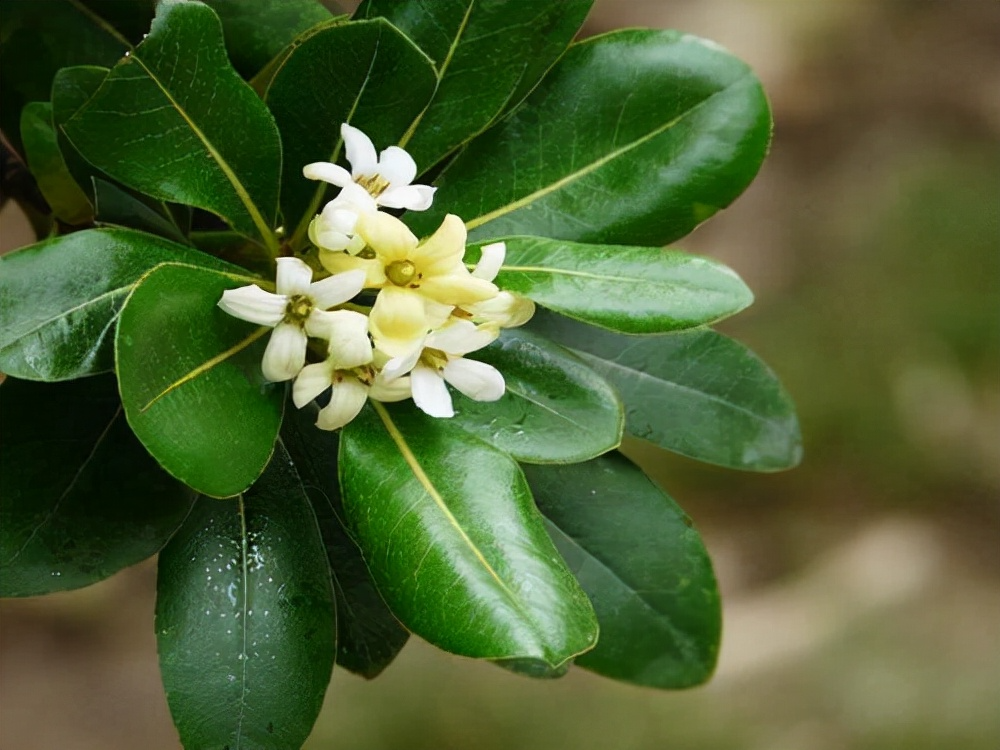
Scientific Name: Pittosporum tobira
Other names: Pittosporum , mountain alum
Family: Pittosporum
Garden use: In warm climates , this species is an ideal flowerbed landscaping tree or gardening tree species, especially suitable for planting in coastal areas. It is often used as a foundation plant for houses and hedges . In the north, it is grown in pots for viewing and greenhouses for wintering.
49. Autumn Maple
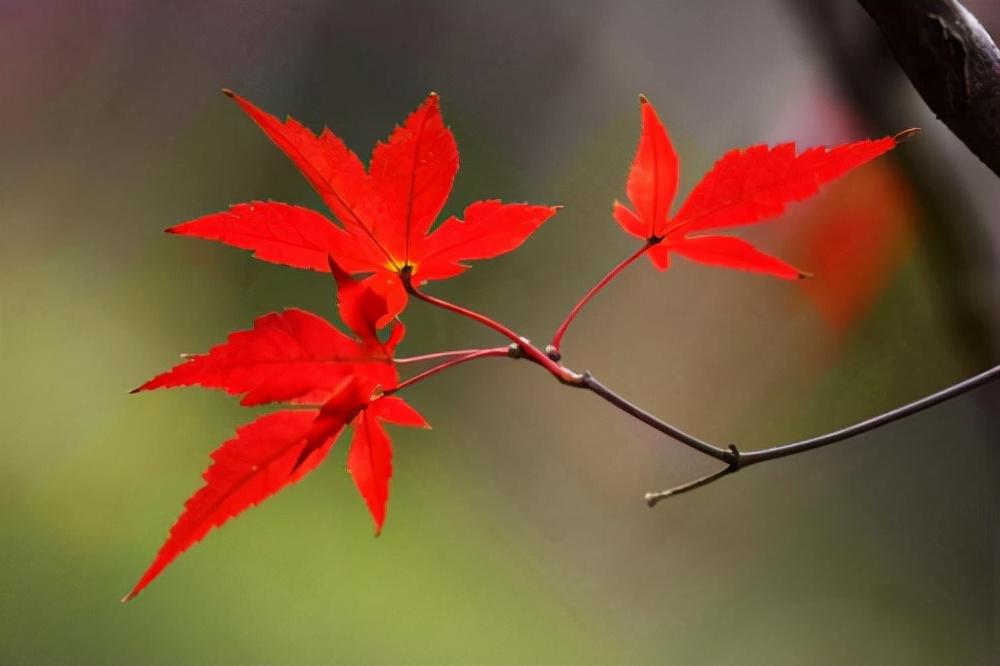
Scientific Name: Bischofia javanica
Family: Euphorbiaceae , Euphorbia genus, Autumn maple
Category: Evergreen or semi-evergreen tree
Other names: Qiedong, Qiufengzi, Daqiufengfeng, Hongtong, Winter Pear, Zhutong Tree, Wuyangqiufeng
Ornamental value: The tree has lush leaves, a dome-shaped crown, and a spectacular appearance. It is suitable for garden trees and roadside trees, and can also be planted on lawns, lakesides, streamsides, and embankments. The material is excellent, hard and durable, dark reddish brown, and is used for building bridges, vehicles, ships, etc.
50. Melaleuca alternifolia
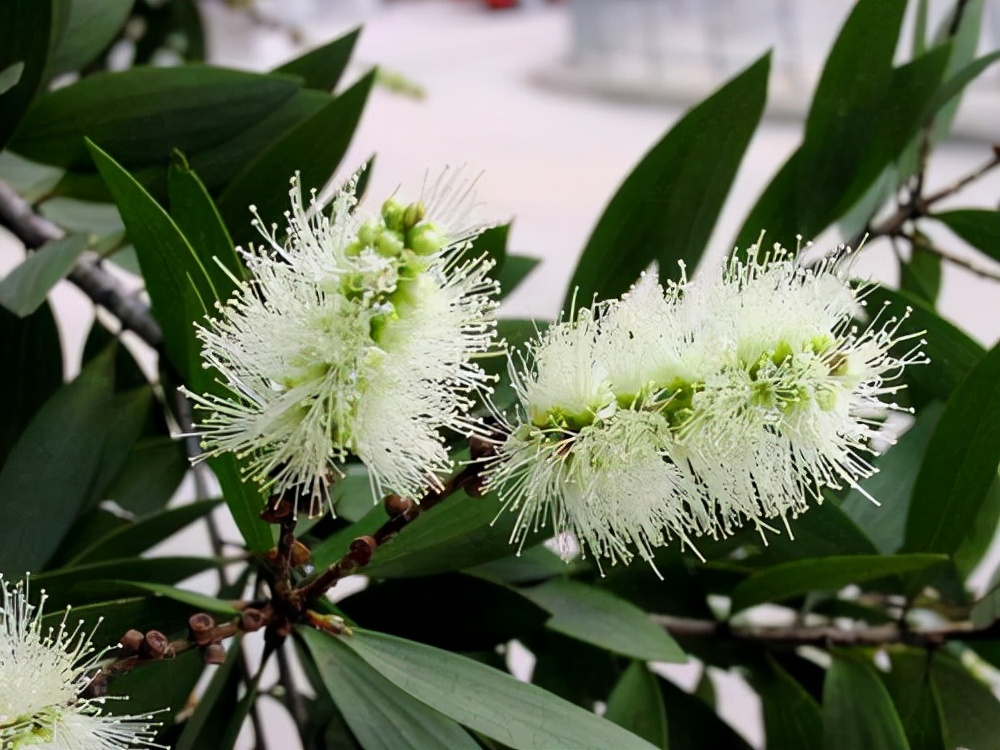
Scientific name: Melaleuca leucadendra Linn
Other name: peeling tree
Family: Myrtle
Uses and benefits: Tea tree oil is a kind of aromatic oil extracted from the branches and leaves of Melaleuca alternifolia. It has antibacterial, disinfectant, antipruritic and antiseptic effects. It is one of the main raw materials for daily chemical products and medical supplies such as detergents, beauty and health products, and is in wide demand.
51. Schefflera
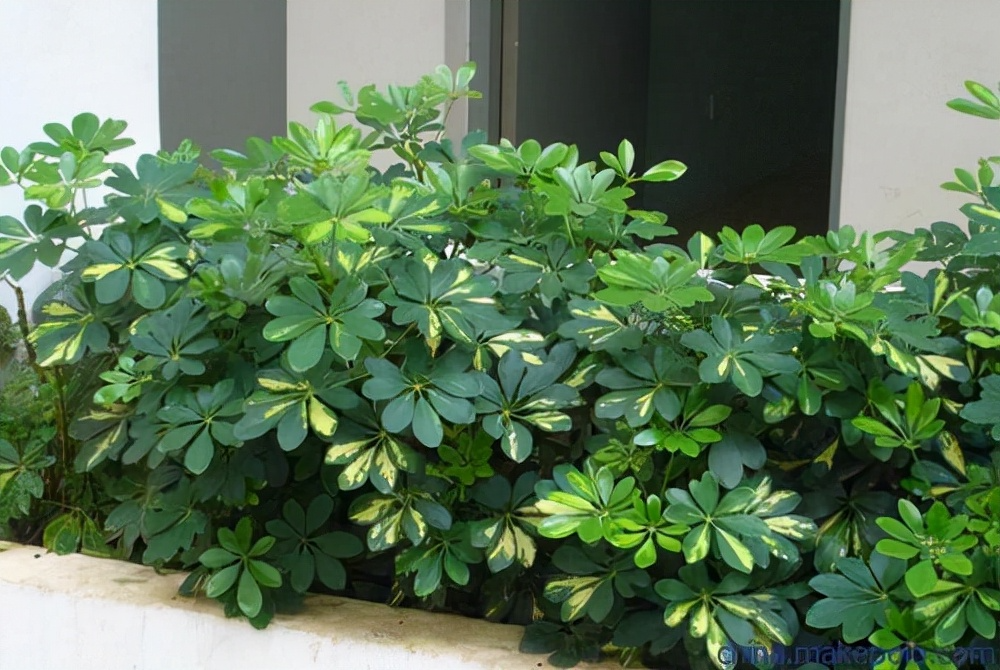
Family: Araliaceae
Genus: Schefflera
Latin name: Schefflera octophylla (Lour.) Harms
form:
Schefflera yellow-green, the leaves are yellow-green.
Henry Schefflera has large leaves with yellow spots.
Schefflera chinensis, an evergreen shrub with 7 to 9 oblong leaflets and entire margins. It is native to Hainan , Taiwan, and Guangxi .
Schefflera radiata is an evergreen tree with palmate compound leaves, 5 to 8 leaflets, shiny and with obvious veins. It is native to Australia.
Schefflera brevis, shrub. 5 to 11 leaflets, with a pointed tip, sometimes sickle-shaped. Native to Yunnan, Guizhou , Sichuan and Hubei .
52. Sightseeing Tree
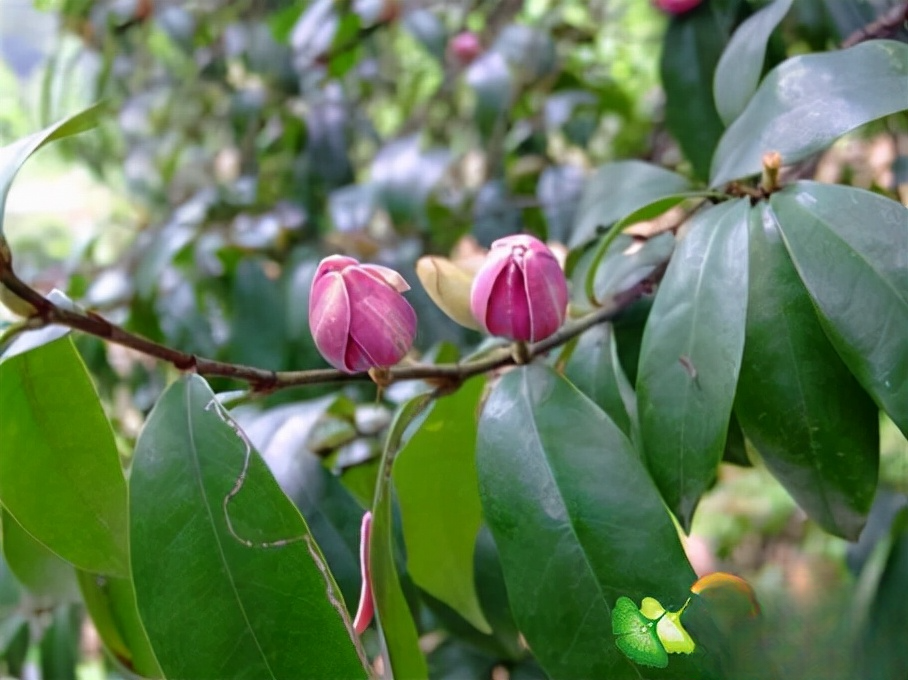
Scientific name: Tsoongiodendron odorum Chun
Other names: Fragrant flower wood, fragrant wood nan, axis magnolia
Family: Magnoliaceae
Genus: Sightseeing Tree
Classification: Magnoliaceae, genus Sightseeing Tree . Pollen grains have 1 distal groove, which is mostly closed into wrinkles. The covering layer is smooth, with occasional fine reticular wrinkles and obvious perforations. It is suitable for growing in warm and humid climates, deep and fertile soil, has strong germination ability, and is propagated by seeds.
53. Camphor tree
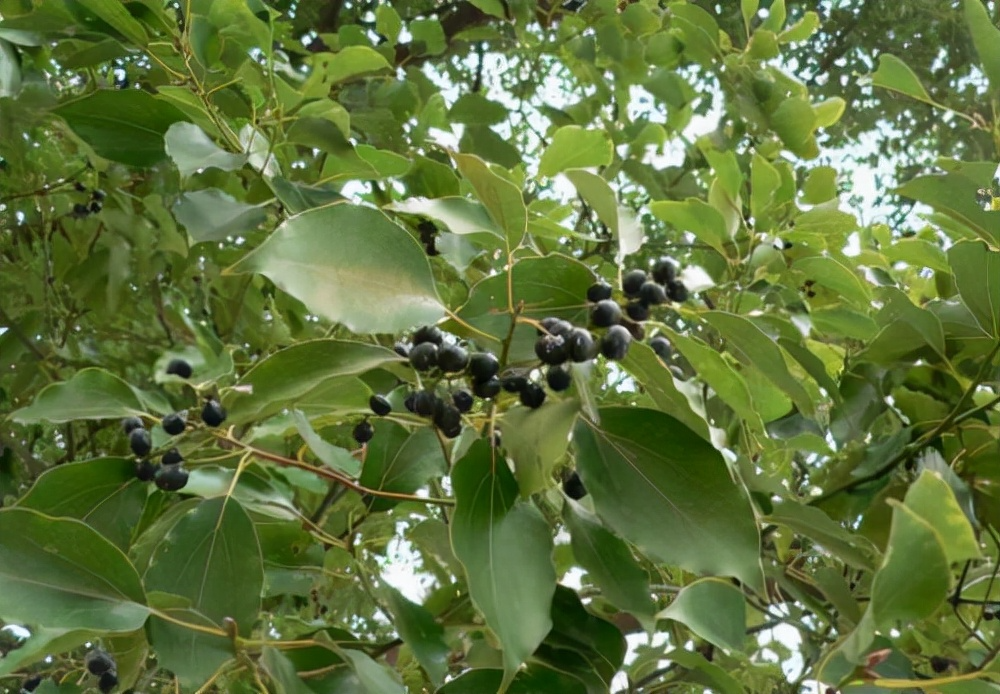
Latin name: Cinnamomum camphora (L.) Presl.
Family: Lauraceae
Genus: Cinnamomum
Garden application: This tree species has dense branches and leaves, a large crown and thick shade, and a majestic tree posture. It can absorb smoke and dust, conserve water sources, consolidate soil and prevent sand, and beautify the environment. It is an excellent tree species for urban greening and is widely used as a garden shade tree , street tree, shelter forest and landscape forest. It is planted by the pool, waterside, hillside, etc. It can be planted in clusters , groups, or alone in the grass or as a background tree. There are even two trees in the former residence of Soong Ching Ling !
54. Heather
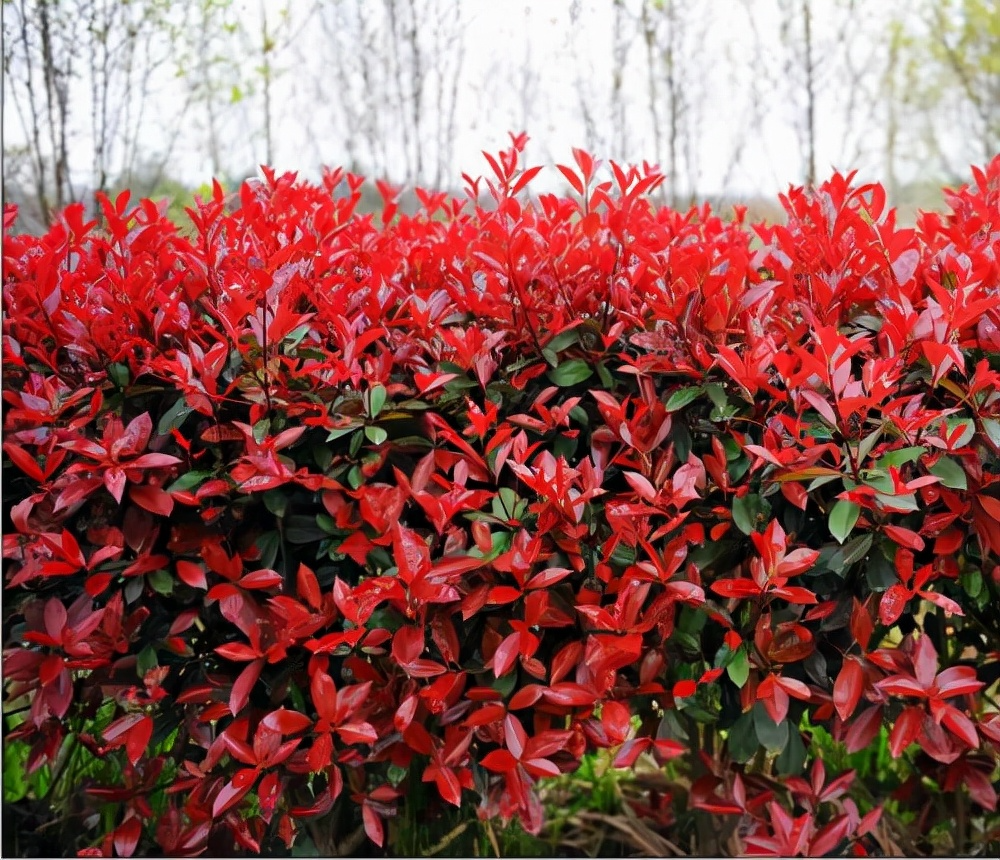
Name: Heather
Other names: Millennium red heather, fan-bone wood.
Latin name: Photinia serrulata Lindl.
Family name: Rosaceae , Photinia
Ecological classification: woody plants, evergreen trees
Growth habits: It likes warm and humid climate , is not very cold-resistant, likes light and is shade-tolerant, is not demanding on soil , and fertile and moist sandy soil is most suitable . It has strong germination ability, is resistant to pruning, and has a certain resistance to smoke and toxic gases.
Distribution: Mainly produced in the Yangtze River Basin and the area south of Qinling Mountains , with a small amount cultivated in North China . Most of them are in the form of shrubs . There are some as high as 5-6 meters in Shandong Culaishan National Forest Park , which grow well.
55. Bamboo
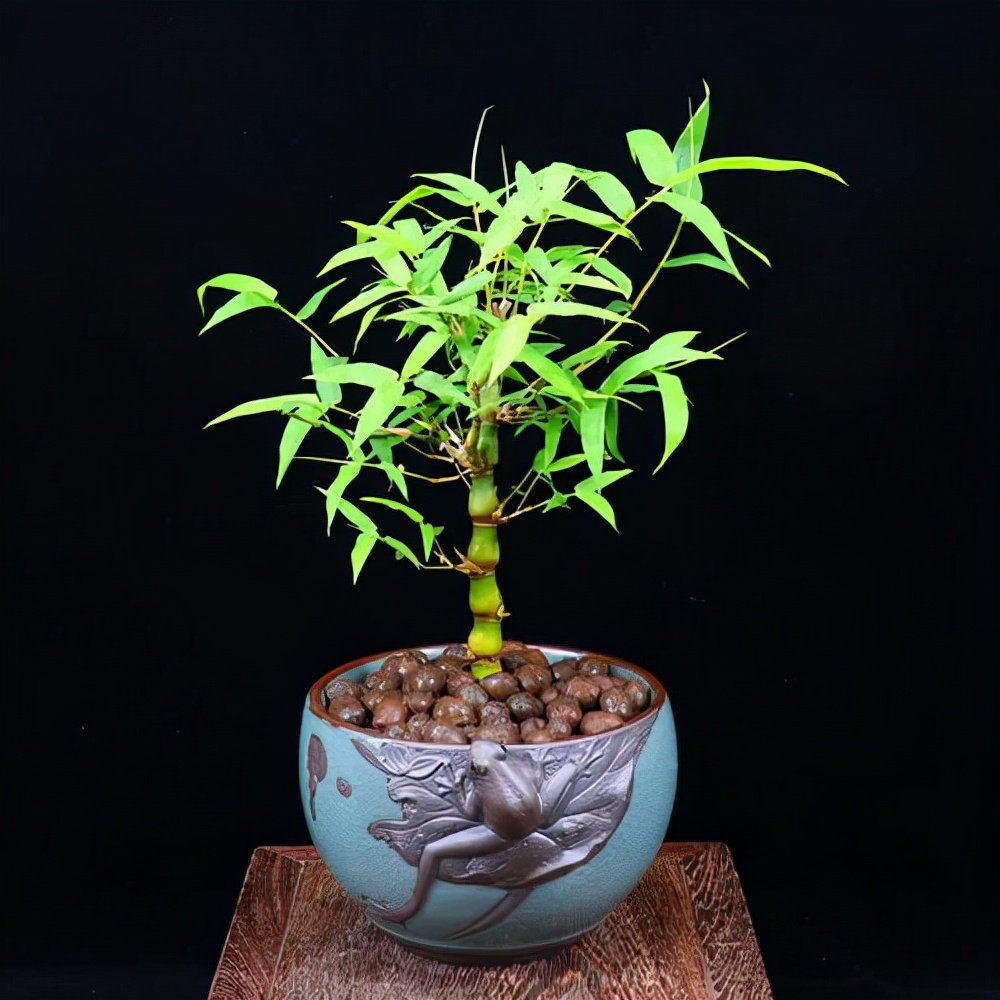
Latin name: Phyllostachys aurea Carr. ex A. et C. Riviere
Family: Poaceae
Genus: Bamboo
Plant use: Bamboo stalks are deformed and varied, making them excellent ornamental bamboo species. Their stalks can be used as walking sticks , umbrella handles, fishing rods and other crafts, and their shoots are delicious. Luohan bamboo is planted in open spaces in courtyards for viewing; it is also suitable for planting at the foot of a mountain or behind a house for practical use; the deformed stalks at the bottom are mostly used to make walking sticks, and their shoots are delicious and edible.
56. Asparagus fern
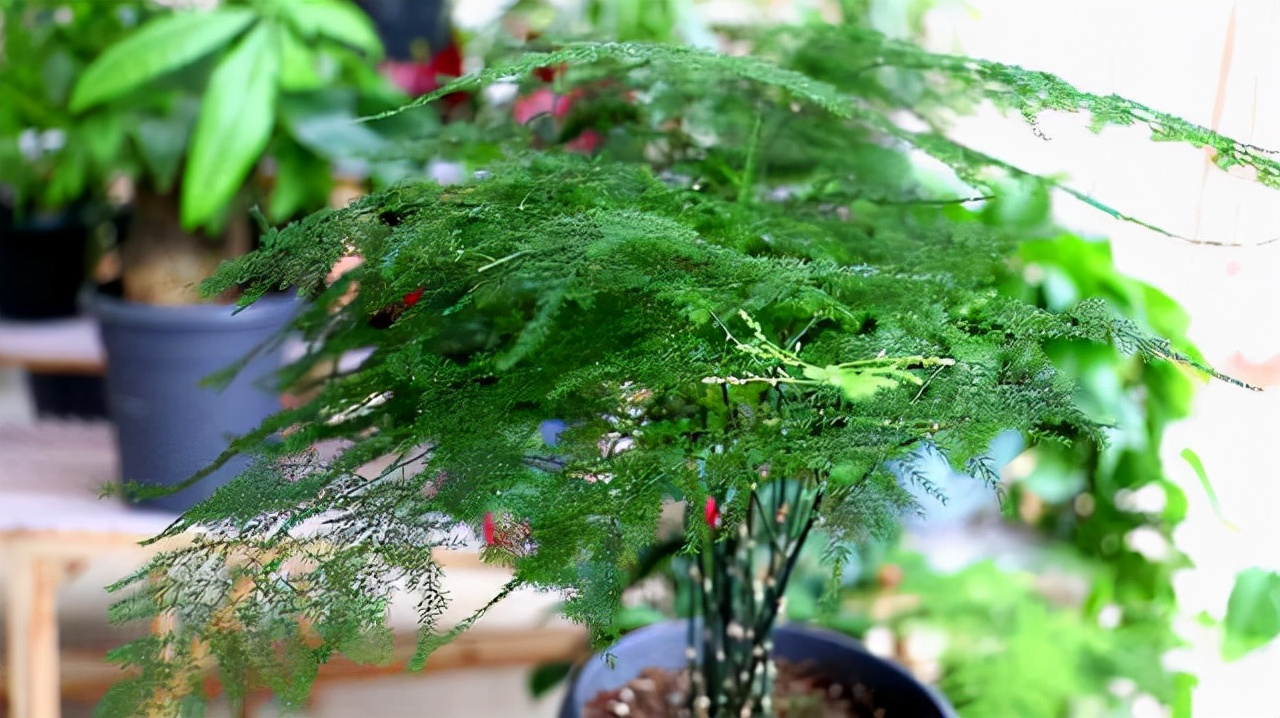
Latin name : Asparagus setaceus
Family: Liliaceae
Genus: Asparagus
Ecological habits: Asparagus fern is native to South Africa and is now cultivated in many parts of the world . It likes warm, humid and semi-shady environments, is not resistant to severe cold, drought, and direct sunlight. It is suitable for growing in well-drained, humus- rich sandy loam. The optimum temperature for growth is 15-25℃, and the wintering temperature is 5℃.
57. Jute Bamboo
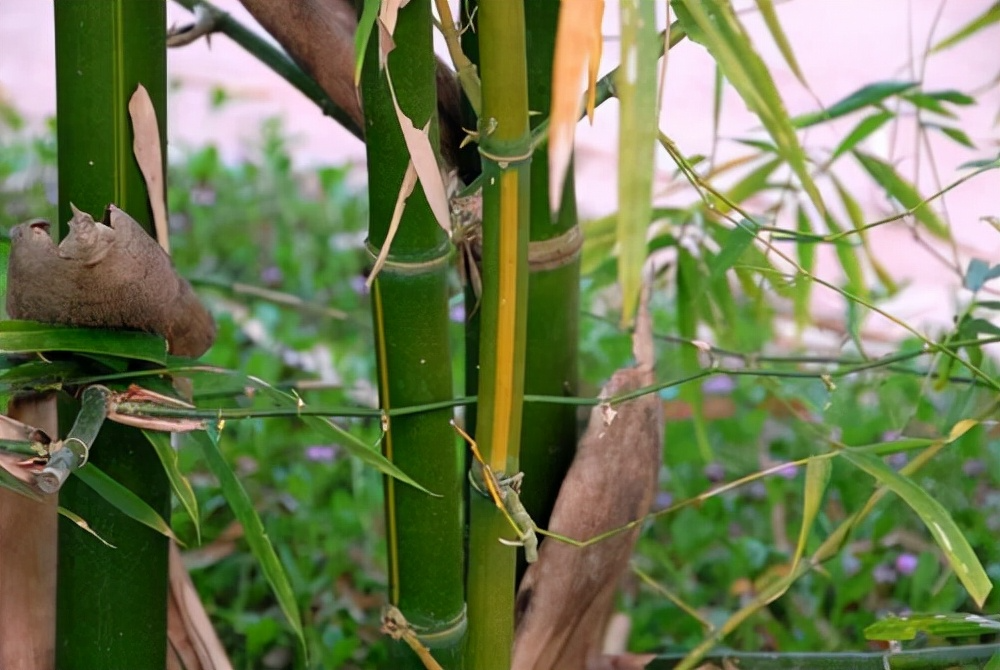
Family: Poaceae
Genus: Green bamboo
Latin name: Dendrocalamopsis stenoaurita (WT Lin) Keng f.
Distribution: Distributed in Hehuaiji, Guangdong and Suijiang River Basin, cultivated in Guangzhou. The type specimen was collected from Guangzhou.
58. Teak
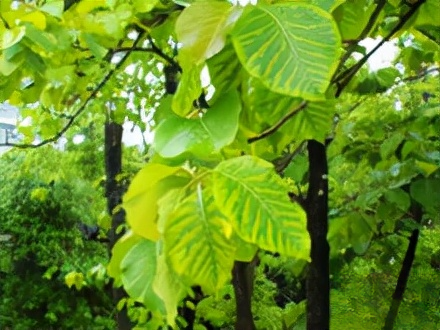
Latin name: Tectona grandis LF
Family: Verbenaceae
Genus: Teak
Medicinal value
[Medicinal parts] Teak flowers, seeds, sawdust, stems and leaves.
【Effects】Diuretic, relieving stranguria, promoting lung function and relieving cough, clearing away heat and removing dampness.
[Main Indications] Diuresis, stranguria, lung-clearing and cough-relieving, heat-clearing and dampness-relieving. Used for edema, stranguria with heat, cough with heat, skin diseases, itching of wet sores, nausea and vomiting caused by damp-heat in the spleen and stomach. [Nature and flavor] Sweet, bitter, slightly cold. Enters the lung, stomach, and bladder meridians.
59. Wolfberry
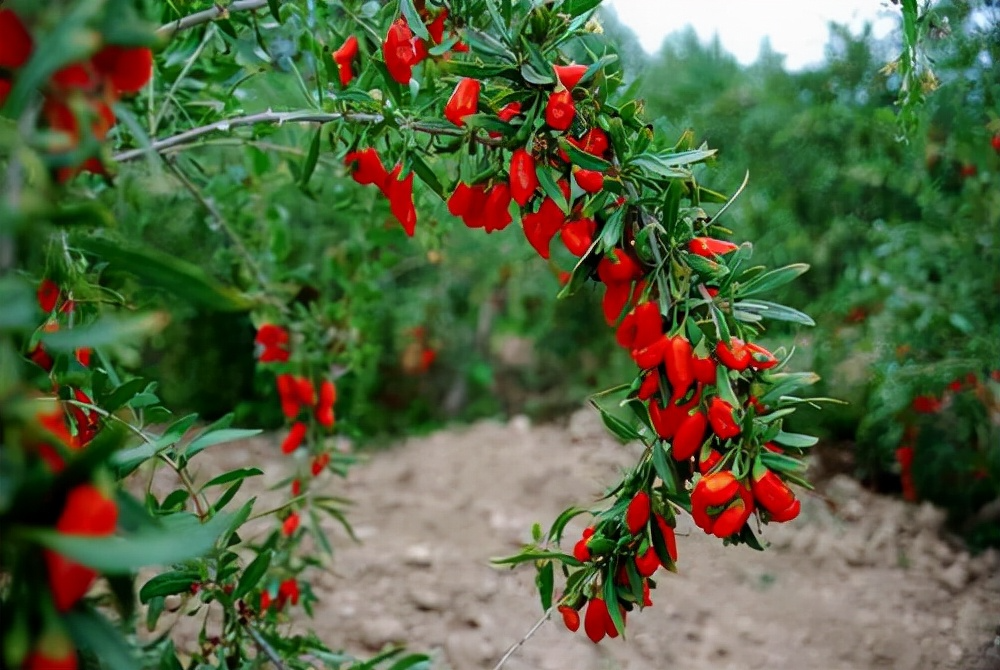
Latin name: Lycium chinense
Family: Solanaceae
Genus: Lycium
Garden use: It can be planted in clusters on the bank of a pond or on a terrace, or as a river bank slope protection or hedge. It can be used as a tree stump potted plant .
Other uses: The young leaves can be used as vegetables; the seed oil can be used to make lubricants or cooking oil; because it is drought-resistant and can grow in sandy areas, it can be used as a shrub for soil and water conservation.
60. Ixora
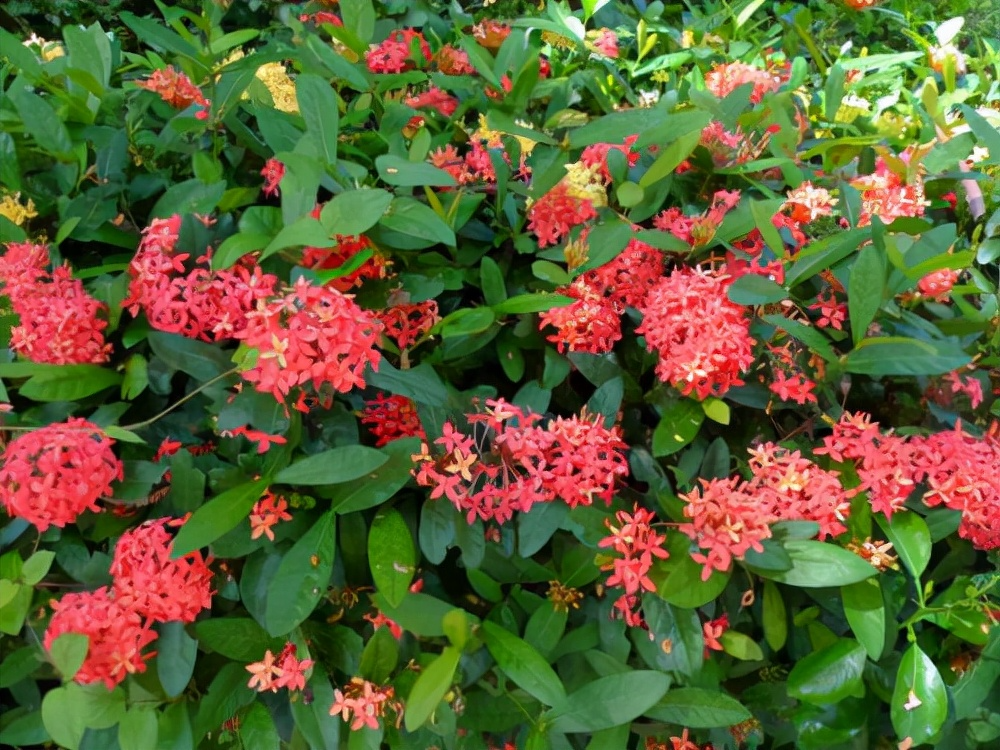
Latin name: Ixora chinensis
Family: Rubiaceae
Genus: Ixora
Medicinal value
Efficacy: dispersing blood stasis and stopping bleeding, regulating menstruation, lowering blood pressure , promoting blood circulation , and relieving pain. Used for hypertension , irregular menstruation , tendon fractures, and sores . Roots and stems: hemoptysis caused by tuberculosis, stomachache, rheumatic joint pain, and traumatic injuries.
Chemical composition: The leaves contain phenols, amino acids, organic acids and sugars.
Medicinal parts: The roots ( roots of Ixora chinensis ), stems and leaves ( stems and leaves of Ixora chinensis ) of this plant are all used for medicinal purposes
Harvesting and storage : Available all year round.
Dosage and administration: 0.5-1 liang for roots and stems, 3-5 qian for flowers.
61. Mango
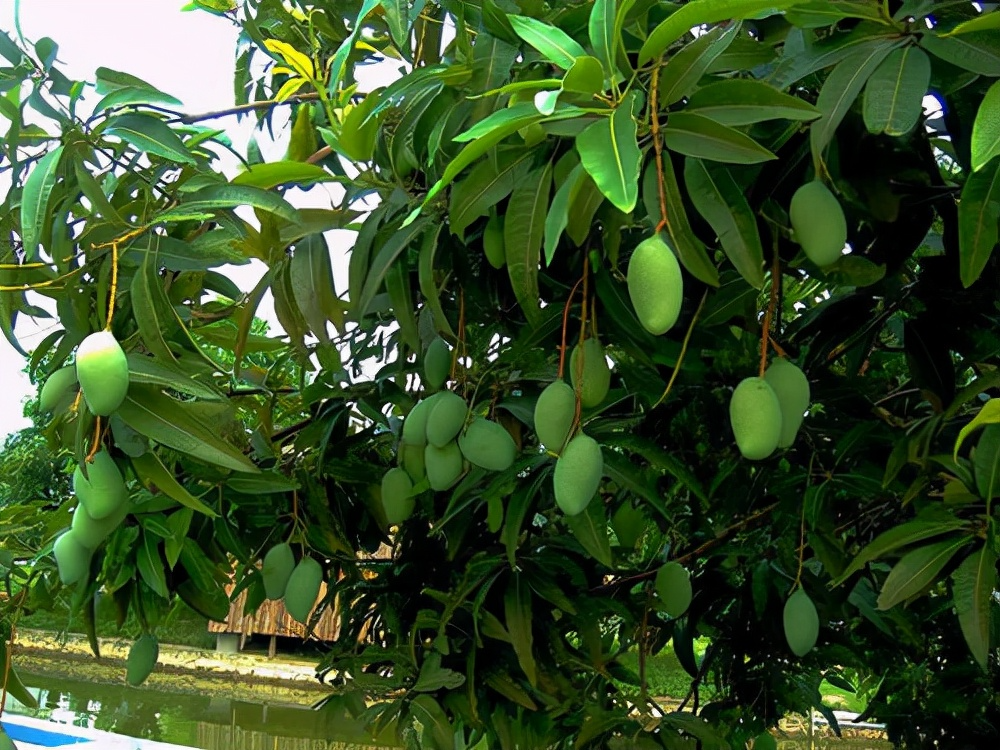
Scientific name: Dimocarpus longgana Lour.
English name longan
Other names: longan , Yizhi , sheep's eye (Yunnan dialect)
Family : Sapindaceae Genus : Dimocarpus
Varieties: Shek Kip, Da Wu Yuan , Fu Yan, Chu Liang, Guang Yan, Button
Function: Longan is rich in nutrients and is a precious nourishing enhancer. In addition to being eaten fresh, the fruit can also be made into canned food, wine, paste, sauce, etc. It can also be processed into dried Guiyuan meat, etc. The wood of the longan tree is hard and has fine and beautiful textures. It is the raw material for making high-end furniture and can also be carved into various exquisite handicrafts.
62. Lemon
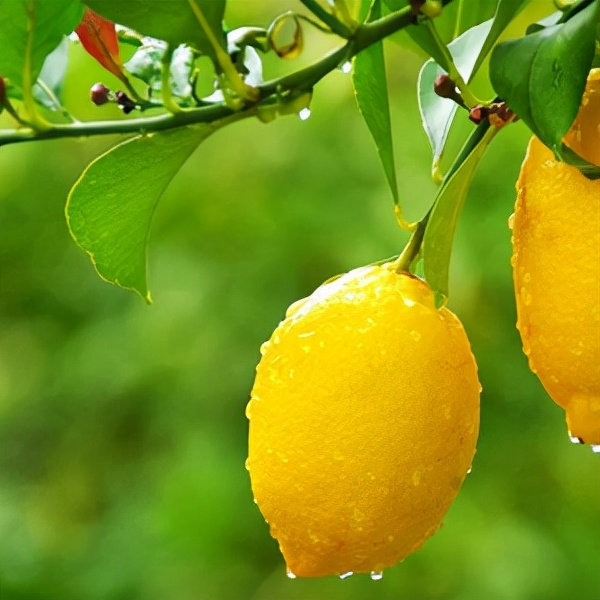
Latin name: lemon
Family: Rutaceae
Genus: Citrus
63. Kakugi
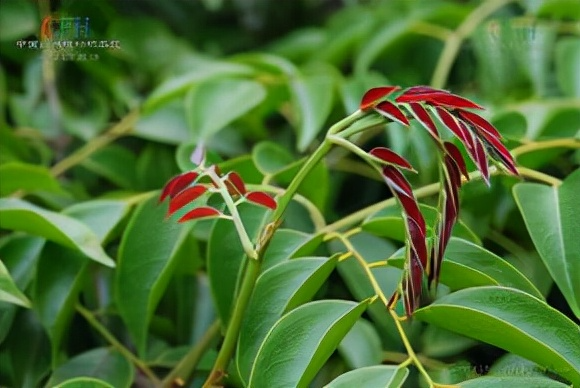
Scientific Name: erythrophloeum fordii
Other names: red leaf wood, iron wood , Tokyo wood, iron water, Dou Dengfeng, lonely grave wood, red leaf wood
Leguminosae
Subfamily Caesalpinoideae
Erythrophieum
64. Yellow Sophora japonica

Yellow Cassia (Cassia surattensis Burm. f.)
English name: scrambled eggs tree
Family: Caesalpiniaceae
Origin: India , Sri Lanka, Southeast Asia and Oceania
Adaptable area: Cultivated in the southeast and south. Also found in India, Ceylon , Indonesia, the Philippines, and Oceania . It is a garden plant.
Garden value: It has dense branches and leaves, beautiful tree posture, long flowering period, brilliant golden color, and tropical characteristics. It is a beautiful ornamental tree, garden tree and street tree.
65. Rubber Tree
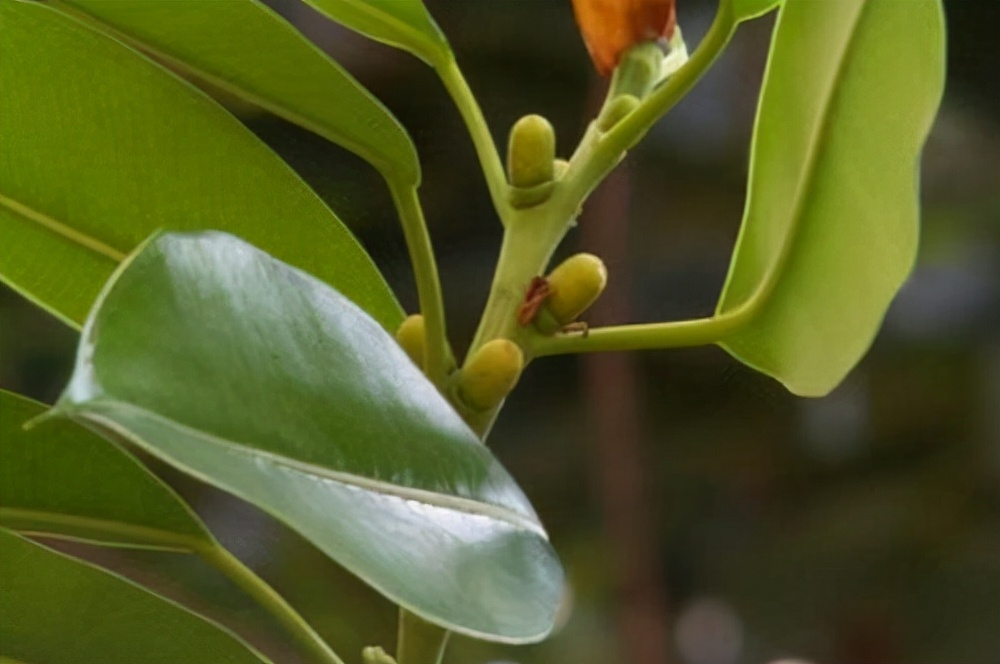
【Scientific Name】Hevea brasiliensis
[Alias] Hevea brasiliensis , Hevea brasiliensis
[ Classification] Angiosperms , Dicots , Rosina , Euphobiaceae , Hevea
Uses : Natural rubber is widely used in industry, national defense, transportation, medicine and health, and daily life due to its strong elasticity, good insulation, plasticity, water and air barrier, tensile and wear resistance. Oil extracted from seeds is the raw material for making paint and soap. Rubber shells can be used to make high-quality fibers. Shells can be used to make activated carbon, furfural, etc. Wood is light, beautiful in pattern, and has good processing performance. After chemical treatment , it can be used to make high-end furniture, fiberboard, plywood, pulp, etc.
66. Millennium Paulownia
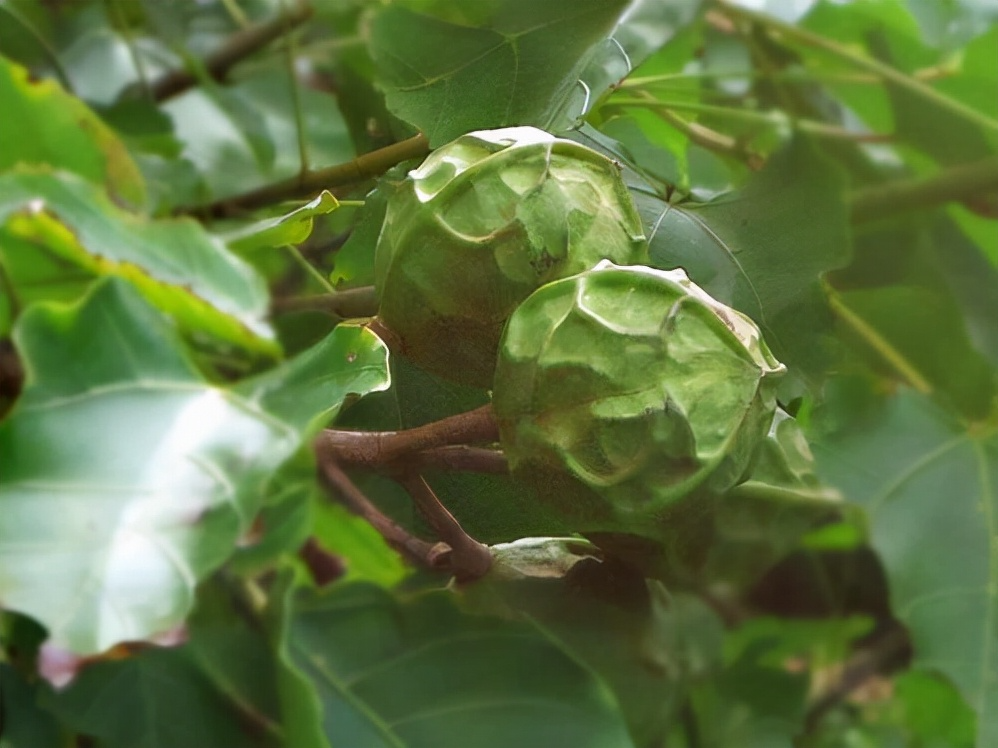
Species name: Millennium tung
Scientific name: Aleurites montana
Other names: Tung oil tree , wrinkled tung tree, Guangdong tung oil tree
Family: Euphorbiaceae
Genus: Aleurites
Distribution: Cultivated in the south of the Yangtze River Basin.
Garden use: With beautiful tree shape and spectacular snow-white flowers, it is an excellent landscape tree, street tree, shade tree, and forest bathing tree. It can be used in gardens, campuses, parks, recreational areas, temples, etc., planted alone, in rows, or in groups. Its flowers can attract butterflies.
67. Chinese tallow tree
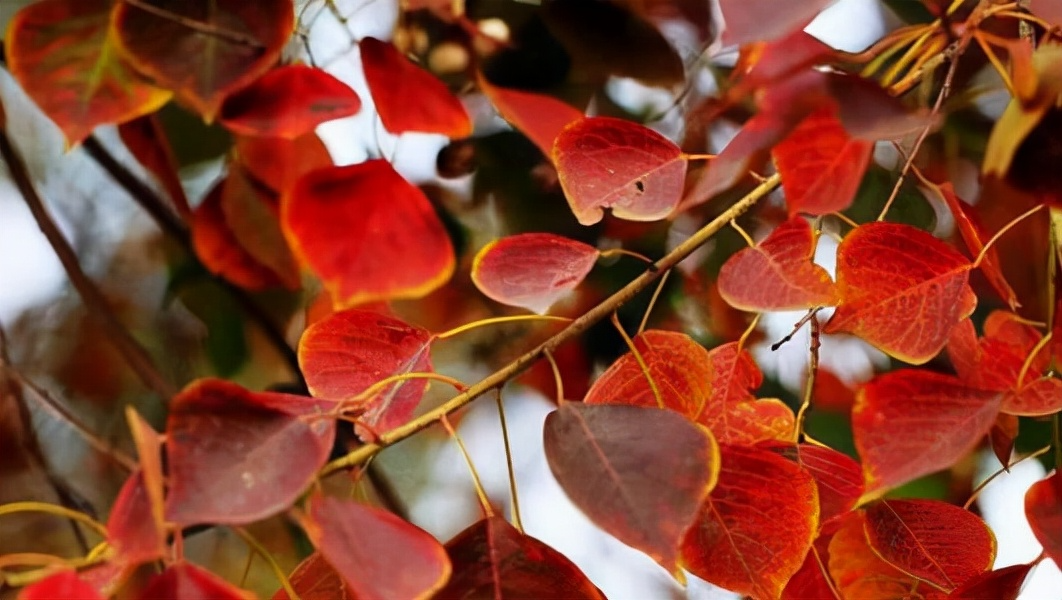
Latin name: Sapium sebiferum (L.) Roxb.
Family: Euphorbiaceae
Genus: Sapiumaceae
Other names: wax tree, tung tree, wood tree. Landscape setting: Tung tree has neat crowns and beautiful leaves. Its autumn leaves are in full bloom after frost, which is very beautiful. It is praised as "tung tree is redder than maple, and it is the middle of February in the garden". It can be planted alone or in clusters on lawns, lakesides, and poolsides. It can be planted as a embankment tree, a garden shade tree, and a street tree in landscaping.
68. Syzygium wilfordii
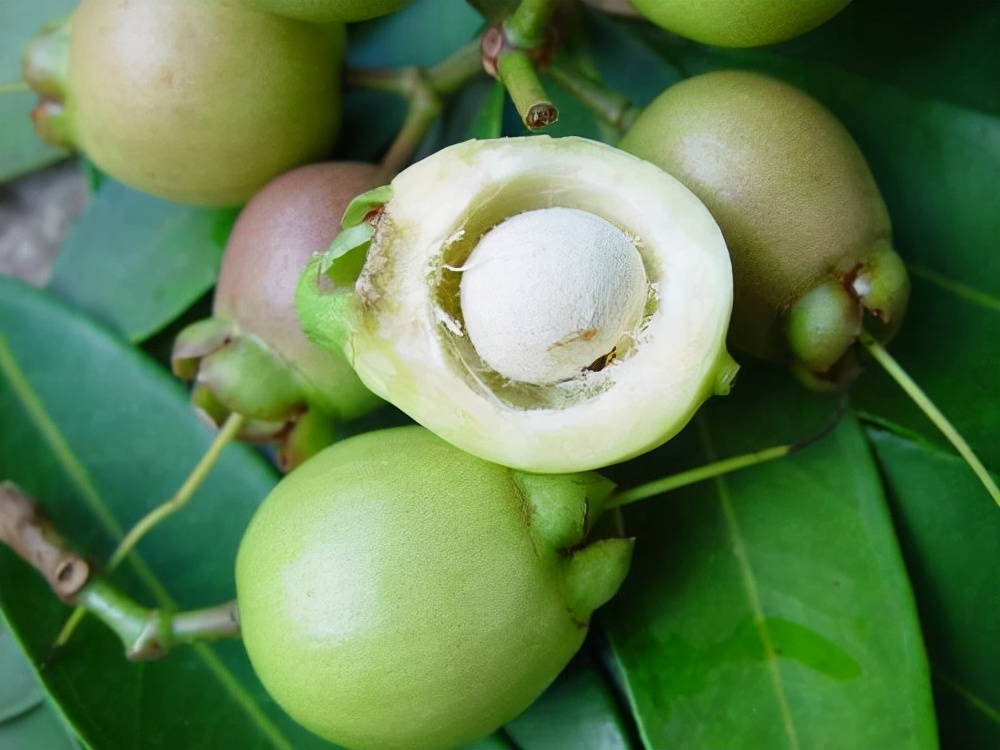
【Chinese name】 Syzygium wilfordii
[Chinese alias] Water apple, rambutan , fragrant fruit , loud drum, wind drum
【English name】 Rose Apple
【Scientific name】Syzygium jambos (L.) Alston.
【Family name 】Myrtaceae
[Genus name ] Syzygium
Ornamental characteristics: The foliage of Syzygium wilfordii has many low branches, dense and dark green leaves, and a large crown like a broad umbrella. Syzygium wilfordii is a tropical fruit tree that can be cultivated in tropical and subtropical regions. It likes humidity and heat, and can bloom and bear fruit when the annual average temperature is above 20℃. The flowering period is generally from March to April, and there are sporadic flowers in summer and autumn.
69. Pomegranate
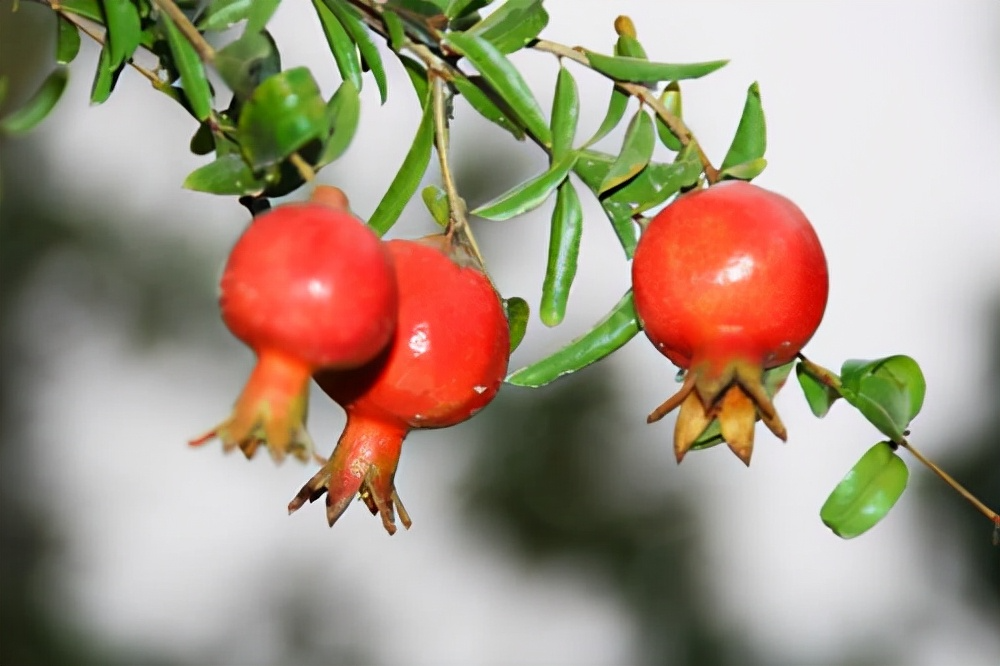
Latin name: Punica granatum Linn.
Family: Punica
Genus: Pomegranate
Ornamental value: The tree has beautiful posture, beautiful branches and leaves, tender green leaves in early spring, graceful and charming; in midsummer, the flowers are in full bloom with bright colors; in autumn, the fruits are hanging, either planted alone or in clusters in the courtyard, in the corners of the garden, planted in pairs at the entrance of the gate, planted in rows beside the path, stream, on the slope, and beside the building. It is also suitable for making various pile landscapes and for vase flower arrangement for viewing.
70. Sapodilla
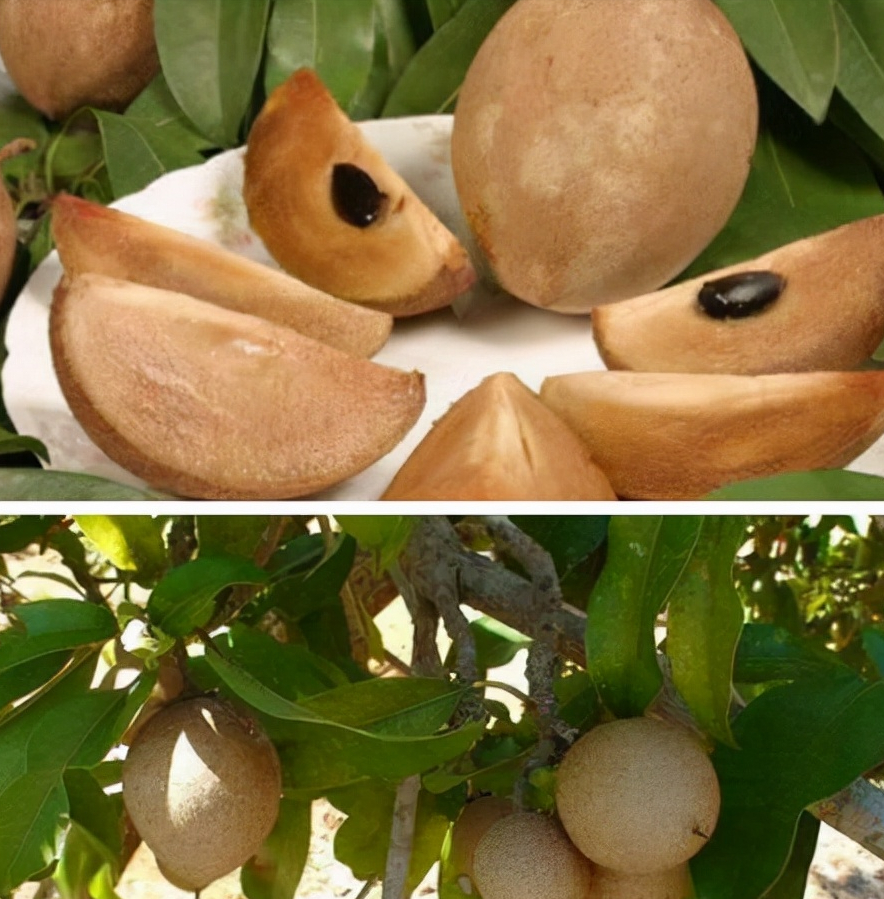
Latin name: Manilkara zapota van Royen
Family: Sapotaceae
Genus: Sapodilla
Uses: Sapodilla matures and is available in the summer. It is rich in nutrients. The sapodilla tree is evergreen all year round and has a beautiful shape. It is often used as a street tree and a greening and ornamental tree. The sapodilla is rich in nutrients and has the effect of clearing the heart and moistening the lungs. The seeds, bark and roots can be used as medicine. It is a tree species with high economic value.
71. Miracle Fruit
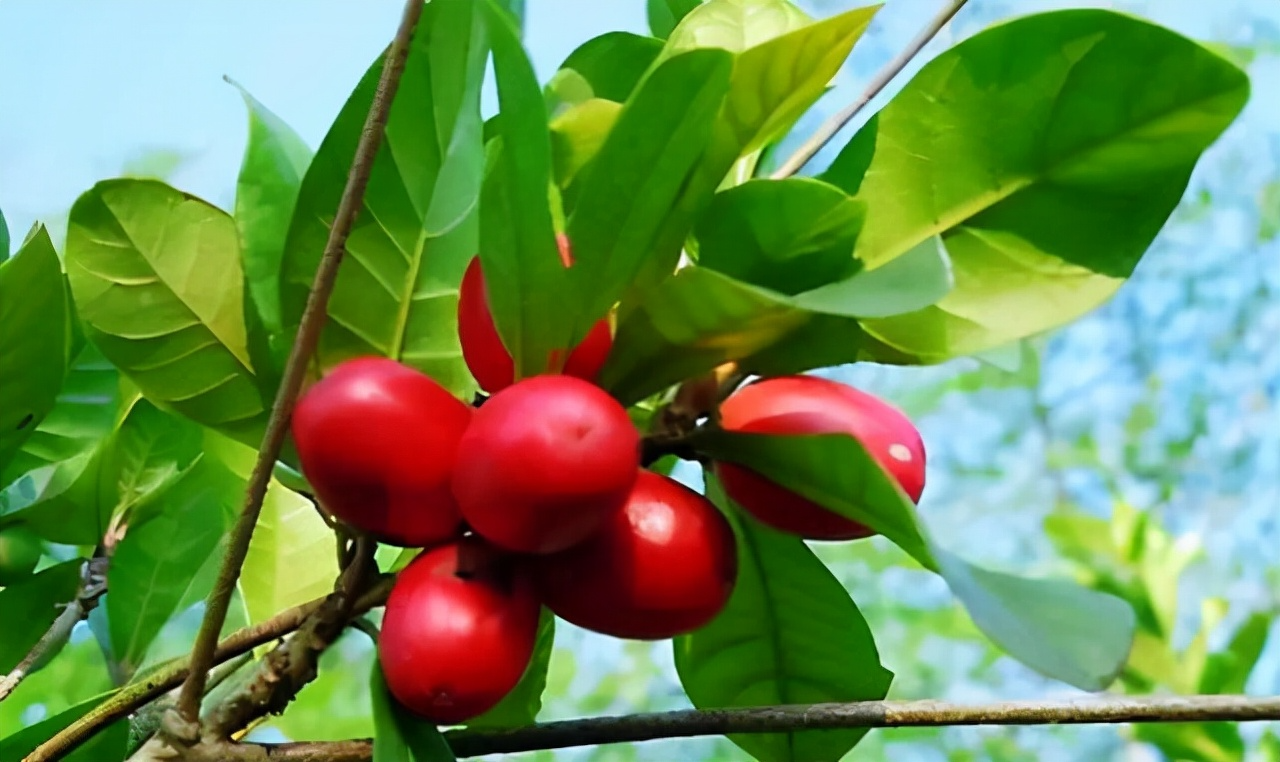
Latin name: Synsepalum dulcificum
Family: Sapotaceae
Genus: Miracle Fruit
Aliases: Dream fruit, miracle fruit , West African olive, Mira holy fruit
How to eat: The ripe fruit can be eaten raw, made into juice, made into concentrated tablets, or made into juice combination sugar-free lemon popsicles (miracle fruit popsicles). The seeds can be eaten raw and made into concentrated tablets.
72. Face
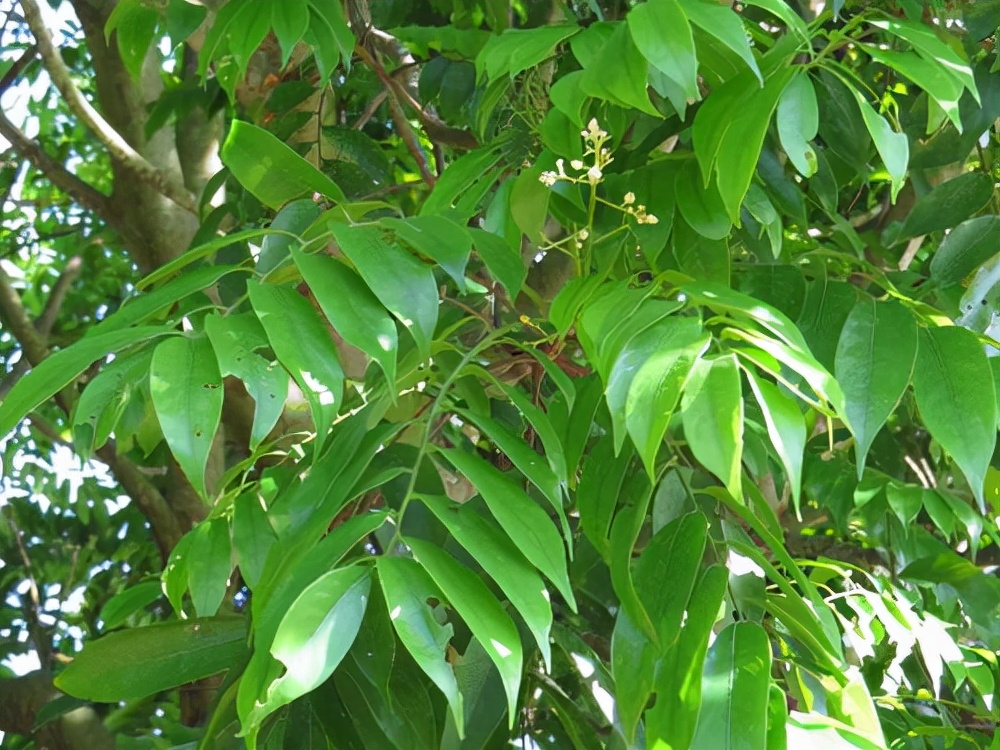
Family: Anacardiaceae
Genus: Human face
Scientific Name: Dracontomelon dao
Latin name: Dracontomelon duperreranum Pierre
Garden use: It can be used as a street tree or a shade tree. The tree has a broad and dark green crown, which is very beautiful. It is an excellent tree species for "four sides" and garden greening, and is also suitable as a street tree.
Other uses: The flesh can be eaten or salted for cooking or other food, and can be processed into preserves and jams. The wood is dense and shiny, resistant to decay, and suitable for use in construction and furniture. The seed oil can be used to make soap or as a lubricant. [1]
73. Ligustrum lucidum
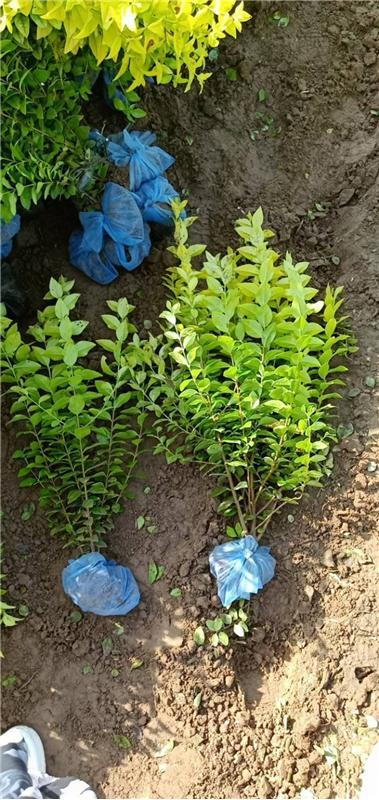
Family: Oleaceae
Genus: Ligustrum
Latin name: Ligustrum lucidum
Plant habits: Ligustrum lucidum is cold-resistant, resistant to water and humidity, likes warm and humid climate, likes light and tolerates shade. It is a deep-rooted tree species with well-developed fibrous roots, fast growth, strong germination ability, and tolerance to pruning, but not to barrenness. It has strong resistance to air pollution , sulfur dioxide , chlorine , hydrogen fluoride and lead vapor, and can tolerate high dust and smoke pollution.
74. Red cedar
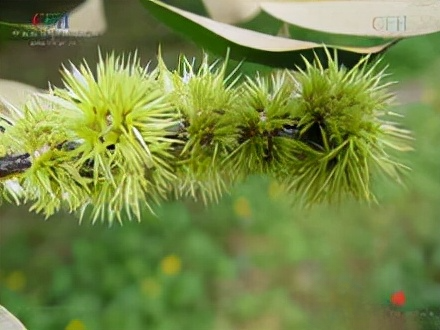
Latin name: Castanopsis hystrix A.DC
Family: Fagaceae
Other names: red li, li wood, red rafter castanopsis, red li period, thorny coix, red vertebral chestnut, red coix, buried horn good
Application: Red Castanopsis has a large amount of litter, which plays a great role in improving soil and conserving water resources. It is a good choice of tree species for mixed afforestation with pine, fir or other broad-leaved trees in the hilly areas of South China. Red Castanopsis is an excellent fast-growing tree species with strong adaptability, rapid growth, wide distribution area, hard and medium-heavy wood, insect resistance and corrosion resistance, and is popular among the people. Red Castanopsis has strong germination ability and high calorific value of wood, and is also an excellent firewood and charcoal tree species.
75. Cork Oak
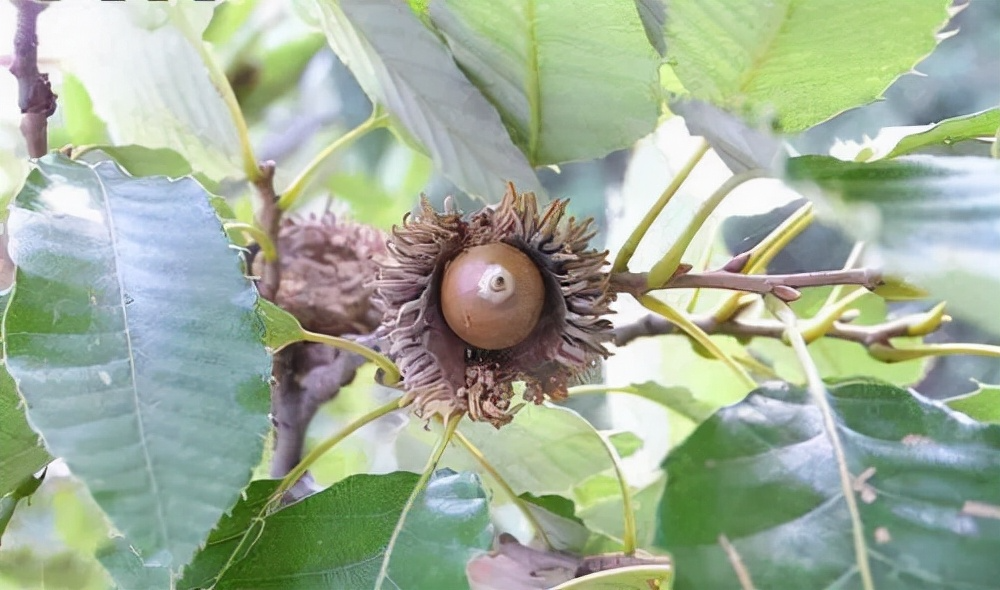
【Name】Quercus variabilis Blume.
【English name】Cork Oak
[Classification] Fagaceae (Fagaceae) Quercus
【Origin】Mediterranean coast of North Africa
Morphological characteristics: Quercus variabilis, deciduous tree, up to 25cm tall, 1m in diameter at breast height; crown broadly ovate. Many trunks , gray-brown, deeply fissured, with a particularly thick cork layer. Branchlets light brown, glabrous; winter buds conical, leaves oblong- lanceolate , 8-15cm long, acuminate at the tip, cuneate at the base, with awn-like serrations on the margins, grayish-white star-shaped hairs on the back, male inflorescences born at the lower part of the current year's branches, female flowers solitary or twin in the axils of the current year's branches. Involucre cup-shaped, scales recurved, hairy. Nuts ovoid or elliptical. Flowering May; Fruits mature in September-October of the following year .
76. Azalea
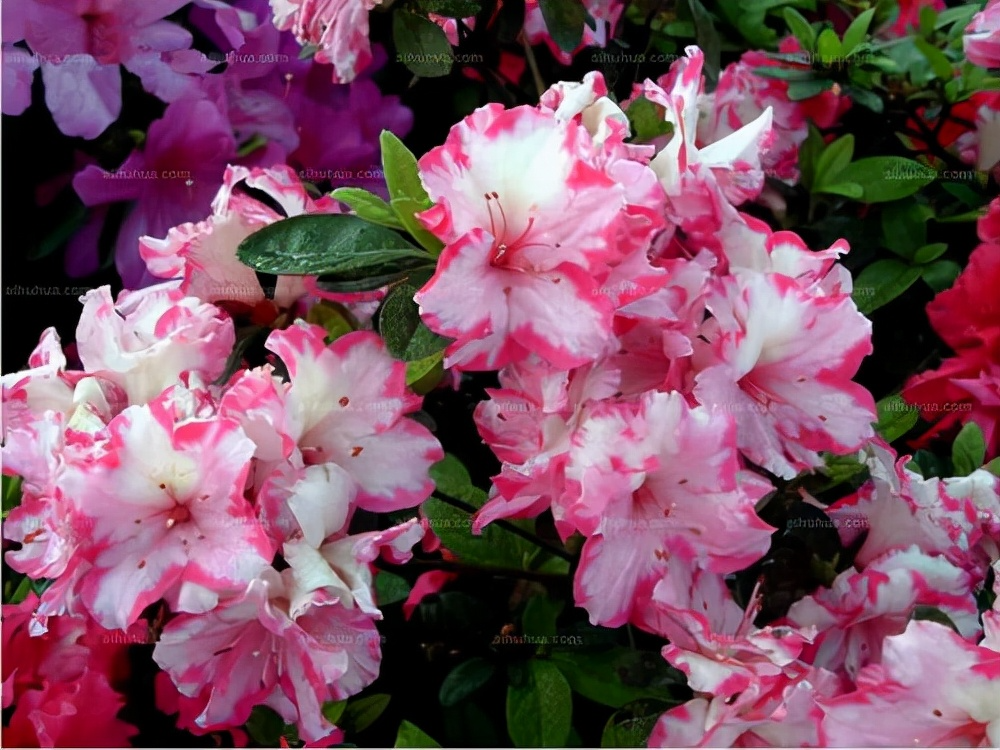
【Family name】Ericaceae
【学名】Rhododendron symsii Planch.
【拉丁名】Rhododendron simsii & R.spp.(rhododendrons - subgenus Pentanthera、 rhododendrons - subgenus Titsushi ).
[Other names] Azalea, red azalea, azalea, rhododendron , rhododendron, rhododendron, Qingming flower
77. Holly
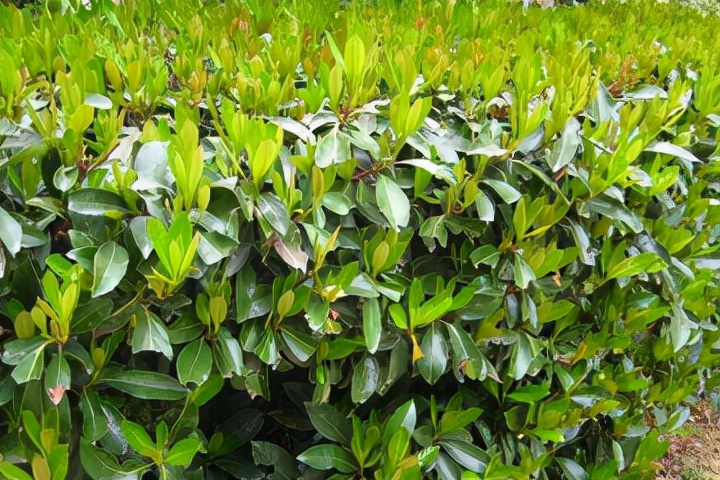
Latin name: llex latifolia Thunb
Family: Aquifoliaceae
Genus: Holly
78. Osmanthus fragrans
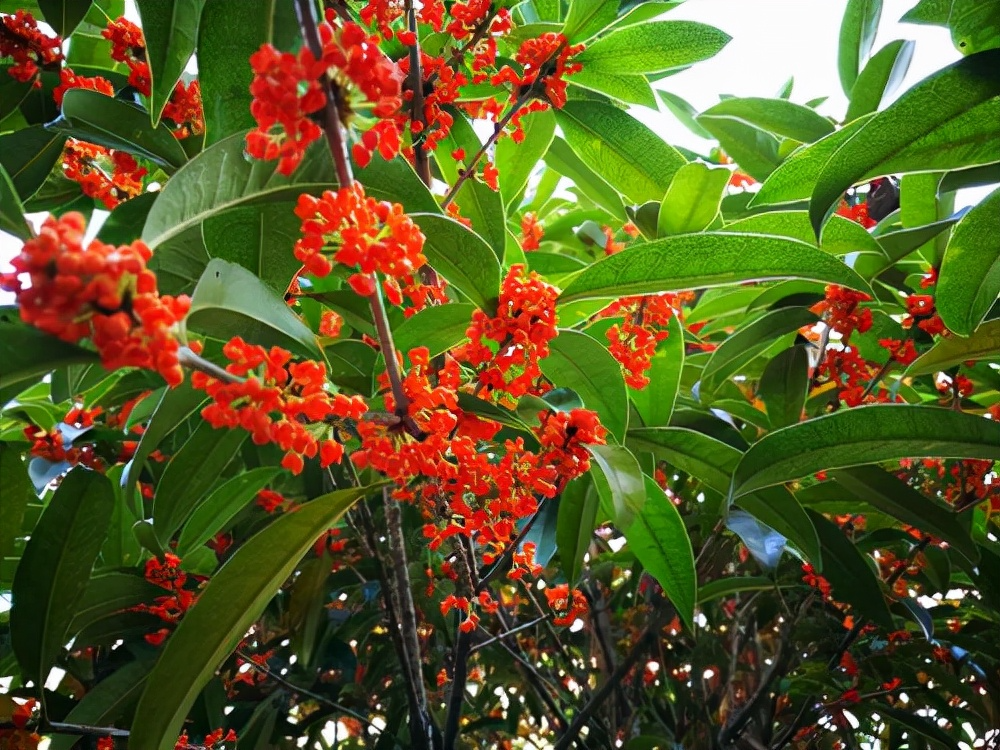
Latin name: Osmanthus fragrans
Botanical name: Osmanthus fragrans
Family: Oleaceae
Genus name: Osmanthus
M,.,Ecological classification: Woody plants > Evergreen shrubs
Category: Flower viewing
Morphological characteristics: Flowers are orange-red or orange-yellow, with a weak fragrance
Growth habit: Weakly positive, prefers warm and humid climate
Landscape use: Garden ornamental
79. Rhus chinensis
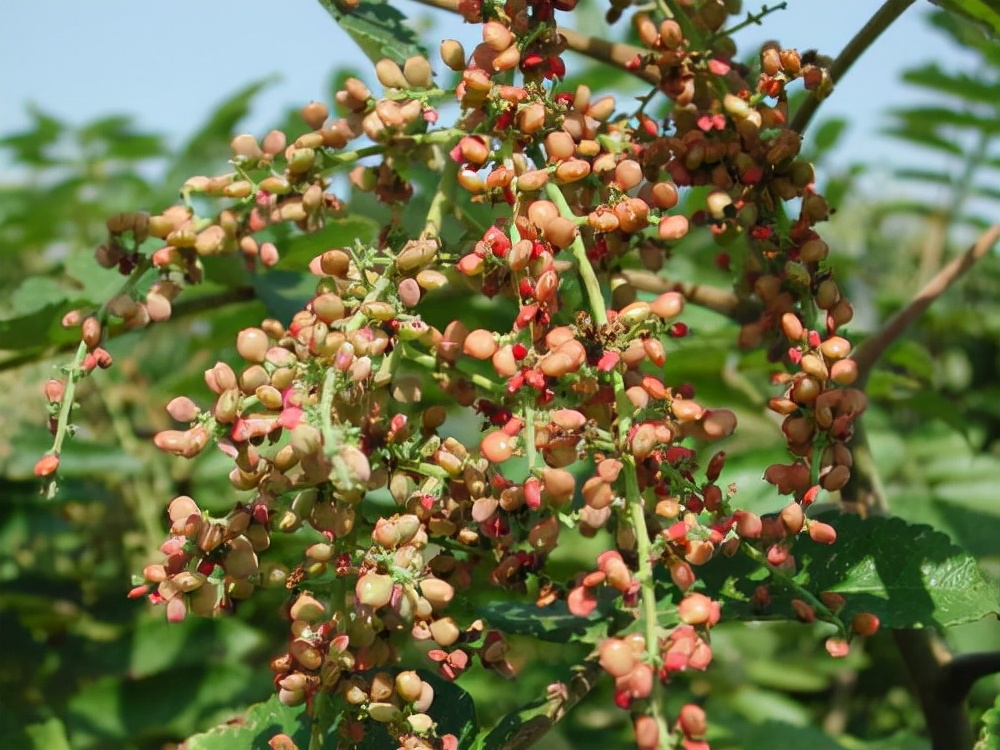
Family: Anacardiaceae
Genus: Rhus
Second legal name: Rhus chinensis
Medicinal use: Rhus chinensis has high medicinal value, and all parts can be used as medicine. The root is used as medicine as " Salt bran root", which has the effects of expelling wind, removing dampness, reducing swelling, and softening hard masses. The root bark without the cork is "Salt bran root white bark", which has the effects of removing rheumatism, dispersing blood stasis, clearing away heat and detoxifying; it can treat cough, rheumatic bone pain, edema, jaundice, traumatic injury, swelling, scabies, snake bites, etc.
80. Toona sinensis
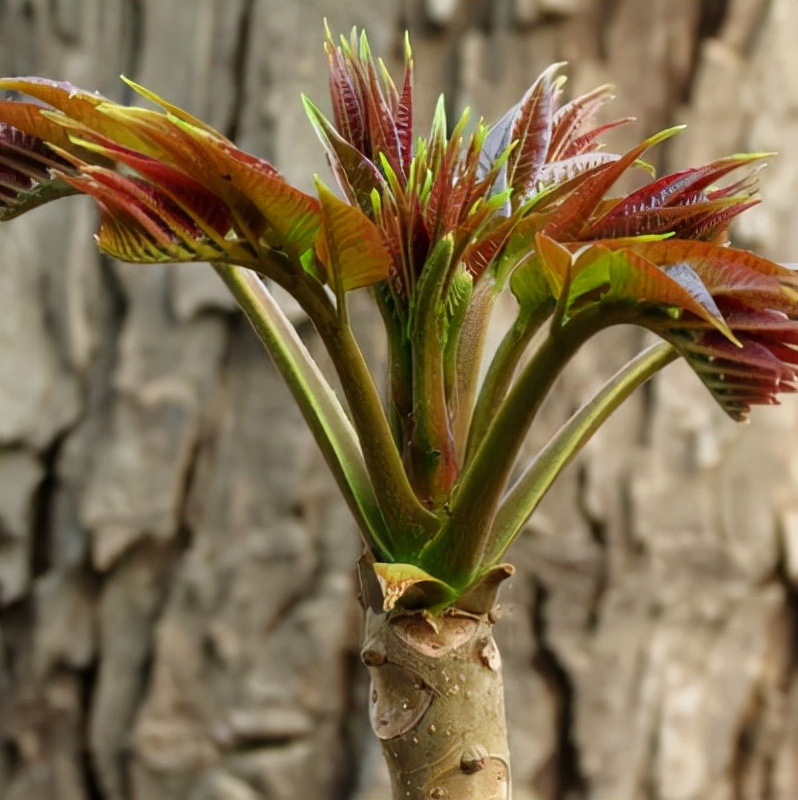
Chinese name of the species:
Species Latin name: Toona ciliata Roem.
Chinese name: Meliaceae
Latin name: Meliaceae
Genus Latin name: Toona
Flora: 43(3): 040
Morphological characteristics: deciduous or nearly evergreen tree
Conservation value: Toona is a precious fast-growing timber species in tropical and subtropical areas. The wood is reddish brown, with beautiful patterns and tough texture. It is most suitable for making high-grade heartwood with dark reddish brown, sapwood with lighter color, straight texture, fine structure, beautiful patterns, light and soft material, insect-proof and rot-resistant, fast drying, small deformation, easy processing, good paint and adhesive properties. It is a good material for construction, furniture, ships, plywood, and interior decoration. The bark contains 11-18% tannin, which can be extracted into tannin.
81. Tuberose
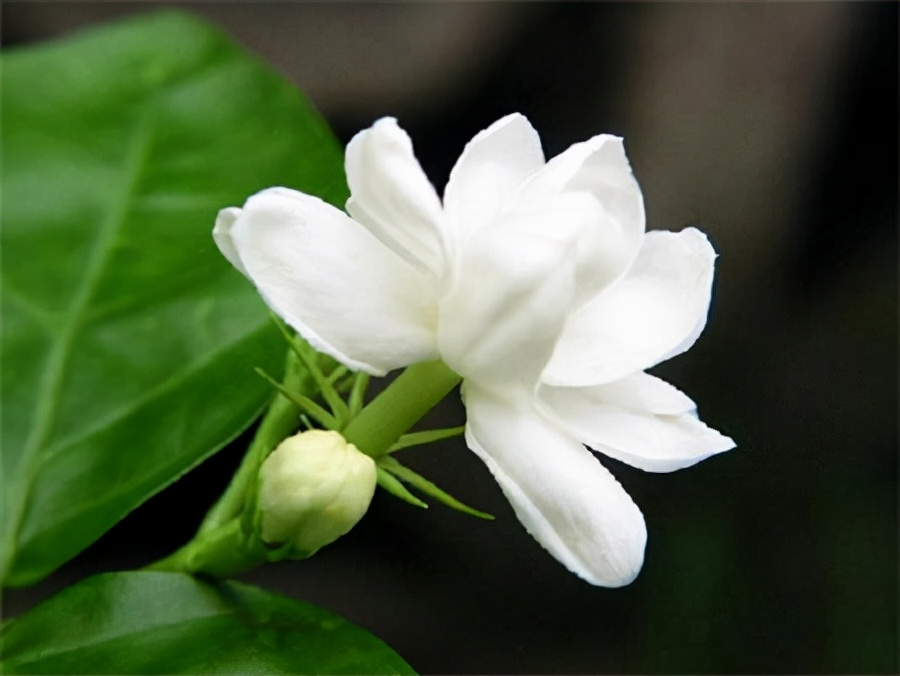
Chinese name: Tuberose
Species name: Telosma cordata (Burm. F.) Merr.
Chinese name: Asclepiadaceae
Latin name: Asclepiadaceae
Genus Chinese name: Tuberose
Genus Latin name: Telosma
Domestic distribution: Guangdong , Guangxi , Hainan , Fujian , Taiwan , etc. in South China
Foreign distribution: Cultivated in tropical and subtropical Asia, Europe and America
Uses: Cultivated for viewing. Tuberose has slender branches and blooms in summer and autumn. The yellow-green flowers open in the evening , emitting bursts of strong fragrance. In the south, it is often used to decorate courtyards, windows, ponds and pavilions. It is also a semi-wild vegetable that is eaten with fresh flowers and buds . It has the effect of clearing the liver and improving eyesight, and can treat red and swollen eyes, measles on the eyes, and corneal cataract removal.
82. Petunia
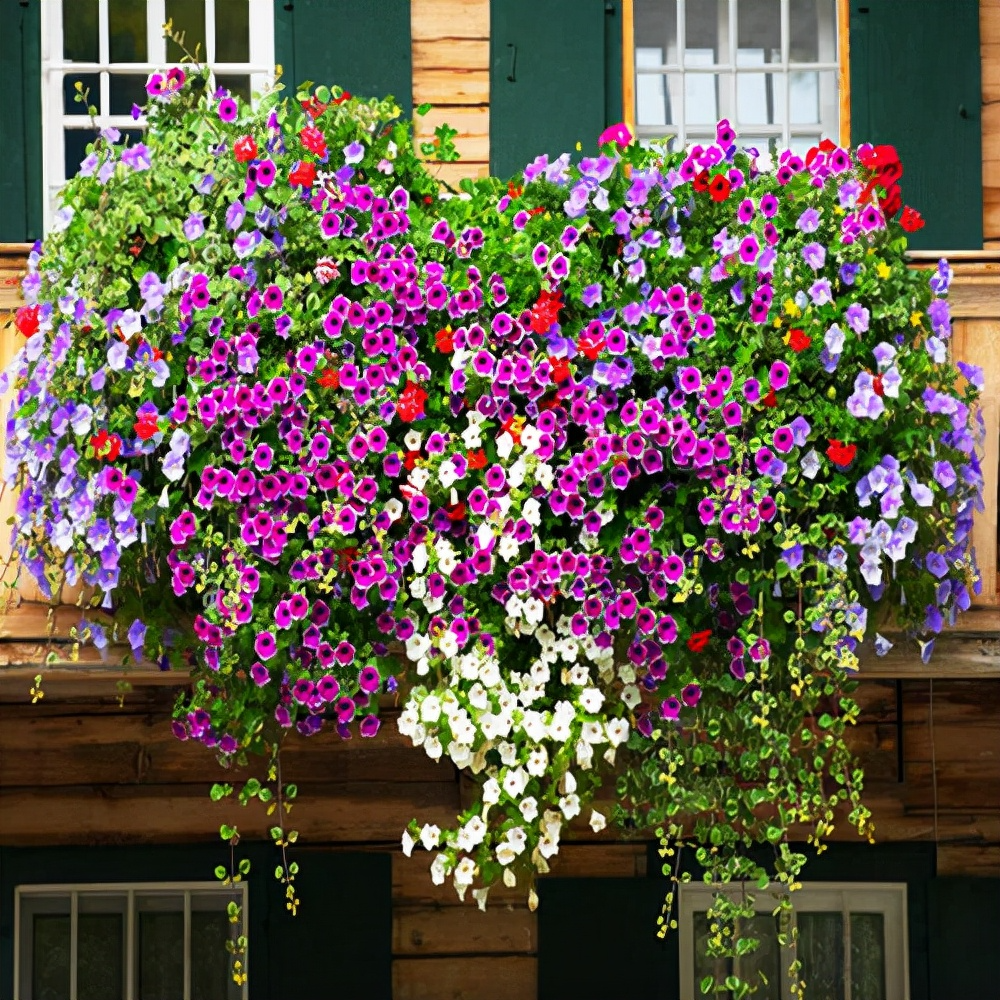
Petunia, scientific name: Petunia hybrida
Other names: Petunia, sweet potato flower, and morning glory.
Family: Solanaceae, Solanum
Landscape uses: used for beautification of potted plants, hanging pots, flower stands and flower beds. Large-scale cultivation has a ground cover effect, creating a magnificent and pleasing landscape.
83. White Chrysanthemum
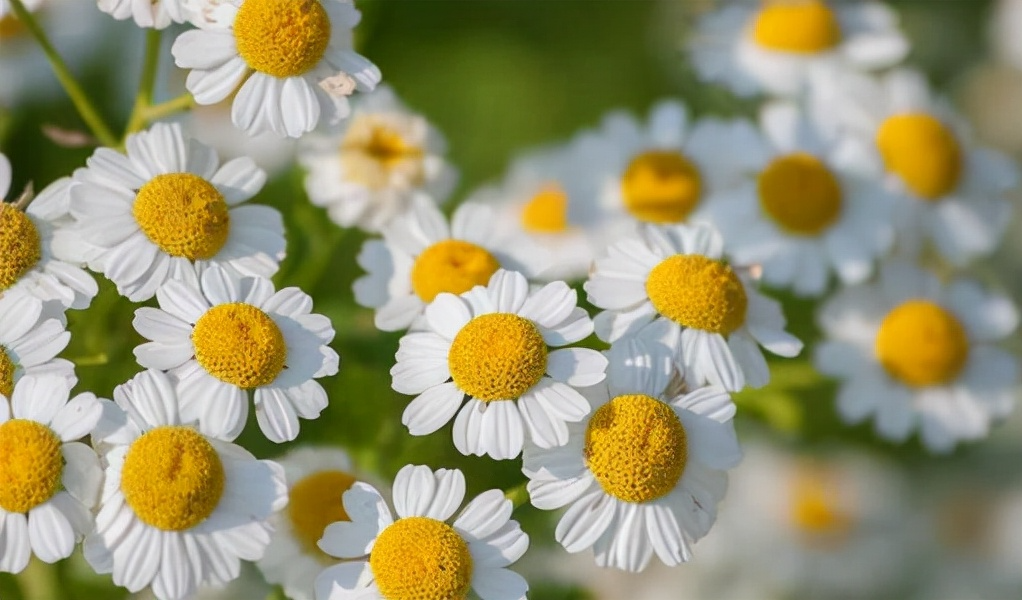
Scientific name: Chrysanthemum paludosum
Alias: Jingjing Chrysanthemum,
Family: Asteraceae
Genus: Chrysanthemum
Garden application: White crystal chrysanthemum is short and strong, with many flowers, early flowering period and long flowering period. It is dazzling when planted in patches. It is also suitable for potted plants or early spring flower bed beautification. It can also be planted as a ground cover flower.
84. Zinnia
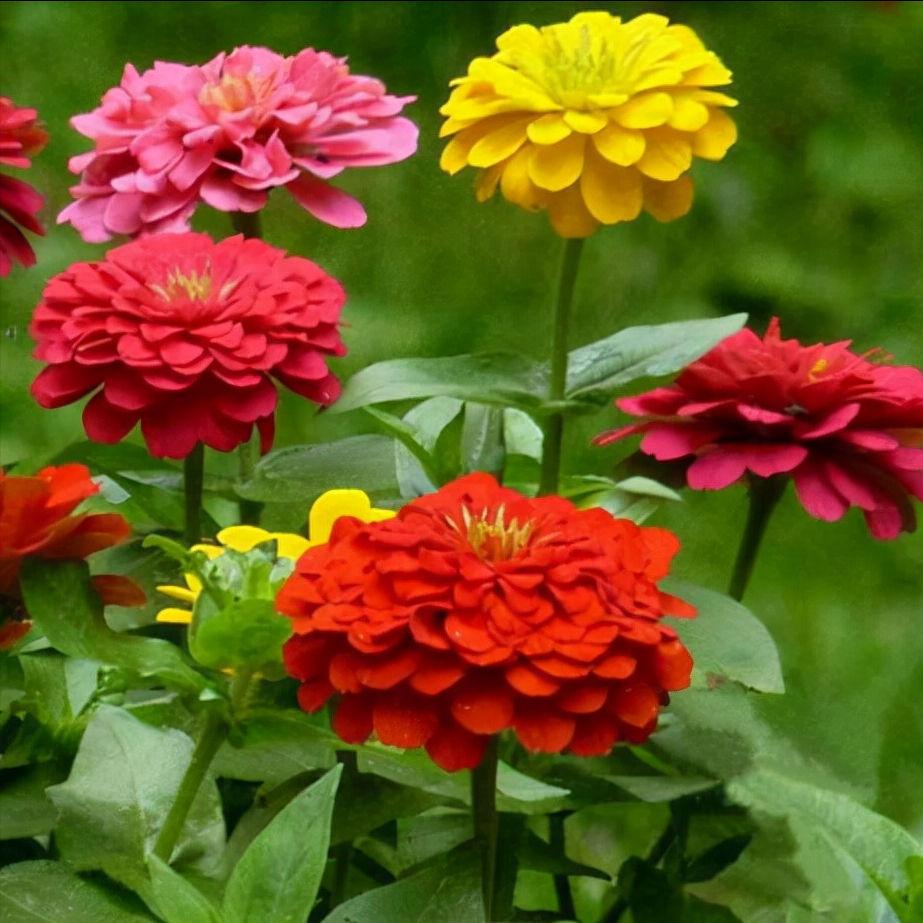
Scientific Name: Zinnia elegans
Other names: Zinnia, Opposite-leaf plum, Step by Step
Family: Asteraceae
Genus: Zinnia
85. Scutellaria barbata
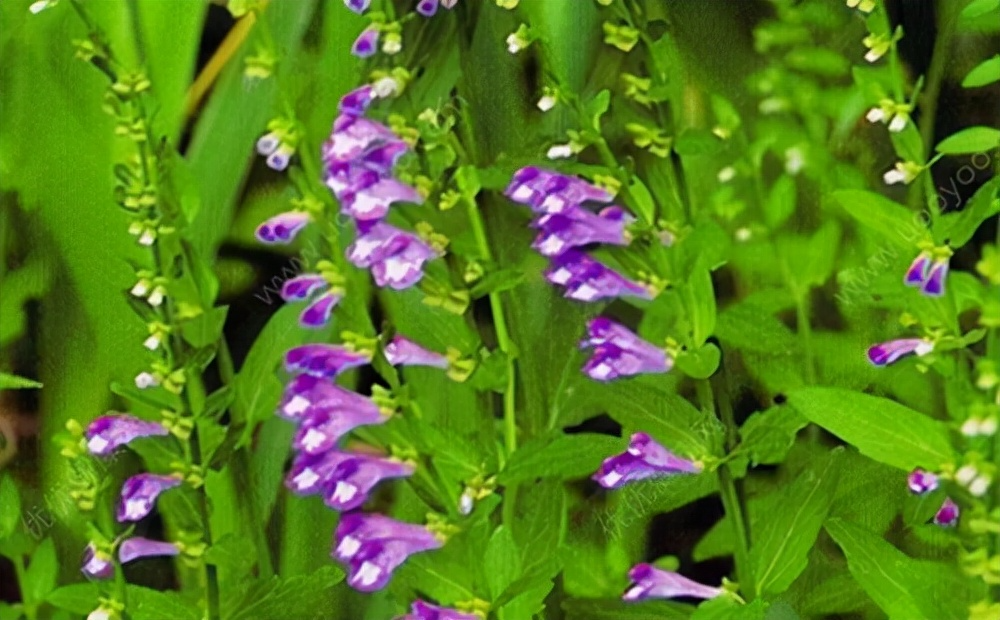
Portulaca grandiflora, scientific name: Portulaca grandiflora
Other names: pine leaf peony, sunflower, immortal, large flower purslane,
Family: Portulacaceae
Genus: Portulaca
Landscape applications: The flowering period is long, the colors are rich and colorful, and the number of flowers is large. It is a good plant material for flower beds, flower borders, and sunny ground cover, and can also be potted for viewing.
86. Cosmos
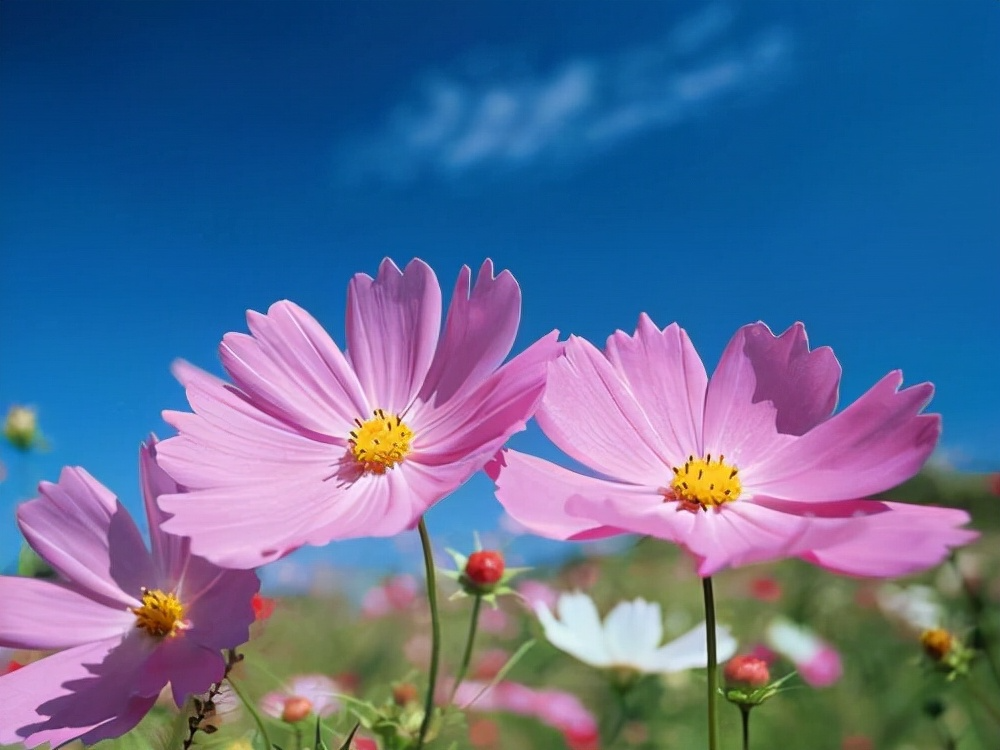
Cosmos, scientific name: Cosmos bipinnatus
Other names: Autumn chrysanthemum, Cosmos chrysanthemum, Broom plum
Family: Asteraceae
Genus: Autumnleaf
Gardening use: Cosmos is tall, with elegant leaves and rich colors, including pink, white, and deep red. It is suitable for arranging flower mirrors . It can be planted in patches on the edge of the lawn, around the bushes, and on the roadside to beautify the greenery, which is quite wild. The double-petal varieties can be used as cut flowers. It is suitable for flower border background materials, and can also be planted on the edge of the fence, rocks, cliffs, tree altars, or next to the house.
87. Daisy

Daisy, scientific name: Bellis perennis
Other names: Enmeigiku, Shungiku,
Family: Asteraceae
Genus: Daisy
Medicinal value: Daisy is also called dry chrysanthemum and white chrysanthemum, and its medicinal value is very high. Daisy has a long history of cultivation, and its medicinal value ranks first among the four famous chrysanthemums. Plant one or two plants on each ridge, take their flowers, and you can reduce the amount of tea by half. The tea is bitter and cold, and it can be brewed with bitter chrysanthemum.
88. Aster
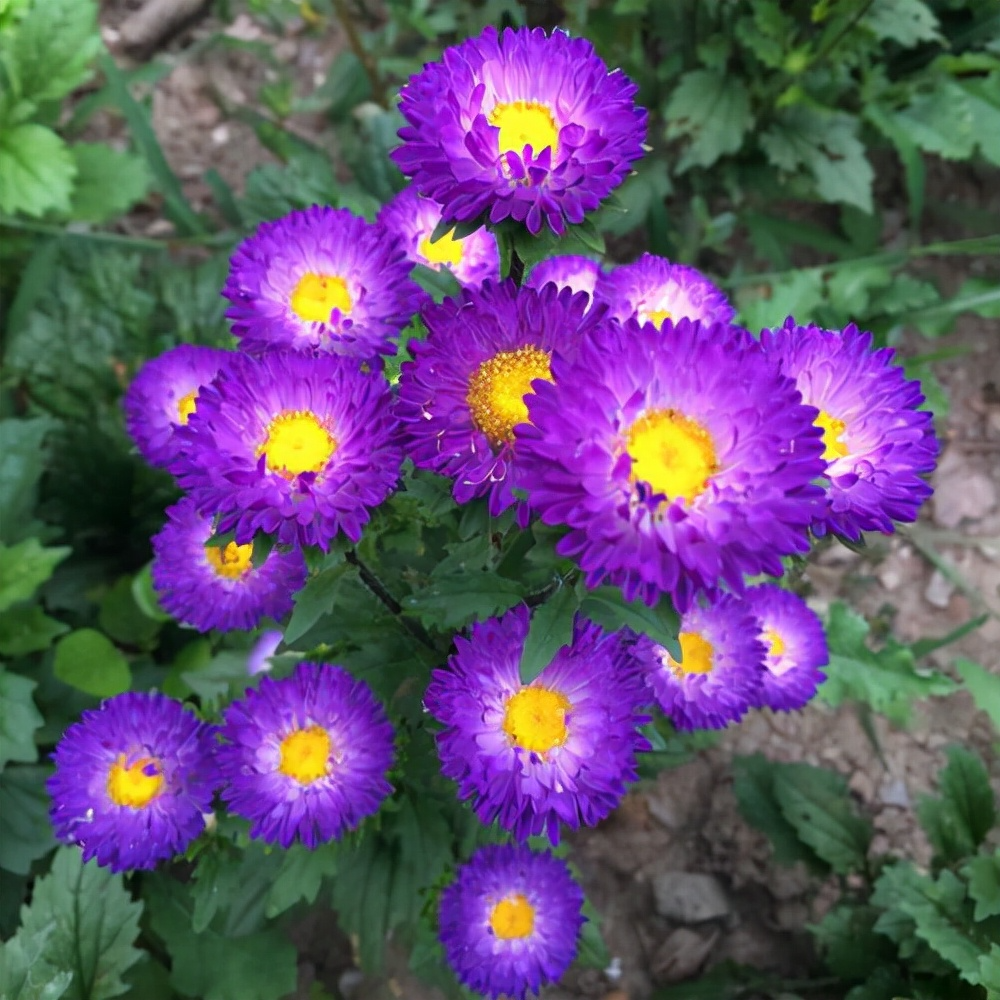
Aster, scientific name: Callistephus chinensis
Other names: blue chrysanthemum, Jiangxi chrysanthemum, May chrysanthemum,
Family: Asteraceae
Genus: Chrysanthemum
Medicinal value: Medicinal part: Flowers are used as medicine. Indications: Chinese medicine treats red, swollen and painful eyes, blurry vision. Mongolian medicine treats plague, influenza , headache, "outbreak", furuncle, toxic heat, scarlet fever, measles.
Nature and function: Chinese medicine tastes bitter and is neutral. It clears the liver and improves eyesight. Mongolian medicine tastes bitter, is neutral, blunt and soft. It kills stickiness, clears heat, detoxifies, dries pus and reduces swelling.
89. Moth and butterfly flower
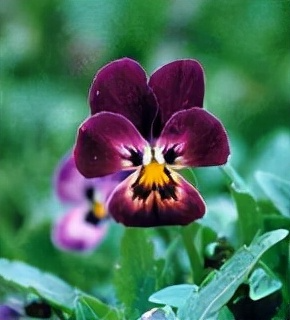
学名:Schizanthus pinnatus
Other names: butterfly grass, shepherd's purse flower
Family: Solanaceae
Genus: Lycoris
Morphological characteristics: Many branches, with glandular hairs all over the plant. Leaves are pinnately divided 1-2 times. Racemose panicles, flower diameter 1.8-4.0cm, blooming in spring and summer, with colors such as white, pure white, dark red, and blue-purple.
Growth habits: Requires a cool and ventilated environment, slightly cold-resistant, likes fertile, well-drained soil, and should be placed in a sunny place in winter.
90. Star Flower
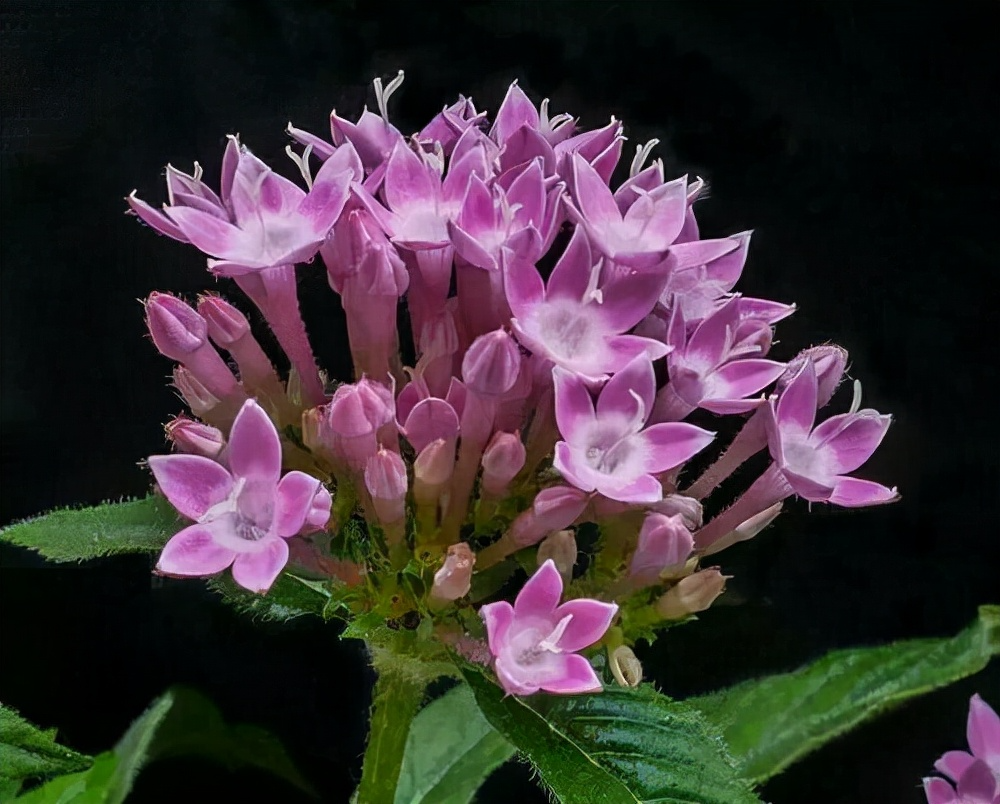
Scientific name: Pentas lanceolata Deflers
Other names: star-shaped flower, umbrella flower, herbal daffodil flower
Family: Rubiaceae
Genus: Pentaphyllum
Ornamental application: 1. Ornamental 2. Maintenance and pest control 3. Management after planting
91. Delphinium
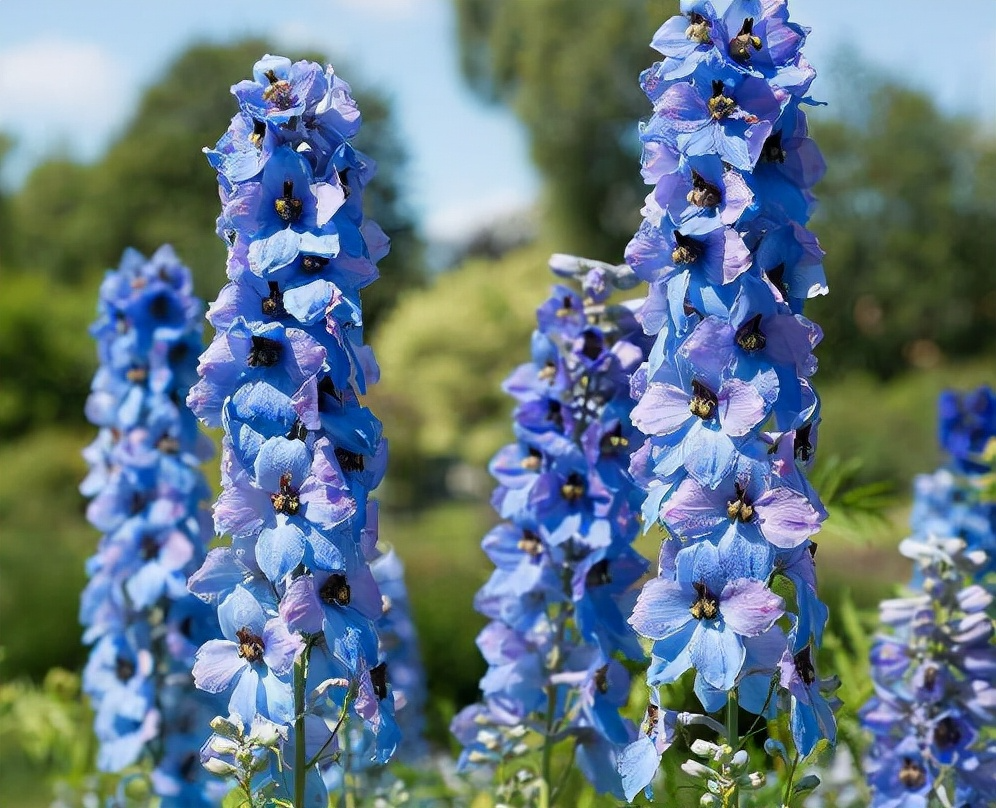
Scientific Name: Delphinium grandiflorum
Other names: Delphinium grandiflorum, Delphinium
Family: Ranunculaceae
Genus: Delphinium
Landscape use: Delphinium has a unique shape and elegant colors. It can be planted in clusters , flower beds , and flower borders.
Can also be used as cut flowers .
Medicinal value: The whole plant and seeds can be used as medicine to treat toothache. The stem and leaf juice can kill insects.
92. African marigold
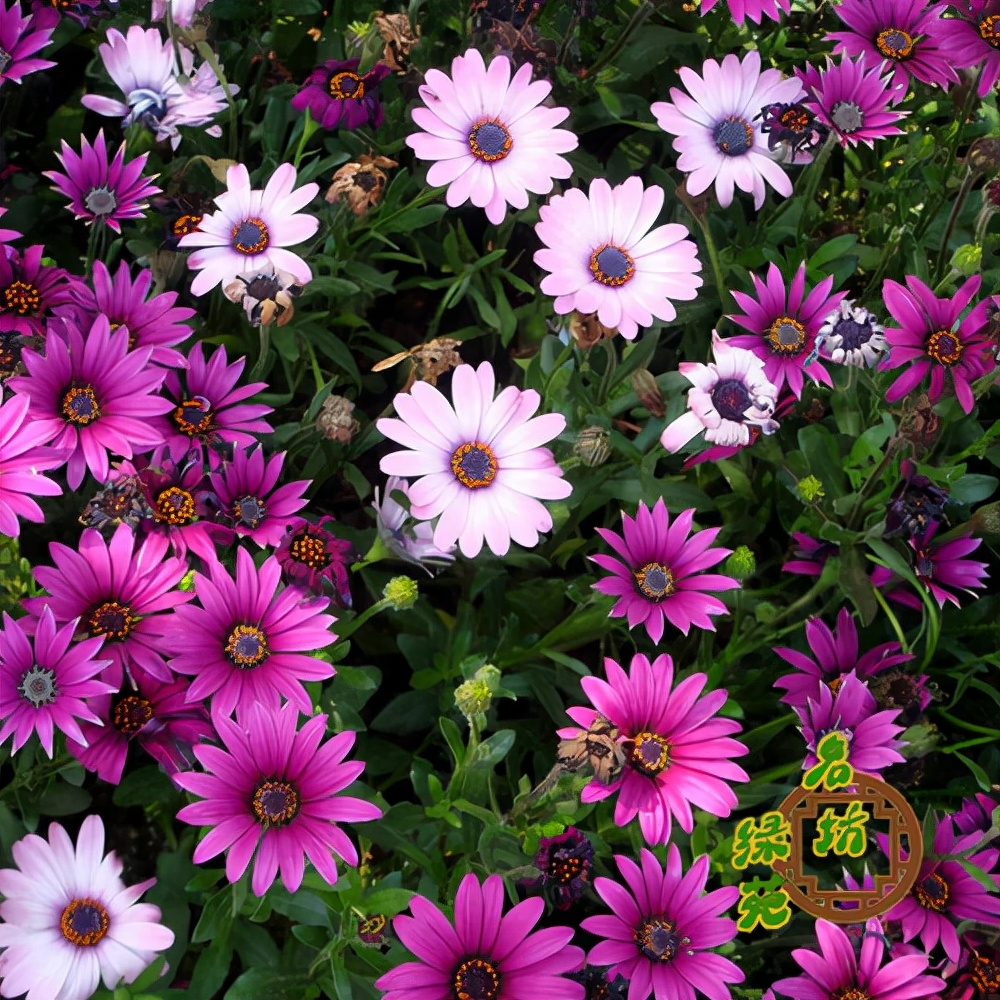
Scientific Name: Osteospermun 'PassionMix'
Family: Asteraceae
Genus: Marigold
Garden application: It can be used for beautification of parks, residential areas and urban roads. It is a highly ornamental flower.
93. African violet
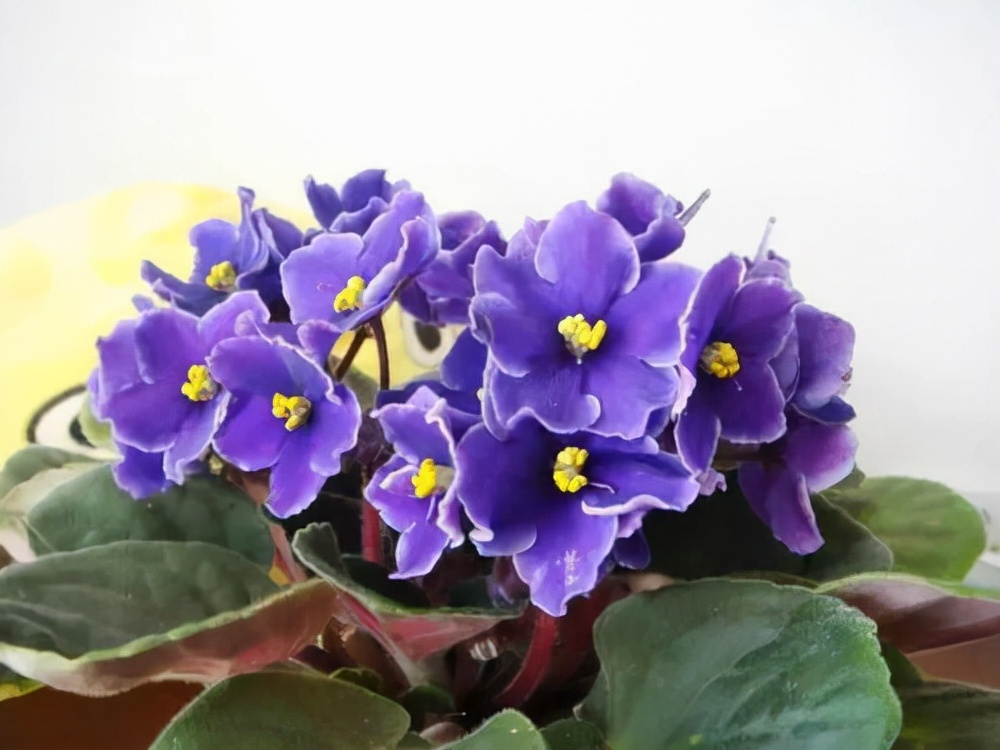
Scientific Name: Saintpaulia ionantha
Other names: African violet, African purple violet
Family: Gesneriaceae, African purple genus
Landscape use: African violets are short plants that can bloom all year round. They have thick leaves like velvet, elegant flowers, and rich, colorful colors. They are excellent indoor ornamental plants. Because of their long flowering period , shade tolerance, small and beautiful plant shape, potted plants can be placed on windowsills, living rooms , and desks as good embellishments and decorations. They are excellent indoor flowers. The ones cultivated now are all hybrids, and there are many horticultural varieties, with thousands of them. There are single petals and double petals, and the colors are white, pink, red, blue, etc.
94. Bluebell
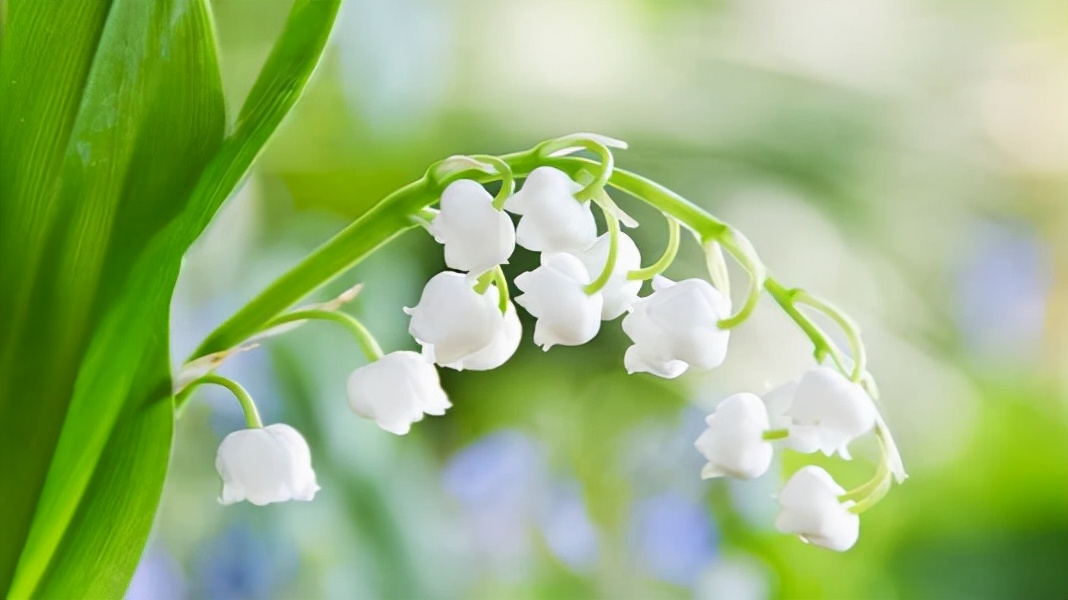
Scientific name: Campanula medium
Other names: bell flower, tile tube flower,
Family: Campanulaceae
Genus: Campanula
Horticultural varieties: Campanula, dwarf species, cool interlaced species, the calyx and corolla are the same color and shape, forming two layers inside and outside. Cup-saucer species, the calyx is petal-shaped and the same color as the petals, the opened saucer can reach a diameter of 7.5 cm, and the corolla is cup-shaped. Common varieties include blue "Blue Bell", purple "Amethyst", white "Bell", pink "Pointed Neck", etc.
95. Impatiens
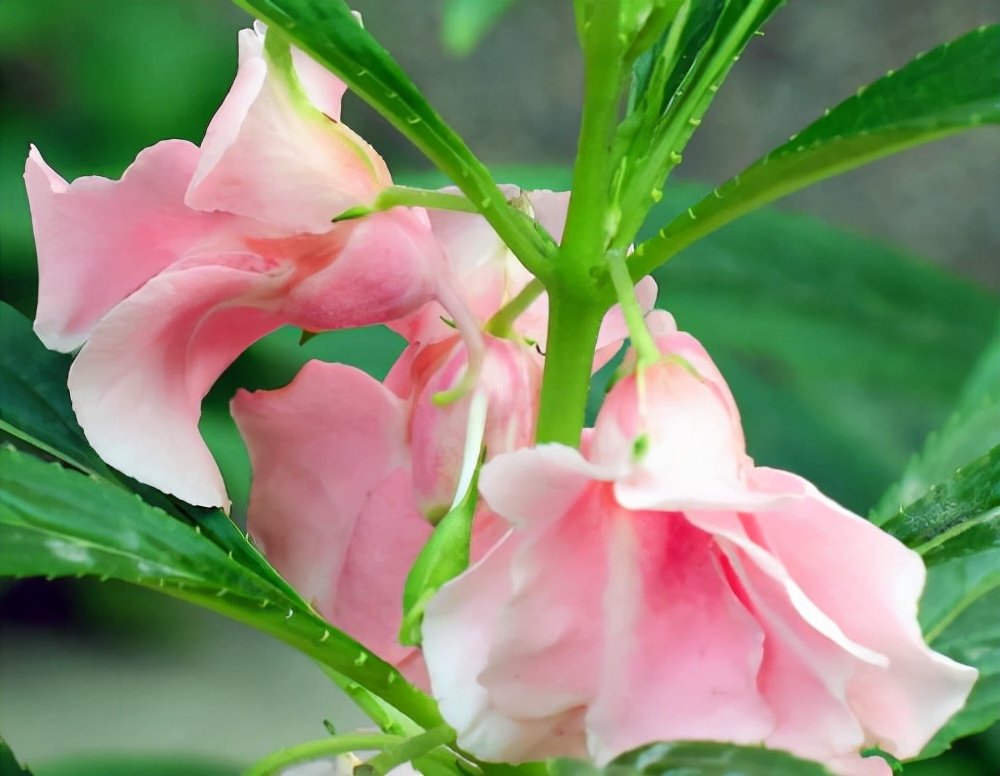
Scientific Name: Impatiens balsamina
Other names: henna, small peach, fighting temper, bone-penetrating grass
Family: Impatiens
Genus: Impatiens
Uses and functions:
The young leaves of Impatiens can be blanched and then eaten cold with oil and salt.
It can be used for viewing, not only as a flower border and bonsai installation, but also as a cut flower .
Henna, also known as HENAA in India and the Middle East , has a natural reddish-brown pigment. Middle Eastern people have long planted this plant and used its juice to dye their nails and decorate themselves. According to records, Cleopatra used henna to dye her hair. The famous Indian body painting is also dyed with it.
96. High Snow Wheel
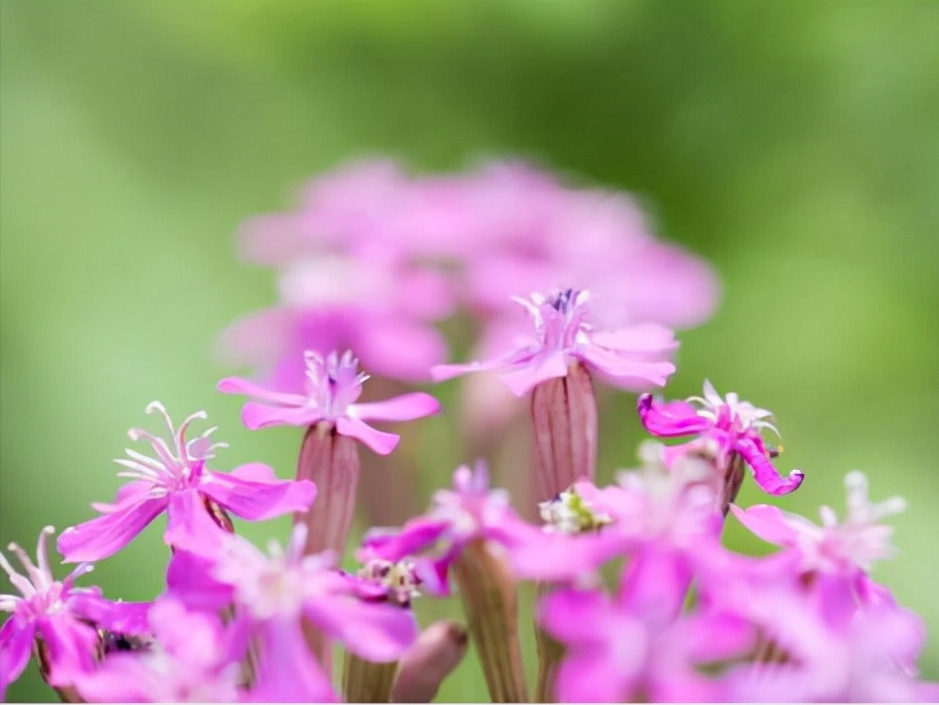
Scientific name: Silene armeria
Family: Caryophyllaceae
Genus: Flyweed
Growth habits: It is cold-resistant and drought-resistant, likes warmth and dislikes high temperature and humidity. The suitable temperature for growth is about 15 to 25 degrees C.
Ornamental applications: can be used as cut flowers or to arrange flower borders.
97. Cineraria
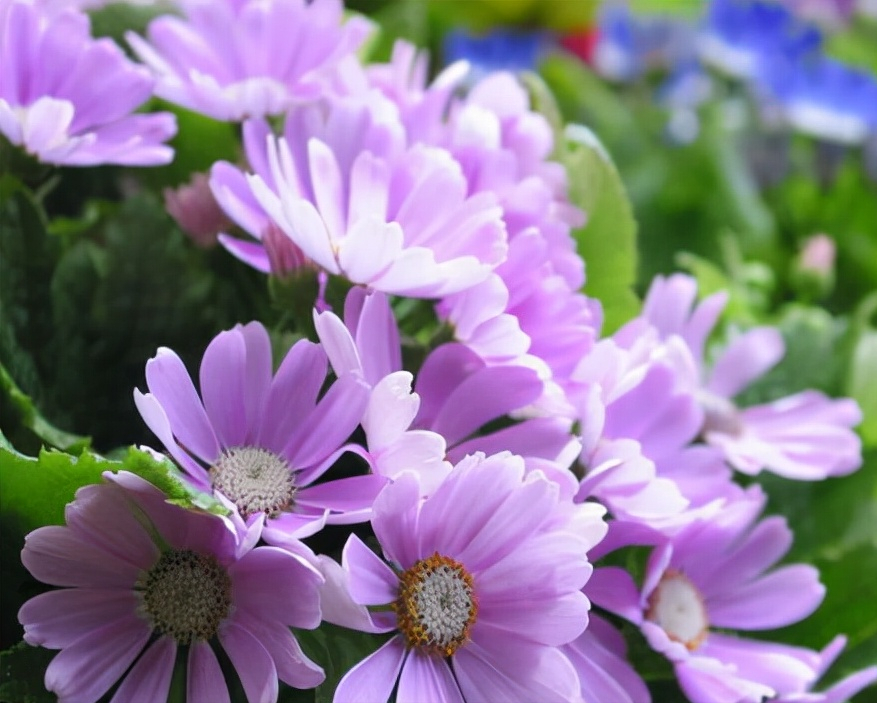
Scientific name: Senecio cruentus
Other name: Rich Chrysanthemum
Family: Asteraceae
Genus: Senecio
Morphological characteristics: The plant height is about 60 cm, the stem is covered with white frost, and there is a section of mucus on the upper part. The leaves are opposite, ovate-lanceolate. The inflorescence is compound and terminal, with a peduncle; the petals are light red, rose red, white or snow blue, and the flower diameter is about 1.8 cm. The flowering period is from May to July. The capsule is oblong, and the seeds are kidney-shaped with tubercle-like protrusions. [1] Ornamental application: Can be used as cut flowers or flower borders
98. Katsura bamboo incense

Scientific name: Cheiranthus cheiri,
Other names: Fragrant violet, yellow violet
Family: Cruciferae, Oleander
Drug name: Osmanthus fragrans
Source: The flower of the dicotyledonous herbal medicine, the genus Ampelopsis, in the family Cruciferae.
Effect: promoting blood circulation, dredging menstruation, purging
Main indications: Treat irregular menstruation, amenorrhea and constipation.
99. Mimosa
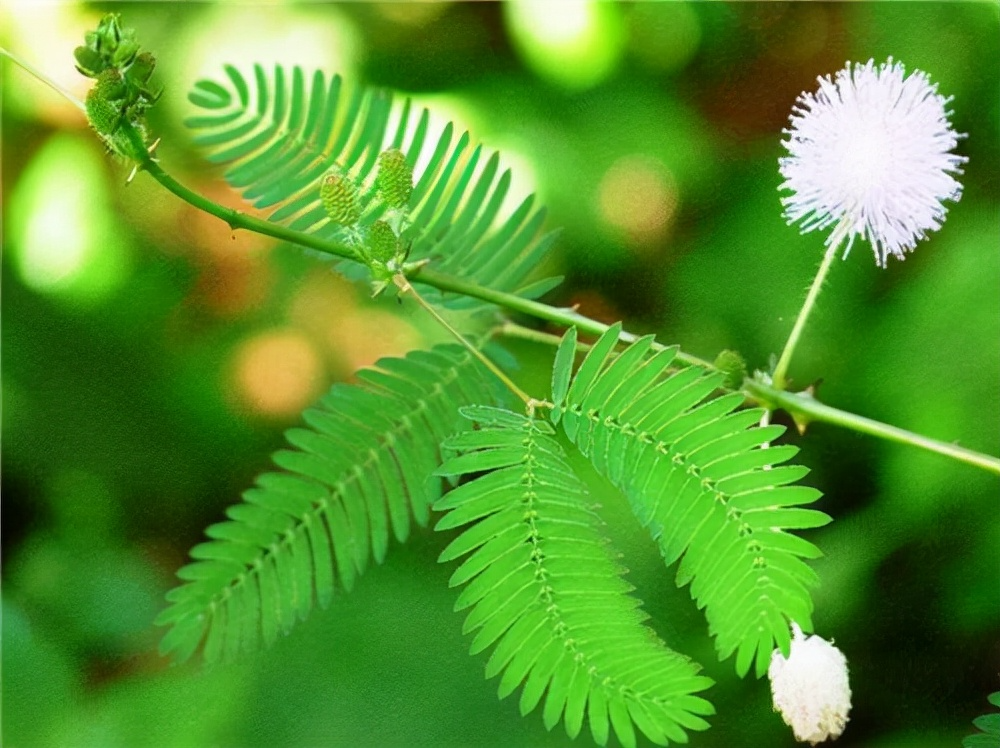
Scientific Name: Mimosa pudica
Other names: Mimosa pudica, Mimosa pudica
Family: Fabaceae, Mimosa
Appreciation: Mimosa has a scattered plant shape, and its pinnate leaves are slender and beautiful, and its leaves close when touched; Mimosa has many and delicate flowers, which are very charming and give people the impression of being weak and beautiful. It can be planted in the corner of the courtyard or in a pot on the window table.
100. Nasturtium
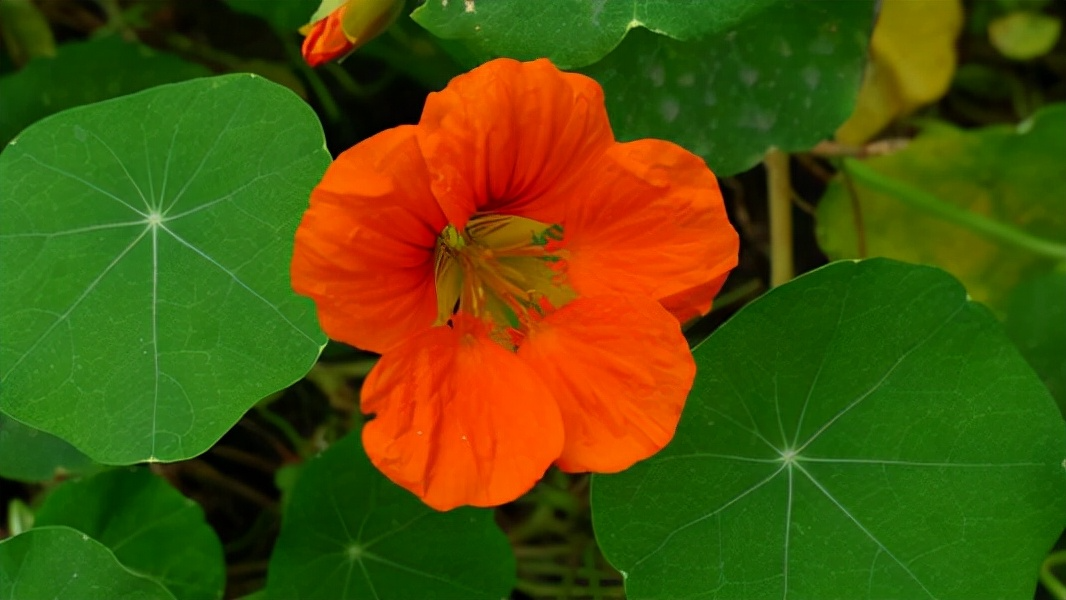
Scientific name: Tropaeolum majus
Other names: Golden lotus, dry lotus leaf
Family: Tropaeolum family Tropaeolum
Gardening applications: Nasturtium has lush leaves and beautiful flowers, and can be planted in pots for indoor viewing or to decorate balconies and windowsills.